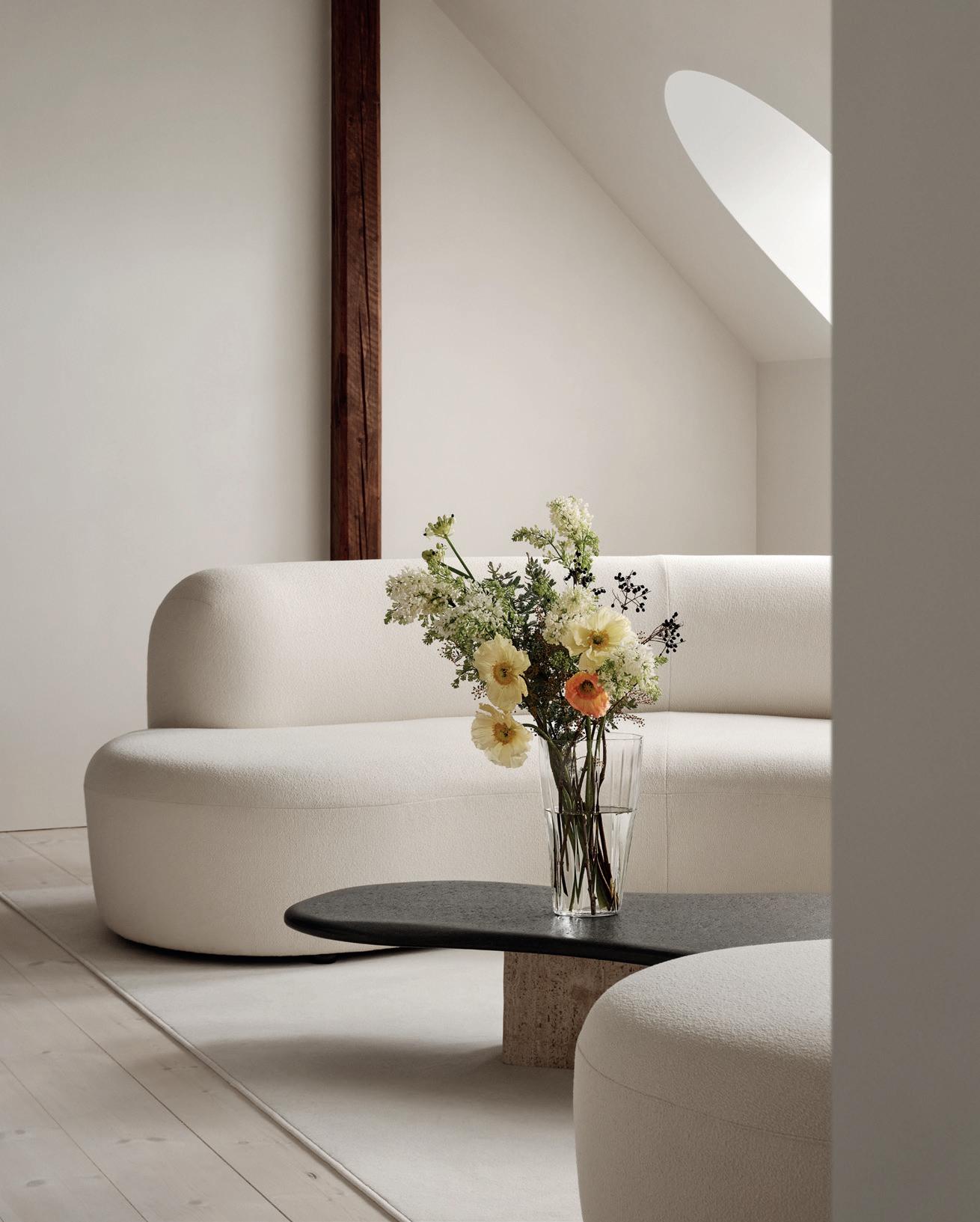SPECIAL THEME: MADE IN SWEDEN
TOP CAMPING ESSENTIALS 6
DIRECTOR
BENT HAMER
ON CRAFTING COMPELLING CINEMA
THE NORDIC TRAVEL
PHOTOGRAPHY ISSUE



SPECIAL THEME: MADE IN SWEDEN
DIRECTOR
BENT HAMER
ON CRAFTING COMPELLING CINEMA



When I think of summer in Scandinavia, the images I conjure are from my childhood in Denmark: the white beaches of Bornholm and the islands of Fyn; humped sand dunes stubbled with blue, razor-sharp grass; the sweet cloying fragrance of overripe strawberries; the black heart and pillar of flame of a bonfire on midsummer night.
They’re sweet and common memories. Scandinavians have a penchant for ‘friluftsliv’ (‘the outdoors lifestyle’) and, as the number of daylight hours reaches its solstice peak, these languorous days are for water, sky, fire and good company. So, in this July issue of Scan Magazine, it’s all about getting outside.
Looking for adventure inspiration? Throughout the month of June, Scan readers shared their favourite travel moments in the first edition of Scan’s Nordic Travel Photography Competition. Check out the winning shots in our photo showcase and discover 11 new names to add some wanderlust to your Instagram feed.
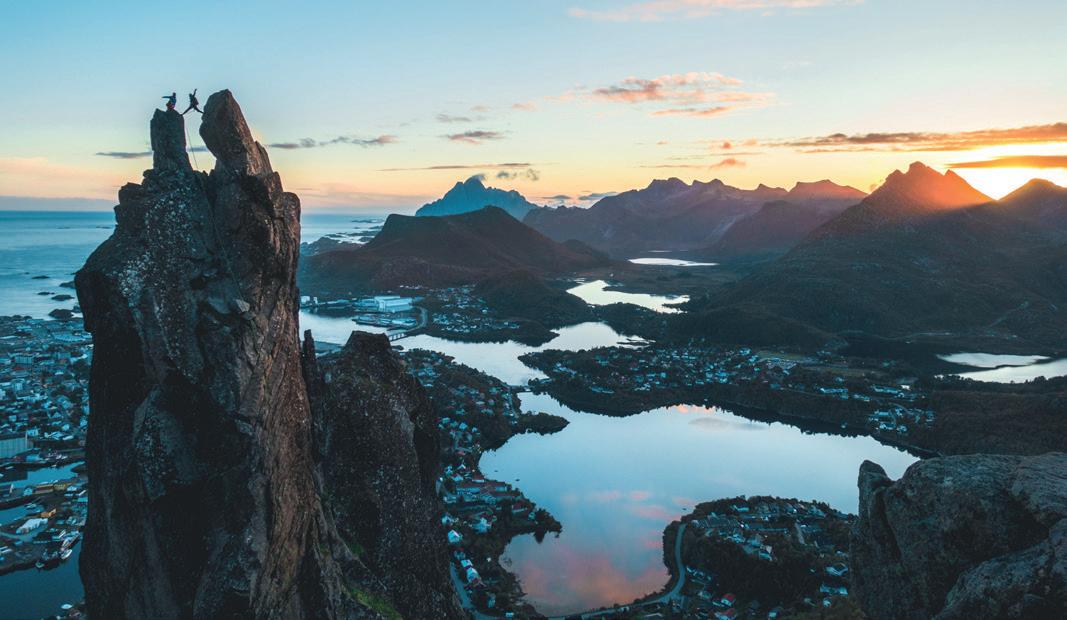
Then, join us as we road-test six essential camping products by the most reputable Scandinavian outdoor brands in this month’s We Love This column, and shop for sunny styles in the Fashion Diary. If you’re spending the summer in Finland, our Top Expe-
riences in Finland theme has all the archipelago island-hopping inspiration you could want, while the Culture Calendar has you covered for the hottest arts events in the Nordics in July.
Looking for even more culture? In this month’s feature interview, we catch up with Norwegian writer and director Bent Hamer in Paris as he reflects on a life of storytelling and discusses his latest film The Middle Man
If you’d like to play holiday-destination roulette, head to the Best of the Month section for our pick of Scandinavia’s hottest spots to eat, stay and play in July - your next trip might surprise you. And there’s plenty more to get your teeth into, from profiles of the biggest innovators in Swedish business, to tips on home-brewing and sewing your own clothes.
And when you’re done, use this magazine to smack mosquitoes while you sit out late in the garden, or as an impromptu plate for BBQ skewers. Shade your eyes with it while you’re waiting for a fish to bite, or set it on fire to get the campfire going.
Lena Hunter, Editor
26 Norwegian director Bent Hamer on crafting compelling cinema
We catch up with Norwegian writer and director Bent Hamer in Paris as he reflects on a life of storytelling, and discusses his latest film The Middle Man – a black comedy set in a fictional town deep in the Rust Belt, where the American dream has gone so sour that the local council have hired a middle man to break bad news to its citizens.
6 Summer essentials: camping gear and fashion must-haves
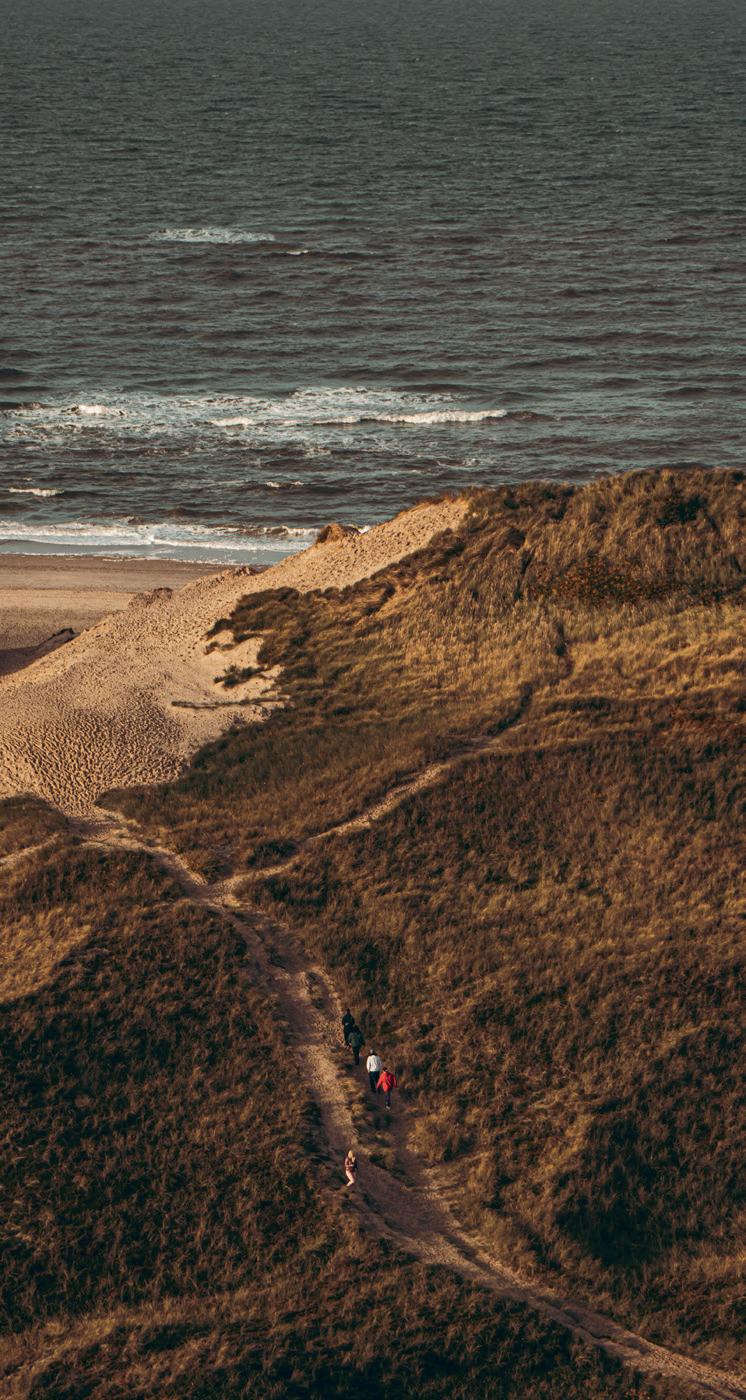
Discover our pick of six essential camping products by the most reputable Scandinavian outdoor brands in this month’s We Love This Shop for sunny styles in Fashion Diary, where you’ll find underground and established labels to inspire your summer wardrobe. Plus, get to know a spectrum of independent designers making everything from moccasins and slippers to pottery, bricks and flooring in our wide-ranging round up of Nordic design talent.
24 Amateur hour or pro-in-the-making? On home-brewing and sewing your own clothes
Do you fantasize about getting married in a Nordic castle with stately granite walls, gold chandeliers, gilt-framed mirrors and a medieval ambience?
We visit an 18th century family-run farm in the magical countryside of Åland that offers just that.
Plus, our sustainability columnist Alejandra Cerda Ojensa extols the virtues of learning to sew your own clothes, and beer expert Malin Norman shines a light on the beer world’s diamonds-in-the-rough: the home-brewers.
32 Made in Norway
What makes Norwegian design special? In these interviews with Norwegian founders and creators, we dig into the philosophy behind their thinking, the history behind their successes, and the drive behind their products.
42 Top Experiences in Finland in 2023
Hoist the sails and explore the Åland archipelago on a unique sailboat tour of Finland’s historical Baltic Sea ports; visit a quaint municipality populated entirely by wooden cabins up to four hundred years old; stay in ‘farm-charm luxury’ at a countryside guesthouse surrounded by forested coastline; and have dinner on a secluded island.
46 Made in Sweden
“Swedish companies are at the cutting-edge of change in energy, green batteries, transport, healthcare, and manufacturing,” says Jan Larsson, CEO of Business Sweden, in his introduction to this special theme: a who’s who of the country’s most innovative companies who are championing the Made in Sweden philosophy.
70 Mini Theme: Innovation in Oslo
In this mini round-up, we speak to the founders and driving forces behind three of Oslo’s most forward-thinking companies, in industries spanning wellness, beauty, health and leisure.
100 The spirit of the north
Throughout the month of June, Scan readers shared their favourite travel moments in the first edition of Scan’s Nordic Travel Photography Competition. Here, we’re proud to present the 11 winning photographers – new names to watch whose atmospheric, well-timed and characterful shots capture the spirit of the north.

105 The best new events and music in Scandinavia
Where to go? What to see? It’s all happening here in this month’s Culture Calendar, packed with the best arts events in the Nordics. Meanwhile, our music columnist Karl Batterbee picks out the best new tunes in the region, and illustrator Maria Smedstad fumes over a mismatched breakfast decision.

This summer, we’re going into the backcountry. We’re going where the road stops and the sky yawns. We’re going on foot, packing light but smart. Our gear needs to be compact, innovative, simple, adaptable and, after the summer, it needs to face down the Nordic winter too. Scandinavia is brimming with outdoor brands making cutting-edge gear, and we’ve scoured the market to find the highest-quality survival items in the region. Here is our top pick of essential camping gear.
By Lena Hunter | Press photosThe patented RECCO technology is a two-part system, featuring an active detector, carried by the rescuer, and a passive reflector, carried by the user. The reflector, a lightweight, passive transponder that requires no power or activation, consists of a diode and an antenna, and makes the wearer searchable to rescuers. RECCO’s finger-sized adhesive reflectors can be applied to backpacks and helmets, while the lightweight reflector belt is worn as a standalone garment. The Norwegian innovation has already been integrated into garments by more than 150 brands, including Helly Hansen, Jack Wolfskin, Arc’Teryx, Patagonia and Peak Performance, but RECCO’s backpack and helmet reflectors can also be purchased separately and applied to existing gear. They do not age or wear out, and if not mechanically damaged they will last forever.
€30.95
Find a retailer via www.recco.com
This survival knife has everything a real bushcraft enthusiast needs. Its 3.2mm-thick blade is made from carbon steel for stability and strength, while black DLC-coating protects against rust and prevents light reflections. Combined with the textured handle, finger guard, vegetable-tanned leather belt strap, and symmetrical polymer knife sheath suitable for both right and left-handers, this knife enables safe, precise and efficient work in all weather. A Survival Kit with a fire starter, diamond sharpener and reflective paracord is integrated into the knife sheath, so this full-tang knife is always ready for whatever the wild throws at it.

€126.99
www.morakniv.se
This large, deliciously soft microfiber trekking towel from Danish outdoor specialist Asivik boasts excellent absorbency, is quick-drying and features a fabric clip for easy hanging. This 60 x 95 cm version offers an optimal surface area to pack-size ratio; it will fully dry a shaggy head of backpacker hair and folds into a 120gram wallet-sized pouch afterwards.

€20
Available via: www.spejdersport.dk
Large TrekTowel by Asivik Garberg BlackBlade with Survival Kit by MoraknivThe Swedish brand Primus is synonymous with gas stoves in Scandinavia and its Essential Trail Stove is beloved by camping novices and experienced outdoor chefs alike. Offering precise flame control for optimum cooking results, this 114-gram burner attaches onto a canister via a simple mechanism for a kitchen setup of less than a minute, and its 2500W flame can boil a litre of water in three and a half minutes. For those unsure of where their journey will lead, this Essential Trail Stove Duo fits both threaded and non-threaded canister valves.

€39,95
www.primusequipment.com
This premium sleeping bag by the Swedish brand Haglöfs is designed for speed hikes and races. Toting a tagline of ‘an innovative design that cuts grams, not performance’, the zip-free L.I.M bag weighs 470 grams and, uncompressed, occupies just 5 litres. Its tight mummy form is insulated with 90 per cent down and 10 per cent feather for superior warmth and breathability, while the foot is open for enhanced mobility, with easy cord closure. Take this sleeping bag down to temperatures of -12°C.

€500
www.haglofs.com
This compact two-person tent by the perennial Swedish favourite Fjällräven is built for trekkers who prefer to travel light. Thanks to its reduced height and smaller vestibule, this model achieves a total pack-weight of 2070 grams. But the Abisko Lite doesn’t compromise on performance: suitable for four seasons, the flysheet is made from Fjällräven’s new high-performance TripleRip nylon and is connected to the inner tent to ensure it stays dry while pitching. Set up is simple, colour coded, and double tent poles (an accessory) can be applied in exposed conditions, while openings for ventilation and visibility are pleasingly common-sensical.
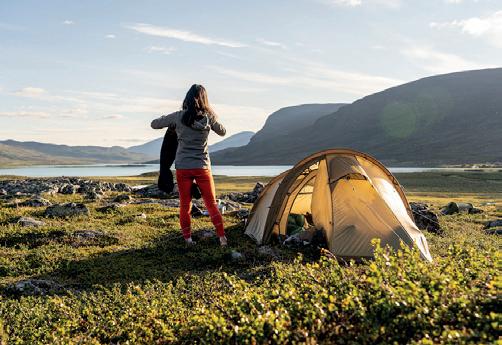
€749,95
www.fjallraven.com
Summer holidaying in the Nordics means refreshing morning swims, rain hats for moody afternoon showers, and soft garments for daft, long summer days enjoyed outdoors.
By Åsa H. Aaberge | Press photosSweater by Soft Goat
A plain o-neck with regular fit knitted in 100 per cent cashmere is a year-round wardrobe staple. The light softness of the cashmere is as suitable for Nordic summer days as when the temperature drops. We love this ‘sea foam’ hue for summer – and you can add a personal monogram with your initials! O-neck in Sea Foam, €265 www.softgoat.com
Bathrobe by Myyk
Norwegian brand Myyk makes the softest bedding and bathrobes too. This unisex terry cotton with a hoodie is the perfect option post-swim as it is warm and fast drying.
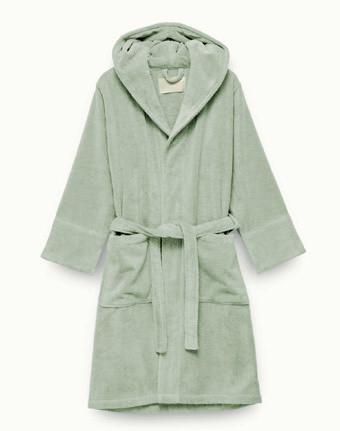

Bathrobe in Pistasjgrønn €150 www.myyk.no
Shirt by Sunflower
Talking of transitional wardrobe staples, ease into summer style with a linen shirt. Danish brand Sunflower comes with this offering in a light linen/cotton mix, classic relaxed fit and checkered pattern. Spacey LS Shirt, €256 www.hellosunflower.com
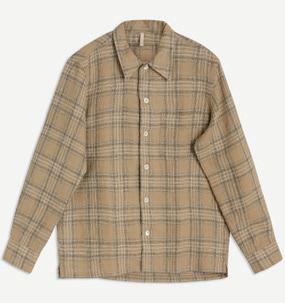
Swimming briefs by Samsøe Samsøe Shorts for dips in the sea, that can be worn to and from the shore too? Yes, please. These from Samsøe feature side and zipped pockets and come in several summer-appropriate colours.
Moses Swim Shorts, €50
www.samsoe.com

In Norwegian, this kind of hat, a traditional fisherman’s hat, is called ‘sydvest’, which translates to southwest. The Norwegian brand FWSS has made a contemporary version in water-repellent cotton to keep you dry from showers, whether you are out sailing or in the city.

Sydvest Vintage Khaki, €100 www.fallwinterspringsummer.com
The Aria sweater from Oslo-based Julie Josephine is knitted in a 50/50 blend of Italian wool and cotton. It’s cut for a loose fit featuring a turtleneck, and the summery stripe pattern works great with white trousers, shorts, or over the shoulders or a summer dress. Plus, it is cozy enough to keep you comfy and warm for breezy summer nights by the sea.
Aria Knit Stripe, €320 www.juliejosephine.com

Crochet bikini by Samsøe Samsøe
Crochet is an everlasting summer trend. This summer, try a cotton crochet bikini. This one from Danish Samsøe works as a little top worn with denim shorts to and from the beach, with a long, flowy skirt, or just for sunbathing.

Uni top, €50 www.samsoe.com
Dress by House of Dagmar
Knitted in a brushed organic cotton yarn, this sleeveless dress from the Swedish brand House of Dagmar is the ultimate Scandi summer staple. Perfect for when it’s hot out, and equally great for chillier days with a light knit thrown over. Classy enough for the city, but soft to lounge in, lying in the hammock in the garden on lazy summer afternoons.
Wide Rib Dress, €470 www.houseofdagmar.com
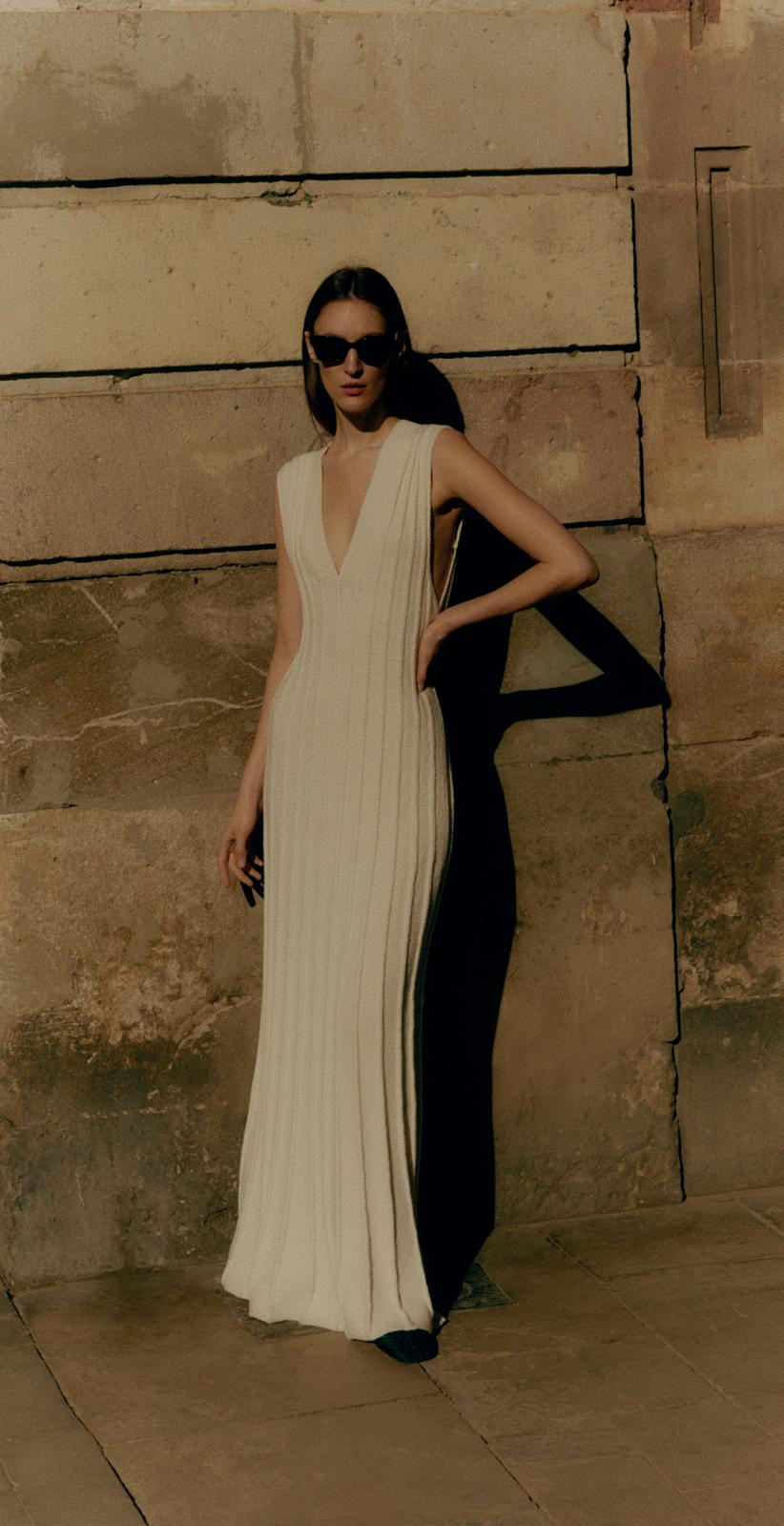 Knit by Julie Josephine
Knit by Julie Josephine
Finland is a crafting nation. Many Finns are experts at knitting, sewing and felting. These skills are passed down from parents or grandparents, learned in school where both boys and girls must master the fundamentals of sewing and woodworking, or later, in numerous and affordable adult craft classes. Some turn their skills into a profession. For Paivi Sillanpää-Ojala, her hobby of creating hand-made moccasins for her friends’ children became the start of her career.
By Molly McPharlin | Photos: FMAM


Sillanpää-Ojala founded For Mommies and Minis in 2015, and it soon became known by its abbreviation FMAM. “Ever since I was a young child, I sewed and secretly dreamed of doing handicrafts as a profession. After creating presents for my friends’ kids, I was encouraged to create an Instagram account for FMAM,” says Sillanpää-Ojala. “As a result, inquiries began to come in asking if the products could be bought. I founded an online store and soon I quit my job as a kindergarten teacher and became an entrepreneur.”
FMAM’s goal is to make timeless products for everyday life. Besides children’s leather moccasins, Sillanpää-Ojala also creates accessories for both adults and children, such as hairbands, bags, and bowties. All the company’s products are

handmade in Finland, using chromefree, ecologically produced Nordic leather. FMAM strives to implement a sustainable development model and has been awarded the Design from Finland label.
FMAM is especially popular with families who care about responsibly produced products. “My customers are often parents of small children who want to buy durable items for their children whose origin is traceable. In addition, our products for adults are also popular. I have my own shop which is open once a week for customers. Our products can also be found at retailers all over Finland and in FMAM’s own online store,” she says.
Currently, FMAM operates mainly in the Nordic countries, but a future goal is to
internationalise the company. “We have an agency in Tokyo who wants to export FMAM’s products to the Japanese market. We are also looking for dealers elsewhere in Europe,” says Sillanpää-Ojala. “Internationalisation is an important part of our plans. However, growing our operations in Finland and making more kinds of beautiful products is also a high priority.”
www.fmam.fi
Instagram: @fmam_fi
Facebook: fmam.fi
In an old house on the main street of Mariehamn in Åland, Annika, Inger, and Linda run a combined handicraft store and café – Viktor Crafts & Design. The house, partially built by a man named Viktor, is from the late 1800s and has kept its soul since then.
 By Alejandra Cerda Ojensa | Photos: Viktor Crafts & Design / Therese Andersson
By Alejandra Cerda Ojensa | Photos: Viktor Crafts & Design / Therese Andersson
“Every day we have visitors saying our store and café is a place where they can breathe. It makes them feel like they are in a safe home – which makes us very happy to hear,” says part owner Annika Åkerfelt.
The store sells selected handicrafts from local designers. Everything is ethically produced on a small scale. You will find jewellery, clothes, and knitwear, as well as artisanal food made from local ingredients.

Under the same roof is a café with the same concept which offers locally produced high-quality ingredients, coffee, pastries, lunch and sweets. The pastry chef Johanna always has something for the sweet tooth. “Our café guests like to stroll in the store while they are waiting

for their lunch. We have such a big selection of things. There’s always something new to find, which makes us a place locals keep coming back to,” Inger Nygård explains.
Viktor Crafts & Designs first opened in 2016 and has grown slowly but steadily since then. The store was opened to sell the owners’ and other Åland based creators’ handicrafts and creations, but has now become a place for locals to sit down for a coffee every week, as well as a place for tourists to discover crafts and designs from Åland, Finland, and Sweden.
“We have made sure to keep a lot of the original interiors, and the furniture in the store and the café are all old gems from Åland and Sweden. We want people to literally feel the tradition,” Linda von Köhler
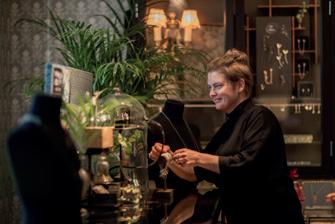
says. The store also holds space for the local arts association that hosts exhibitions with local artists and artisans.
www.viktor.ax
Instagram: @viktorcrafts @cafeviktormariehamn
Considering that bricks might last for centuries, finding the right one could make a difference for generations to come. Furthermore, the difference is not just in functionality; aesthetically, the choice of brick can make all the difference. This is why the Danish brick specialist Harris has made it a point of pride to identify and supply the perfect brick for facades and paving.
By Signe Hansen | Photos: Harris
If you think a brick is a simple standardised building component, think again. For 18 years, Harris, a small brick specialist consisting of husband-andwife Annemarie and Christian Harris, has provided architects, designers and private homeowners with the perfect bricks to match their aesthetic and functional requirements – and economic framework.
To do so, they draw on their many years of experience in their respective fields, and on their broad network of European family-owned brickworks. “Often when looking for the right brick, you are left on your own to browse through a catalogue at a construction market, and you end up with some sort of standard solution. Whereas what we aim to do is to match the project with the right brick, nothing
is standard in our work,” says Annemarie Harris, who specialises in paving bricks while her husband specialises in bricks for facades.
Their combined knowledge means they are able to provide their customers with a solution that aesthetically unites buildings and their surrounding area.
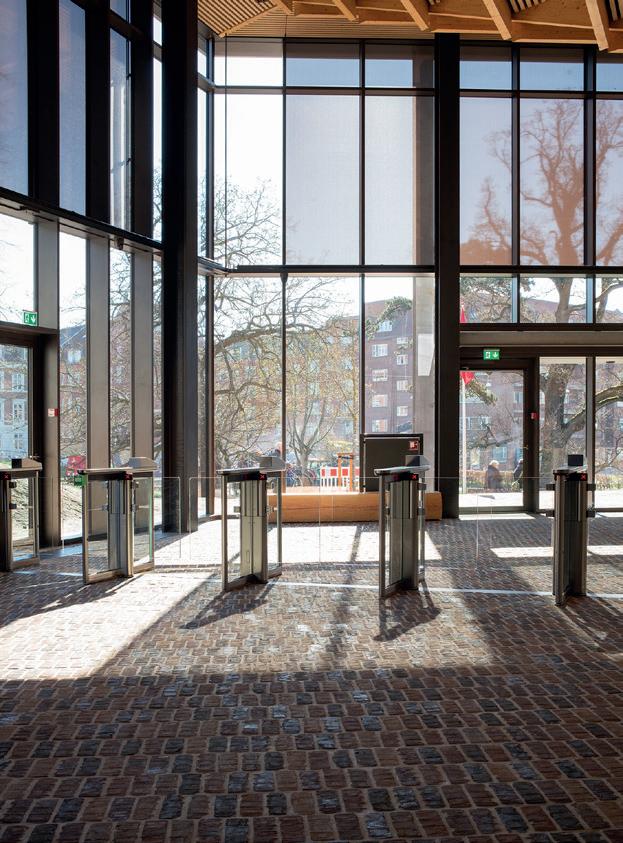
“It doesn’t mean that the bricks have to be the same,” stresses Christian Harris. “But it means that we can provide a solution that creates a feeling of continuation.”
Another aspect in which the Harris team has in-depth knowledge is the durability and sustainability of bricks. Bricks,
Christian Harris stresses, provide both better durability and a lower carbon footprint than alternatives such as concrete or asphalt and can be reused if a building or surface is dismantled. Furthermore, for customers who wish to minimise their carbon footprint, the company is in the process of getting an EPD certification for their increasingly popular collection of used tiles this summer.
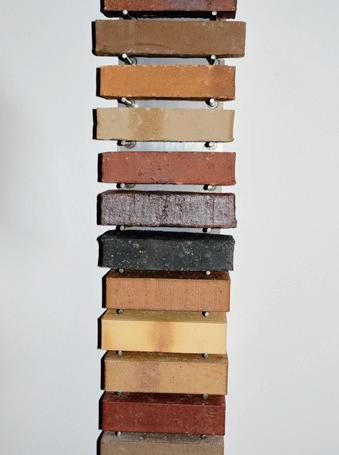
Brick houses and brick pavements may last for centuries, and this means that despite the significant energy expenditure required to burn the bricks, longterm, bricks come out favourably in terms of carbon footprints. To assess the footprint of their product, Harris has collaborated with an external advisor, which compared paving bricks to natural stone, asphalt, and concrete. Over 50 years, natural stone had the lowest CO2 impact. However, when considering emissions over 100 and 150 years, bricks are likely to have the smallest CO2 emissions. This is due to the durability of the stones and their minimal maintenance requirements.
Historically, Denmark has utilised wall bricks, which are burned at lower temperatures, more than paving bricks. “In Denmark, we don’t have a long tradition for paving with bricks, because the clay


we have is not suitable for burning at the high temperatures that are required for paving bricks, but in Holland, when you dig down under the current roads, you will find the old paving bricks still intact,” explains Annemarie Harris.
This also means old tiles can be reused to reduce the carbon footprint of projects. Currently, Harris is working on documenting the EPD on their large collection of reused tiles allowing for customers to document their minimal carbon footprint. The fact that burned bricks require very little maintenance such as chemical cleans also weighs in favour of the bricks in terms of environmental considerations.
Of course, the longevity of the product also puts extra pressure on getting it “just right”, but despite this and despite the wide use of bricks in both indoor and outdoor designs, customers are often left with very little advice when it comes to the effect of, for example, combining different colours of bricks with different colours of mortar, or different laying techniques and patterns. Harris, however, always ensures that all questions are answered in the process.
“We can help ensure you make the right choice through demonstrations in our showroom, at the project site, or design studio. This means that our customers will get answers to all of their questions, whether they be regarding colours, functional properties, cost or laying guidance,” says Christian Harris and rounds off: “we specialise in providing an expert service and close partnerships. That’s something we can do, thanks to our small size: we can help customers find the right match, almost no matter their requirements. It will not always have to be something artistic and super special, but it will never be a standardised solution.”
www.harris.dk
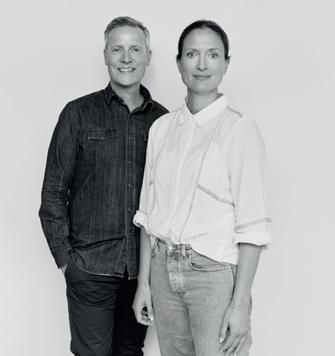
Instagram: @Harris_tegl
Facebook: Harris Tegl


Hand-made jewellery, produced from upcycled plastic waste. Jing Wang, founder of Upcycle with Jing, has perfected a unique approach to making beautiful and sustainable accessories.
Disillusioned with her studies in industrial design, Jing decided to change direction. Now living in Finland, where she studied applied art and design, she has found her passion in creating beautiful, sustainable, handmade jewellery out of upcycled plastic bottles.
Jing started her company six years ago, making jewellery while still studying. Encouraged by fellow students and teachers, she set up a business selling to friends and at craft fairs. Upcycle with Jing now has a team of five homeworkers with Jing at the helm to guide and support. While Jing designs, and oversees the production and quality control, she still likes to keep a hand in the creative process of cutting and assembling the jewellery.
Inspired by nature, Jing produces new styles every year. A series of but-


terfly designs is about to be introduced to the collection, ready for the summer. Jing is passionate about producing her work in a circular economy where no waste is created, and materials are repurposed. For this reason, she scrutinizes all products used in the production of her jewellery.
Always on the lookout for new methods in ethical materials, this year Jing is trying out new techniques using Finnish gold, saying, “this is ethical gold, no child labour.” Reaching for her five-month-old son, Minthi, she adds “I don’t feel like this is work, it’s my passion.”
www.upcyclewithjing.com
Instagram: @upcyclewithjing
Facebook: upcyclewithjing
Tiktok: @upcyclewithjing
By Karin Blakglerups is celebrating 30 years since they made their first pair of slippers. To mark this anniversary, three exciting new colours are being developed and added to their already extensive collection of indoor slip-ons, shoes and boots.
By Karin Blak | Photos: glerupsInspired by the nature surrounding their Danish head offices in Aars – a hamlet just outside Aalborg – the new colours Sand, White and North Sea reflect the fields, trees and sea surrounding this picturesque area. Developing new shoes doesn’t happen overnight; great care is taken to ensure the high quality that glerups’ customers are familiar with. Producing a shoe that works in harmony with nature takes time, time that glerups are happy to spend. Get ready: the new range will be available in September 2023.
The original pair of glerups was a pair of felt slippers made by Nanny for her husband. She had no intention of starting a business, simply of showing her love for the man she married. But as word spread, she soon began making slippers for family and friends, and from there the idea grew. Thirty years later, the farm where Nanny first began pro-
ducing these beloved house shoes is the home of glerups’ head offices.
glerups’ top-quality pure wool mix confers a feeling of comfort and luxury that nurtures your feet, no matter the weather or situation. The choice of either natural rubber or leather soles is especially popular with travellers and outdoor enthusiasts. From the serenity of sticking your feet into a pair of glerups on longhaul flights, to relaxing by the campfire after a day in the wild, the satisfaction that of wearing glerups make them an undeniably worthwhile investment. Plus, they are easy to carry – just pop them in your luggage.

For the eco-conscious traveller, glerups is an easy choice. Christina Flindt Bjerg Albæk, head of marketing, speaks proudly of their Zero Waste Project. Here, leftover felt and leather that cannot be fed
back into the production of the glerups shoes is used to develop other products. One of their collaborators, Lübech Living, design items for the home while glerups produce the final products.
Their ethics involve treating animals, nature and people with respect, demonstrating that glerups are focused on giving back to nature and nurturing the environment. Once you try them, they’ll stay with you for life. What more could one want from a pair of shoes?


www.glerups.com
Instagram: @glerups_official
Facebook: glerups
Youtube: glerups_youtube
Wooden floors have a long history in Norway. The properties of wood make it a sensible choice compared to stone and tiles, as it is much warmer to walk on. But wooden floors are more than just practical, they are an interior design element.
 By Hanna Margrethe Enger | Photos: Kahlbom & Co
By Hanna Margrethe Enger | Photos: Kahlbom & Co
Established in 2011, Kahlbom & Co has been providing sanding and surface treatment as well as installation of wooden floors since the beginning. In 2013 they restructured and began also selling flooring. “The floor is the largest piece of furniture and a large surface that carries the direction of the interior design,” says CEO Thomas Kahlbom. “We would say it’s the most important interior element. The floor should not just be something you walk on, but an extension of your personality, style and interior design.”
A brief history of wood and floors
There is a lot of pine and spruce in Norway, so naturally this was commonly
“We specialise in wooden floors and the flooring industry in general,” says Morten Bergstrøm, co-owner and floor sanding specialist. “Delivering a product of the highest quality from A to Z requires not only good manufacturers, but also a high level of knowledge and skilled craftsmanship.” used for flooring, until the arrival of oak around 1920. Between 1920 and 1940 oak soared in popularity. The upper middle class installed solid oak floors in combination with solid oak herringbone or square-patterned flooring with or without a frame. For the working class and the middle class, oak was too expensive, so they continued using pine or spruce.
The first engineered floor construction was introduced around 1940. These new production methods and innovations made it both cheaper and easier to lay wooden floors. Flooring went from being an exclusive craft detail to a simpler, doit-yourself product.

The classic Nordic style of the last 30 years has been characterized by light, white pigmented oak floors. Whether it’s a three-strip or wide one-strip floor, wooden slats or herringbone, the common denominator is light tones. “This probably reflects the fact that we have a long period of darkness, and want it light and airy inside,” Kahlbom explains. “However, we see that many people want deeper, darker tones, and other types of wood such as larch or Douglas fir. The classic herringbone floor in combination with random lengths is also something we do a lot of.”

At Kahlbom & Co there are floors for every taste and budget, for everyone from first-time homeowners who want to do it themselves to experienced renovators who want to realise their dream floor.
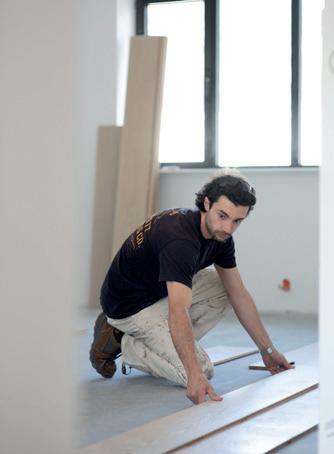

The high-end segment offers a huge choice of wood types, widths and dimensions. This is for those with the most exclusive taste. These floors are up to 450mm wide, in lengths of four to five meters, from manufacturers such as Italian Fiemme Tremila and Austrian Mafi. These producers also offer a surface treatment that is scientifically proven to provide a healthier indoor climate.
Or how about a patterned floor with merino glass, or black high-gloss Chevron floor from the Italian manufacturer Garbelotto? Imagination and budget are the
only limits. The high-end segment really is more than a floor, it’s a lifestyle, and is a favourite of interior designers and architects.
The traditional wood floor segment offers solid or engineered wooden parquet in combination with herringbone, square and patterned floors. High demands are placed on both the manufacturer of the floor as well as the floor installer and sander. Kahlbom & Co call these floors generation floors. They fit perfectly in houses and buildings from the early 1800s to the late 1900s.
The mid-range category offers almost as many choices as in the high-end cat-
egory. The floors come either hard wax oiled or varnished in many different colours, with different surface structures and dimensions. Kahlbom & Co can get the floor untreated and then sand, pigment and surface treat according to the customer’s wishes.
The next segment is do-it-yourself flooring with an exclusive touch. This segment has fewer options and only comes prefabricated. The floors are delivered with a click system and are suitable for those who want to install it themself. Here however, you will find a lot of exciting things that you wouldn’t think you would find in this segment, such as hand-scraped parquet floors and floors with an exclusive, aged aesthetic.
“Regardless of the project’s size or execution, we invest a lot of time in customers and customer relations,” says Kahlbom. “We carefully explain the wood technical aspect, laying technique and laying direction in addition to colour, dimensions, and surface structure. The most important thing for us is that the whole process is a pleasant and educational experience, while at the same time, the laying and wood technicalities are taken care of.”
www.kahlbomco.no
Instagram: @kahlbomco
Facebook: kahlbomco

F reshly made skincare
Sun Emulsion SPF50 + is the first sunscreen product from Swedish company Skinome, known for its innovative and research-driven skincare. This high-performing sunscreen builds on Skinome’s concept of freshly made, microbiome friendly and unperfumed skincare without preservatives.

•Balanced and photostable protection against both UVA and UVB rays
•Unique combination of UV filters with new, innovative organic filters that are not endocrine disruptors
•Reduces risk of getting UV-induced signs of aging
•Gentle on the environment & coral reef safe
•Moisturizes and cares for the skin
•Can be used as the only day cream
•Unperfumed and without preservatives
•Suitable for the most sensitive skin and also for children


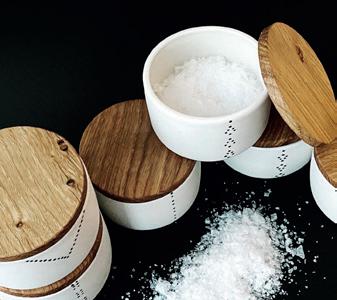

Ulaajuk Pottery in Nuuk is behind some of the most unique ceramics and porcelain currently made in Greenland. Owner and artist Nuuna Papis Chemnitz creates distinctive designs and mixes her own glazes, using materials sourced locally. Ulaajuk means the ‘well-shaped’ or ‘well-built one’, and each hand-crafted piece is shaped by Nuuna’s very own hands.
By Trine Ejlskov Jensen-Martin | Photos: Ulaajuk Pottery“The Inuit tattoo inspired dots are an important part of the identity of my work,” says Nuuna. Some of her porcelain has a very feminine feel and some ceramics are more rustic, but there is a distinctive red thread running through all her work: at the very core, it is a product of her native Greenland.
Nuuna is born and raised in Greenland, where she lives and works. During May and June this year, she was Artist in Residence at Guldagergaard International Ceramic Research Centre in Denmark, where she could cultivate her techniques further. “Inspiration comes to me when I have a piece of clay in my hands,” she ex-
plains. “It comes when I am sitting at my potting wheel, or when I am sleeping, or maybe from the peace and calm you find in the nature in Greenland.” The tranquillity, beauty, and clean lines of the landscapes are all reflected in her designs, and both the Inuit background and the Nordic elements of simplicity are evident.
Each piece is original Nuuna started throwing clay in 2018 and was hooked from the beginning. She continues to develop her expression and style and is now a full-time artist and ceramicist. “My little oven couldn’t keep up with requests from customers!” she says. Her work is in increasingly high
demand, but she only sells from her studio and has no online outlet. There are new products every week and Nuuna works hard to keep her shelves stocked.
“I don’t do commissions because I want people to feel the product I create and to feel each object in their hands,” she says. “I make everything myself and each piece is, like all of us, created differently.”
If you want to get your hands on one of Nuuna’s individual pieces you must visit her studio in Nuuk. The shop is open at weekends and is, like Nuuna herself, both warm and welcoming, and welcomes people from all over to buy these characteristic, beautiful objects.

Instagram: @ulaajuk_pottery
Facebook: Ulajuuk Pottery
In the very city centre of Stockholm, you’ll find a piece of California. The beautiful Art Deco restaurant Pava Gruppen is a small family business rooted in the mixed cultures of Californian cuisine.
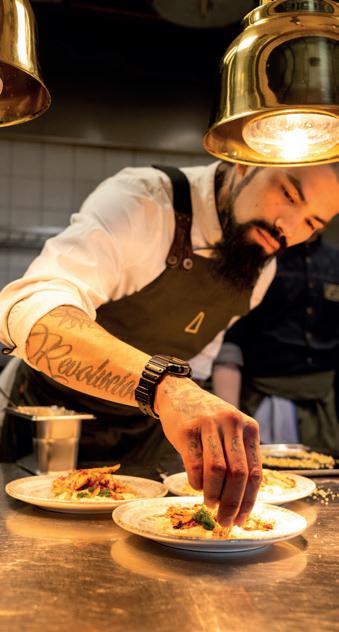
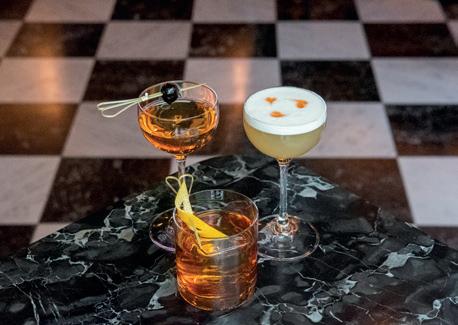
 By Alejandra Cerda Ojensa | Photos: Pava Gruppen
By Alejandra Cerda Ojensa | Photos: Pava Gruppen
“American food is so much more than we typically see, and we wanted to bring the flavours and the dishes that we grew up with in California to Sweden,” says Christopher Sander, CEO and part owner.
Pava only opened last year and is already a popular spot for large groups. The concept is simple: sharing is caring! With mid-sized dishes, everyone gets to find their own favourite. The restaurant is perfect for anyone looking for a great start to a fun night out with friends, with DJs playing a couple of times a week.
“We have had a jazz band play, and we’re soon expanding our music concept to include different genres. We want to be a vibrant spot with lots of laughter and good locally produced food,” Sander continues.
The menu changes four times a year with the seasons, and they value fresh, organic, locally sourced and traceable ingredients. “We put emphasis on working with good ingredients that are in season to create dishes that are packed with flavour and feel very fresh, just like the food we loved growing up in southern California,” Sander explains.
Pava Gruppen’s name is from the slang word for bottle in Swedish ‘pava’, and the two brothers who run the restaurant previously worked in wine importation in Sweden. After having worked together hosting wine tastings and exclusive catering events for businesses, they seized the moment to launch Pava as the pandemic was coming to an end.
There are big plans in the pipeline: “we want to continue being a place for friends and colleagues to enjoy our concept, and hopefully, we’ll open a new place in the near future,” Sander ends.
www.pavagruppen.se Instagram: @pavagruppen
Kouvola Liquorice has been making liquorice for almost 80 years, predominantly for its Finnish customers, but owner Timo Nisula wants to make their confectionery the next global luxury product.
 By Ester Laiho
By Ester Laiho
The story of Kouvola Liquorice begins in 1906 when the company, then under a different name, made sodas in Vyborg. The company moved to Uusikaupunki
and, in the aftermath of the war during a period of rationing, was granted the ingredients to make liquorice. Finns loved the product and the company expand-
ed its production of sweets to Kouvola, where it has been ever since.
Kouvola Liquorice currently exports its fresh liquorice to Scandinavia, some countries in mainland Europe and even Canada, and Nisula is looking to expand. Though he isn’t expecting Walmart to stock their black sweets, he wants their carefully crafted and beautifully packaged
products on the shelves of luxury and gourmet boutiques around the world.
Luxury liquorice made by hand with a 60-year-old recipe


With years of experience under his belt of importing food, including caviar and chocolate, Nisula knows there’s a demand for fine-quality products. So why couldn’t it be liquorice? Nisula has been at the helm of Kouvola Liquorice since 2008, but the liquorice has been made the same way since 1960, when an English liquorice expert and consultant H. Knoch tweaked the recipe. Now, as then, the black confectionery is made by hand and distributed to customers when it’s still fresh.

This treat is very different to salty liquorice. Though it is equally black, it tastes very different. “They are two completely different products: salty liquorice is made of ammonium chloride in a lab, but our

liquorice is made from liquorice root and leavened in our factory. Not everyone likes salty liquorice, I’m sure not everyone will like liquorice either, but even if half of the world’s population don’t like it, there are still 3.5 billion potential customers out there for us to reach,” says Nisula.
Liquorice has been used and enjoyed in human history for centuries but despite having been enjoyed by many leaders like Julius Caesar, Alexander the Great and even Tutankhamun, Pharaoh of Egypt, it has never had a revolution of its own. Thanks to its medicinal properties, it is still used in Western and Eastern medicine. Its antimicrobial properties also make it a coveted ingredient in the cosmetics industry and it is also used to flavour tobacco. These are the top three uses for liquorice in the world, with the food industry coming in fourth.
The self-proclaimed first ‘Master of Liquorice’, Nisula wants that to change: “liquorice is a fascinating ingredient and we should celebrate it for its unique flavour, the way we taste wine and food and pair them. I travelled to Italy to visit the people who grow the liquorice we use, and they pride themselves on their product just the way wine producers do. The flavour of liquorice actually lends itself to being paired with a glass of wine.”
Spreading the gospel of Kouvola Liquorice around the globe might sound ambitious – or even a little unrealistic –but the company has grown in size and gained notoriety since Nisula took over. Today, they produce five times more liquorice and, with an expansion on the way, he even wants to double that.
Despite production volume increasing significantly, Nisula isn’t planning on cornering the global liquorice market with volume: “the story of Kouvola Liquorice is a fascinating one and we’ve never budged on quality or our methods. We’ve got the know-how to keep producing high-quality liquorice which is why we are excited to focus on exporting our liquorice. Simply put, we’re not looking to be the biggest, we just want to be the best.”
www.kouvolanlakritsi.fi
Instagram: @kouvolanlakritsi
Facebook: kouvolanlakritsi
If you’re looking for a magical castle-like space close to Sweden and Finland to get married in, look no further. Ulfsby Gård, an 18th century family-run farm close to Mariehamn is one of the most beautiful spots to choose.
 By Alejandra Cerda Ojensa | Photos: Alice Åkerblom
By Alejandra Cerda Ojensa | Photos: Alice Åkerblom
Ulfsby Gård (‘gård’ meaning ‘farm’) has been in the family for 10 generations. Today, hospitality manager Erika Gustafsson has taken the reins from her parents and is running the farm she grew up on.
“Our family mansion is something special. It’s very important for me to guide our guests to create that magical moment for their most important life event – their wedding,” Gustafsson says. The granite walls of the main venue, Stensalen, were built in the 19th century. They are one meter thick and create a castle-like ambiance.
“The walls are enhanced by the chandeliers and golden framed mirrors. All the details create a harmonious atmosphere. Our venue is unique, which is why we want to offer it for people to experience,” she adds.
Ulfsby Gård is only 8 kilometres from Mariehamn and a 15-minute walk from the local church, Jomala Kyrka, which was built in 1280. This makes Ulfsby Gård great for weddings. As the venue faces west, guests can enjoy a fantastic sunset view, while beautiful photos can be taken next to the fountain or on the fields.
From next year, the family will also offer a place for loving couples to stay. “We are currently renovating an old cabin just outside the venue for the married couple to stay. The cabin will be carefully restored to honour the farm’s roots and will be a beautiful place for the newlyweds,” says Gustafsson.
Ulfsby Gård is close to the city, but still in the countryside, surrounded by Åland nature. “Accessibility is important for us, which is why our venue is adapted for wheelchair users. We also have a
fully equipped bar and a complete restaurant kitchen.”
As a guest, you can decide whether you’d like to create your special day by yourself or if you want Gustafsson and her team to plan the whole event for you. Enquiries from prospective visitors are happily welcomed.
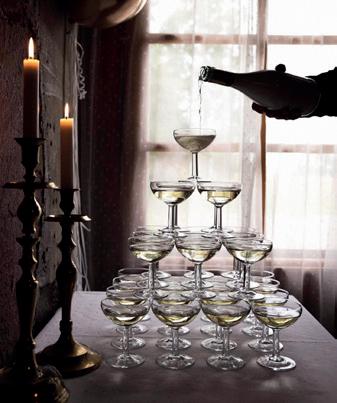

www.ulfsby.ax
Instagram: @ulfsbygard
Beer brewed by homebrewers can be surprisingly creative and tasty – and can promise a fantastic brewer in the making. Amateur brewers are honing their mastery of fermentation, in homebrew clubs for instance, and they thrive on experimenting, trying new ingredients and tweaking classic recipes with new ingredients. Many homebrewers later become professional brewers, so it’s quite likely that your favourite brewery was set up by a group of homebrewers.
For intrepid homebrewers, homebrew competitions are a fantastic opportunity to get their beer assessed, receive invaluable feedback and recognition. What’s more, they’re popular; the world’s largest international amateur beer competition is the National Homebrew Competition, organised by the American Homebrewers Association. Since the first competition in 1979, over 162,000 entries have been evaluated in categories such as strong Belgian ale, pilsner, and New England IPA.
Some homebrew competitions also offer the champion brewer the opportunity to brew their winning beer together with a professional brewer. For instance, following the SIBA Homebrew Beer Awards in the UK, the lucky winner will see his hazy pale ale upscaled for commercial production and it will soon hit taprooms and bars across the country. Quite an achievement!
In a recent homebrew competition, I was on the judging panel that selected the winning beer: an outstanding farmhouse ale brewed with apricots and peaches. It was refreshingly sour and tart, yet fruity and delicate. This beer could win an international beer competition for professionals, that’s how good it was. Fingers crossed, the talented homebrewer will set up his own brewery one day.
If you are a homebrewer, make sure to enter your beer into homebrew competitions. And if you know a homebrewer, don’t miss the chance to try their beer – it can be

Three years ago I started sewing clothes. We were at the very start of the pandemic, and I thought to myself I need a Corona hobby, or I will go nuts. I had no previous experience and no pattern. I actually didn’t really know how to thread the machine properly, so I had to start by watching a tutorial.
The first piece I made was a dress. I didn’t have any sewing fabric, so I simply took an old sheet. I used an Instagram photo as a reference – a girl was wearing a long white dress with puffy short sleeves and a ruffle at the bottom that I found beautiful. Step by step, I started cutting out pieces from my sheet: a front part, a sleeve, a long piece for the bottom part, and I sewed them together, looking at the photo closely. It was a hands-on problem-solving project, and I was so proud when, after a while, I realized I had put all the pieces together and that they now were wearable.
Since, I’ve sewn plenty of dresses, pants, shirts, blouses – in fact, as I type, I’m wearing one of the first dresses I made. Last summer I gave it new hems, restitched some loose seams and realized that it was probably not the most admirable technique I used back then. However, sometimes the details aren’t as important as the feeling you get when you see that you can create something when you give yourself that time.

hit and miss, but once in a while a homebrewed beer will blow your mind.
Sustainability columnist Alejandra Cerda Ojensa is a Swedish sustainability blogger based in Copenhagen. She loves sustainable fashion, plant-based food, natural wines and music.
Instagram: alejandracerda.co
For Norwegian writer and director Bent Hamer, the inspiration to enter what many see as a rarefied business came from that most human of experiences – storytelling. “That’s the short answer,” he says. “My grandmother told me stories – you’ve probably heard that before – but it’s absolutely true.”
By Paula Hammond | Photos: Bent HamerAs a kid, Hamer’s passion was football. “I had quite a normal upbringing” he recalls. “I didn’t know any directors or writers. Actually, I was really into sport. I played football and I would ski-jump in the winter. I liked to read, go to the movies, and then TV came along. But I liked fairytales and storytelling too. Part of my first film Eggs was built to honour the memory of my grandparents who told me stories.”
Eggs garnered public and industry praise in equal measure. However, while awards may be helpful in helping to finance a film, for Hamer the important thing is staying true to himself, no matter whether there is commercial pressure.
“Of course it was a shock. And it definitely helps, in a way, to be recognised early in your career. I had made a bunch of short films before that and had actually won national prizes in Norway for them. But it didn’t change the stories I wanted to tell or how I told them. I didn’t feel any pressure to keep making similar films. Maybe I should’ve felt that, but I didn’t.”
Since Eggs, Hamer’s work has continued to receive plaudits, with his 2005


French-Norwegian comedy Factotum earning him an Oscar nomination for Best Director. Factotum is a noir-esque tale based on the works of Charles Bukowski and exploring the poet’s uncompromising life through the lens of Hamer’s absurdist humour. The result is surreal, sobering and unforgettable.

The Middle Man, which received its cinematic release in 2021, is Hamer’s eighth feature film. Like Factotum, it is another slice of Americana.
The Middle Man is set in the fictional town of Karmack, deep in the Rust Belt, where the American Dream has turned into a nightmare. The town is so plagued by accidents and economic woes, that the local council have decided to hire a middle man to break bad news to its citizens.

Featuring a superb performance by Pål Sverre Hagen as the titular character, the supporting cast includes Aksel Hennie, Nicolas Bro, Rossif Sutherland, Don McKellar and Due South’s Paul Gross, who gives a terrific performance as the town sheriff. With a hint of the Coen brothers’ Fargo, and a uniquely EuropeanAmerican flavour of its own, The Middle Man is a hard film to put in a box.

“Obviously the book Sluk inspired me. My wife read it first and recommended it. I liked it immediately and I wanted to make a film. I thought it represented more than just the small Rust Belt towns that have lost everything, and the people who live there. A lot of Europeans, especially young people now, have no jobs or prospects of leaving home so it has a kind of universal background. That interested me.”
“I also liked the fact that it’s a strange story. You really don’t know what’s happening. And, actually, the book is darker than the film. When I came to the end, I shot it so that I could choose two endings – and I chose the lighter one. I’m old enough now to offer a little hope at the end of the tunnel! The author was actually very happy with that, and said that’s the way he should’ve done it.”
The film is full of fascinating characters and symbolism, and Hagen’s middle man, Frank, makes for a compelling focal figure. But is he the hero or the villain? “We talked a lot about who Frank is with the actors, trying to put a label on the character. We agreed upon trying to leave a lot of it as a mystery. That’s a bit risky in that it maybe demands more from an audience, but it’s the way I like to tell stories. I’ve been asked so many times if the ending is really happening. If you ask me straight up, I’d say it does happen … but, then, we use this song by Radiohead which includes the line ‘this is not happening’, so it’s really up to the audience.”
A recurring theme in Hamer’s work is people trapped in lives of numbing routine, finding something extraordinary that helps them break free. “I always like to put ordinary people in these situations then let something grow out of that,” he explains. There are also questions like what is fate, what is coincidence, what is planned? Of course, we have a choice all the time, but it can still feel that we really don’t.”
Has Hamer himself ever found himself in a similar situation to his characters
– breaking away from the everyday to do something unexpected? “Well,” he laughs ,“I’m certainly reaching the age where it’s expected of me! But, no. I’ve done what I’ve always wanted to do. I think I feel quite free.”
Like Factotum, The Middle Man, is set in the US, although it was filmed in Sault Ste. Marie, Ontario. “I tried to see if it was possible to shoot in the US, but it’s a nightmare unless you have Tom Cruise in every part!” he says. Ireland and Norway were also possibilities, but that would have meant changing the dialogue too much. For me, the troika of the sheriff, the doctor, and the priest was central. I didn’t want to lose that.”
Despite its setting, Hamer explains that he doesn’t have an especially strong urge to make American movies, or jump onto the blockbuster bandwagon. “With The Middle Man, I just followed the story. Of course, all of us filmmakers like to imagine we can make a James Bond if they asked us to. But I prefer British films. The way the British make thrillers is very interesting. They’re not those films when one third of it is driving a car. That’s not my thing – but the other way around is great. That’s an interesting pace.”

When Scan caught up with Hamer, he was in Paris, desperately trying to ignore the attractions of the City of Light and get some work done. “I’m trying pressure myself to deliver a final script but there are lots of very nice distractions here… so we’ll see!” he says. Whatever the outcome, there’s certain to be a great story at the end of it.




Living in Scandinavia, especially during the winter months, requires modern, solid homes that stay cosy and warm. Crucial to this are windows. For over 70 years in Norway, Førre Vindu has created high-quality, contemporary and functional windows for a variety house- and building-types, making living and workspaces comfortable at any time of the year.
By Molly McPharlin | Photos: Førre VinduFørre Vindu was started as a family company by developer Bernt Førre after the Second World War. It was a period of great change in Norway. There was a need for new construction, but at the same time, a lack of resources blighted the country after the devastation of war and the Nazi occupation from 1940-45. Timber, for example, was rationed by state authorities. As a result, Førre and his brothers, also owners of the company, used every part of the wood they had.
Førre Vindu placed emphasis on incorporating all materials available in its products and avoiding waste. “At Førre we have frugality and quality at our core,” says chief of sales Kate Elin. The company goal has always been to adapt the products to fit customer needs. The company creates windows and doors for most types of buildings, particularly for private residences like houses and traditional Norwegian ‘hyttes’, or holiday cottages. It also fits apartments
and public buildings. As far as possible, Førre Vindu works with local suppliers. This means that the origins of all materials are traceable, and its relationship with its partners is close and strong.
Førre Vindu’s windows and doors are designed and handcrafted in Norway and the company still maintains a personal, family-style feel today. In Tysvær in the west of the country, Førre Vindu has 27 employees from a variety of backgrounds. Some have come from higher education to complete apprenticeships, others have moved to the company from various industries.
Førre Vindu plays an active role in its local community, employing and train-
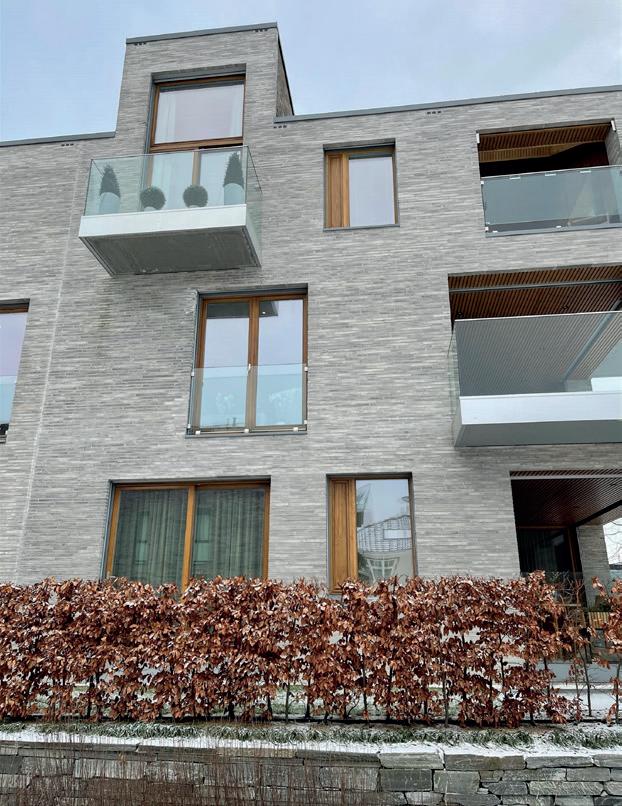

ing young people and adults to prepare them for future employment. It also supports several projects in Madagascar – establishing a hotel there - the Hotel Ambalakelv – for example. This project greatly increased local employment, and profits from the hotel go to children’s education in the area.

Customers both near and far
Førre Vindu’s customers are both local, national, and international. “Many of our customers are professionals in the construction industry. Others are architects or private individuals who want to decorate their homes and apartments independently,” says Elin. “Local customers frequently stop by the office to discuss solutions and choices. We also have customers from all over Norway who come to visit and review their projects. In terms of getting involved in a plan, geographical location is not a problem for us.” Though mainly working in the Nordic region, Førre Vindu has worked with customers as far away as Iceland and Australia.
Various styles and products
Førre Vindu has several product lines. Each includes its own variation of win-

dows, balcony doors, sliding doors, and external doors, and each product is made with several combinations of woodsusually accoya on the outside and oak on the inside. This increases lifespan and durability, while achieving a superior interior design.
Full-depth frames – one of Førre Vindu’s specialities – have proved particularly popular with customers of every demographic. These enormous, strong frames extend all the way from the glass to the inside of the wall. When combined with seating areas built into walls, “the window becomes more of a piece of furniture and is an integral part of the interior design,” says Elin.
Sustainability has always been at the core of Førre Vindu. “Our founder Bernt Førre used each piece of wood he had. They did this for financial reasons,” states Elin. “Today it is sustainability in practice.” Leftover materials are ground into chips. They become energy for heating and drying surface treatments. In 2022, an electrostatically controlled painting system was installed. This led to reduced

paint consumption by up to 30 per cent. In October 2022, the company gained the Environmental Lighthouse certification. And recently, Førre Vindu prepared their sustainability strategy.

For the company, sustainability work is not a project with a completion date - it is an on-going process. The UN’s sustainability goals are the first thing you see when you enter the factory. As Elin states, “we do not see it as a choice to practice sustainability work or not. It has always been necessary.”
For the future, Førre Vindu intends to continue to satisfy its customers’ needs by creating high-quality, useful and long-lasting products. They also prioritise communication with previous customers. “We take responsibility for the products we have already delivered,” says Elin. “It is important to us that our customers have the information they need so that our products last a lifetime.”
www.forrevindu.no
Instagram: @førre
Facebook: Førre
Just 20 minutes from Stockholm city centre you will find a peaceful place to unwind your mind and gather new energy. In a setting inspired by traditional Japanese aesthetics, Yasuragi offers an extraordinary experience for all senses. At the heart of Yasuragi you will find the Japanese bath house. Welcome to the only Japanese spa hotel in the Nordics. Book at yasuragi.se
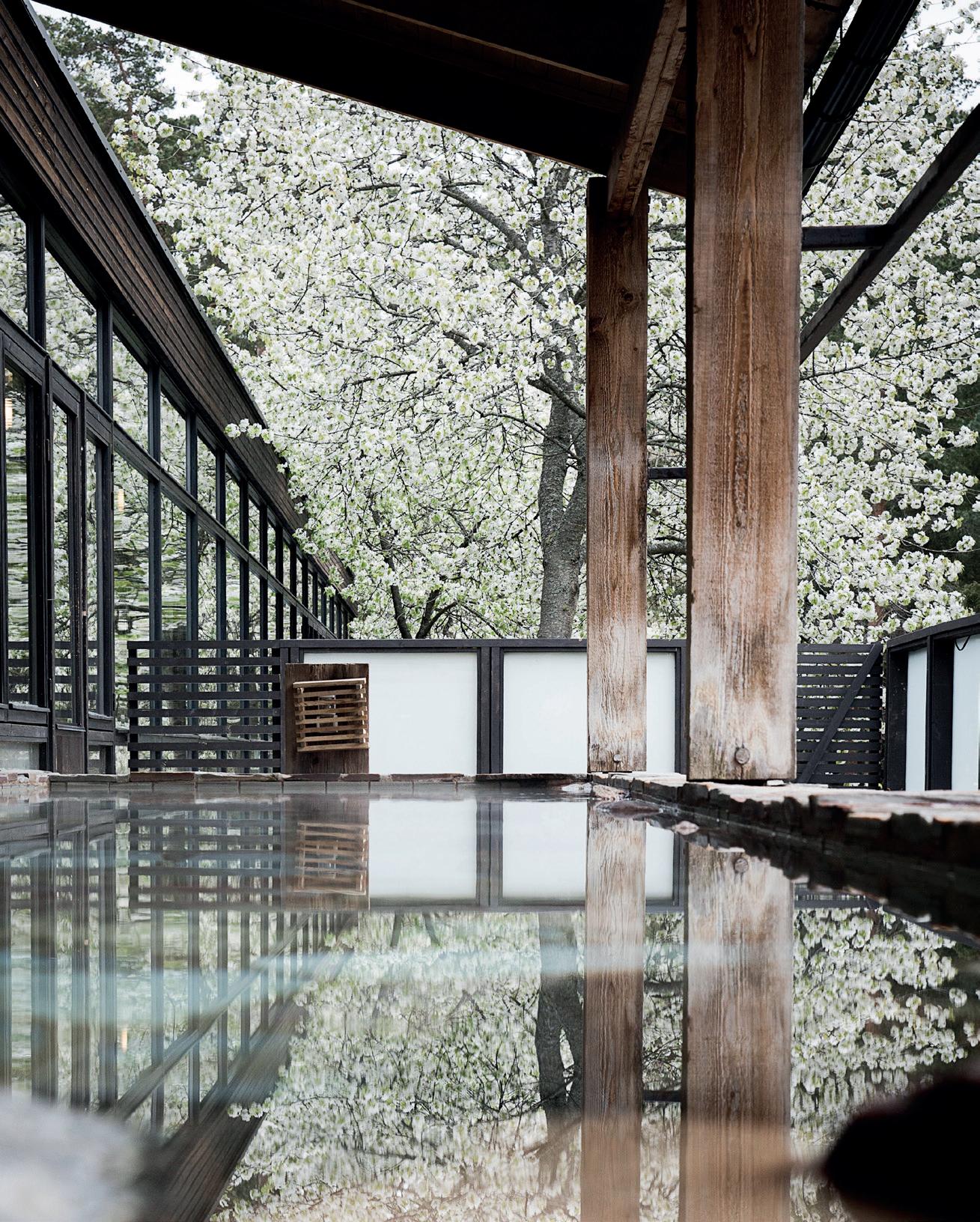
If you travel through Norway, you’re bound to see several houses and cabins built of logs that seem to be piled on top of each other covered by a grass roof that looks like nature’s attempt to unify the construction with the nature surrounding it. Many of these houses are several centuries old, yet they stand stubbornly in remote hillsides –a testimony to the durability of this ancient way of building which is finding its way back to modern constructions. Indeed, the demand for traditional log houses is soaring
By Eva-Kristin U. Pedersen | Photos: ØverbyggAt Øverbygg, one of the main providers of traditional log houses, employees are proud to be carrying forward an old tradition. Established at Snåsa outside of Trondheim in 1991, Øverbygg has grown to be one of Scandinavia’s most trusted constructors of log houses. Next to their main Norwegian production site, they also have a department in Åre in Sweden.
Environmentally friendly
Most of Øverbygg’s houses are used as cabins but the demand for log houses as permanent residences is growing. According to Karl Skaanes, administrative director at Øverbygg, that is not least because the technique also has many desirable qualities for modern dwellings.
“Log houses are built with natural, sustainable materials. They are naturally
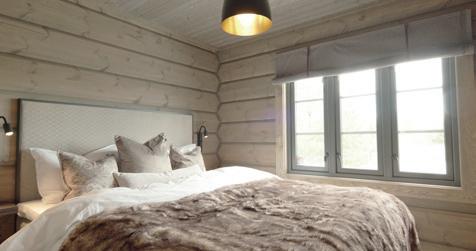

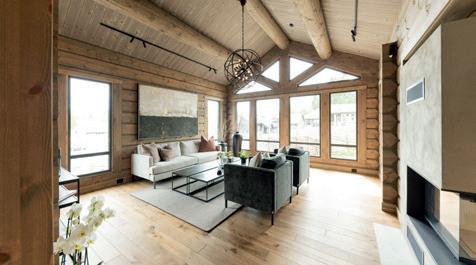
ventilated and are healthy and comfortable to live in,” Skaanes explains. “With skyrocketing prices on energy-intensive construction materials, wooden logs also represent a more economical alternative.”
When Øverbygg receives a new order, the design is made digitally before the main parts of the house are built at the production site in Trøndelag or Åre. These are then driven to the construction site, where they are assembled and layers of isolation are placed between each log. The roof is mounted at the end of the process. “It actually only takes a few days to assemble the outer walls”, says Skaanes.

Øverbygg has been certified by Trygt Hyttekjøp - a Norwegian association that works to safeguard consumers by
promoting quality constructors in the cabin sector.
While standardised solutions are the foundation of the construction process, Skaanes underlines that each cabin or house they build is based on the client’s specifications. “We adapt every house and every cabin to the client’s desires. We usually say that we build with the clients, not for them,” he stresses.
The result in any case is an environmentally friendly and healthy house to live in –be that permanently or during your weekend and holiday getaways.
www.overbygg.no
Øverbygg employs the traditional technique ‘lafting’ when building cabins and houses. Inside Øverbygg’s production location at Snåsa. The living room in one of Øverbyggs cabins.A disruptor in a stigmatised industry, The Handy emphasises male self-care and the idea that pleasure is a basic need for all – including those with physical and cognitive limitations. Far more than your ordinary sex toy, The Handy marries complex technology with sleek, ergonomic design, and invites users to a community where nothing is taboo, but everything is possible.
 By Emma Rodin | Photos: The Handy
By Emma Rodin | Photos: The Handy
With three founders to its name, The Handy was created as a grown-up and subtle alternative to existing products on the market.

The idea was to revolutionise the experience of self-pleasure and provide a new level of satisfaction, but also to bridge the gap between the female and male sex toy industries – with the former being miles ahead of the latter in terms of technology, acceptance and sensation.
“Back then, you could call us the three naïve idiots,” says Jens Petter Wilhelm-
sen, CEO and co-founder. “Our experience of the industry was none and our professional backgrounds differed, but we all agreed that it was time to stir things up. We just needed to get it right, and after lots of research and testing, we did.”
Now at the forefront of global ‘sextech’, the true magic of The Handy lies within, offering several distinct advantages. This includes state-of-the-art engineering and Norwegian design, ensuring a superior user experience.
The Handy’s precise motion control mechanisms, paired with its TrueGrip band (which is suitable for any size and shape) enable an exceptionally realistic and customisable experience. Add to this any choice of the brand’s textured sleeves (including everything from smooth and gentle to ribbed and
intense), and you can see how easy personalisation is.
The Handy also stands out in terms of connectivity and versatility. It’s equipped with an open API tool which allows it to seamlessly integrate and synchronise perfectly with a wide range of your favourite media, like movies, music, interactive adult games and even VR. All to deliver a truly immersive experience.
“We also understand the importance of privacy and discretion,” tells Wilhelmsen. “We designed The Handy with a sleek, discreet appearance, and our team is committed to maintaining the utmost privacy for our users throughout their interactions with our product,” he adds.
The Handy app, Handyverse, is a key component which lets users to customise their experience with The Handy device (this can also be done via the HandyFeeling website). Users can adjust various settings such as speed and stroke length, tailoring the device to their desired intensity and rhythm.
They can also choose from existing settings or pick a random stroker option. This level of personalisation ensures that each user can create a unique and satisfying experience that suits their preferences.
As humans, we generally crave the emotions and feelings that intimacy provides, both on a physical and mental level. In today’s digital age, there’s a big buzz around ‘haptic technology’, which in layman’s terms can be explained as digital technology that mimicks the human feel.
“The digitalisation of the world allows for more people to access intimacy. But it’s not just the ability to please from afar, it’s about people being able to take charge of their own sexual wellbeing,” explains Wilhelmsen.

A good example of this is the usability of The Handy for people with disability. Take Nils Arne Morka, for instance, an

ex-professional boxer in his late thirties diagnosed with ALS a few years ago. Along with reduced ability to control his muscle movements, Nils Arne was also losing his sexual independence. But thanks to The Handy and a willing carer who can control the device without being in Nils Arne’s personal space, he can now regain a little of what’s been lost.
“Nils Arne is a perfect example of how our product is about more than just sexual pleasure. He argues that his quality of life has improved since he first started using The Handy, and if that’s not a great review, I don’t know what is,” says Wilhelmsen.
A sense of community
Via Handyverse, you have access to a community showcase where users share ideas, like applications or 3D prints they’ve created for The Handy. Additionally, the Handy community on

Reddit and Discord serves as a safe space for users and non-users alike to share their ideas and experiences.
“We actively listen to customer feedback from our online community and often invest in ongoing research and development, constantly refining our technology and exploring new ways to enhance the user experience. This dedication allows us to stay at the forefront of the industry and provide our customers with innovative features and functionality,” says Wilhelmsen.
Asked if The Handy matches the expectations set out when first starting the brand, Wilhelmsen answers “No, but in the best way possible.”
www.thehandy.com
Instagram: @thehandy_official Discord: discord.gg/handy
Since its beginnings in 2018, Scandinavia’s most innovative aquavit brand has gone from strength to strength. In fact, Nuet Dry Aquavit made history as the first aquavit to win a gin award at the 2021 Nordic Spirit Awards – and the ambitious team behind it has no plans to slow down.
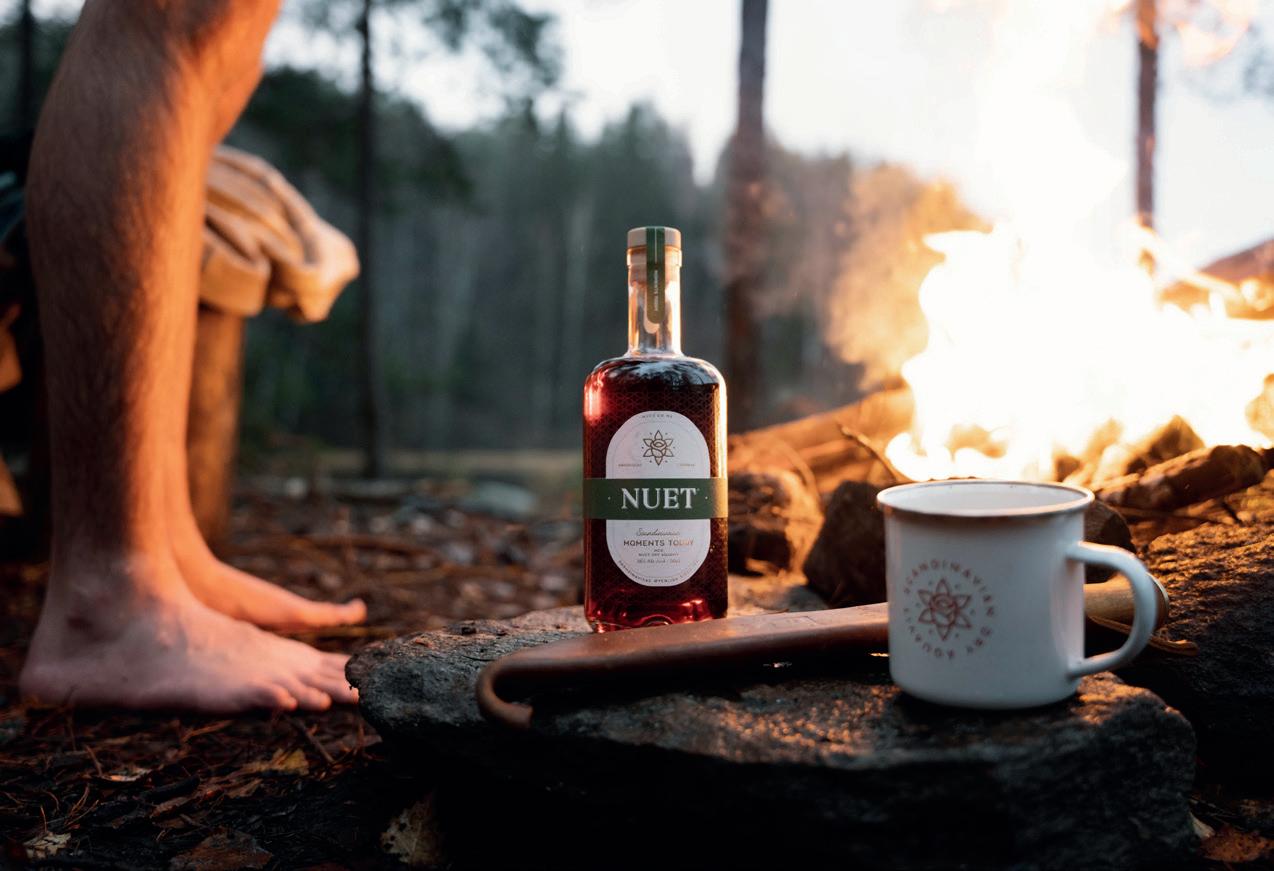 By Maria Vole | Photos: Rammelaus
By Maria Vole | Photos: Rammelaus
Nuet Aquavit has made quite a splash on the international alcoholic drinks market. The groundbreaking brand is the brainchild of founder Morten Pharo Halle. “I’ve always had an interest in food and drinks, and it struck me as a shame that aquavit, a product that is archetypically Scandinavian, is so little-known outside of our borders,” says Morten.
While aquavit isn’t very well known internationally, this distilled spirit has a long history in the Nordics. The word comes from the Latin aqua vitae, meaning ‘water of life’ and the spirit has played a major role in Scandinavian drinking culture since the 15th century.
For Nuet Aquavit, the focus is on honouring tradition while thinking outside of the box – putting a modern twist on a classic spirit. “Our mission is to capture the Scandinavian spirit through the most innovative aquavit products ever created,” says Morten.
Based on 500 years of Scandinavian traditions, Nuet Aquavit currently has a two-product line-up. “We’d rather do a few things well than doing a lot of things half-way,” says Morten. With their first product, Nuet Dry Aquavit, the goal was to create the smoothest, most versatile aquavit ever made – a spirit that would
be well-suited to cocktails. Morten and the small team behind Nuet Aquavit spent around 8 months and over 100 test distillations developing the recipe to get it right, taking a lot of inspiration from gin. “We wanted to combine the best of tradition with the best of innovation, to create a good blend of the traditional and the modern,” says Morten.
Nuet Dry Aquavit follows a fairly traditional distillation method – it is distilled in the same way as a London Dry Gin in that no flavourings are added after the distillation process. The drink is made with potato spirits from Norwegian Hoff potatoes and caraway, which is a key ingredient in all Norwegian aquavit, sourced from Inderøy in Trøndelag. “Our innovation revolves around the ingredients,” Morten explains. “In many other traditional Norwegian aquavits, you’ll find ingredients like fennel and star anise, which we’ve replaced with fresher, more modern, botanical el-
ements like grapefruit peel and blackcurrant as well as ingredients that you more commonly see in gin, such as cassia bark, angelica root and seeds and pink pepper.” Unlike traditional aquavits, Nuet Dry has no added sugar.


Their second product launching in late 2021 was Moments Toddy – an aquavit-based liquor made with Norwegian apples and blackcurrants. The sweet, spicy, citrusy drink is a grown-up version of the warming spiced blackcurrant toddy most Scandinavian people remember from their childhood. Nuet Aquavit’s products can be bought on their website with delivery to most European countries as well as Singapore and Australia. Consumers in the US can purchase via The Whiskey Exchange, which also ships to many other countries internationally.

Though it is a proudly Scandinavian brand, Nuet Aquavit has clear global aspirations. “I want to put Scandinavian spirits, culture, lifestyle and values on the world map through creating new and innovative aquavit products. Aquavit embodies everything that is Scandinavian, and I want it to reach its full potential,” Morten says.
The name captures the brand’s unique spirit and ethos – ‘nuet’ means ‘the now’ in Norwegian, and is often used in the phrase ‘lev i nuet’ – ‘live in the now’.
“Living in the now is a huge part of the balanced Scandinavian lifestyle,” says Morten. “Whether you’ve just reached the top of a mountain and want to sit down to take in the view or have come to the end of a busy working week, being able to exist in the now and enjoy the moment is important.”
Morten’s all-time favourite cocktail is a dry martini. “A Nuet Dry Martini is very easy to make, and it’s an honest and unpretentious drink. It displays the full spectrum in Nuet – since it’s served cold, more flavours and aromas will emerge as the drink starts to warm up.” Recently, he’s also found a deep appreciation for a Nuet Margarita: “it’s a citrus-forward, fresh cocktail that goes really well with the grapefruit notes in Nuet Dry Aquavit.”
Since the start, the small team behind Nuet Aquavit have seen themselves as leading the aquavit revolution. “We see a huge potential in aquavit, and we want to revolutionise how people see it,” says Morten. “There are huge opportunities for experimentation and innovation, so many ways to innovate, so many possibilities – we’re just getting started.”
www.nuetaquavit.com
Instagram: @nuetaquavit
No matter where you’re from, you or someone you know have likely experienced the growing social problem that is bike theft. With BikeFinder, those days of spending heaps on a new bike or mindlessly scouring the marketplace for your lost ones are over.

 By Celina Tran | Photos: Bikefinder
By Celina Tran | Photos: Bikefinder
Bike theft is growing, both on a small scale and as part of large-scale organised crime. It is a highly profitable, lowrisk crime, with almost 90 per cent of all bike theft cases in the UK over the last three years being closed without identifying a suspect, and only 1.7 per cent resulting in a charge. This is where BikeFinder comes in.
Launched in 2019 after four years of development, BikeFinder is the world’s first bike tracker. “The idea came shortly after Find My iPhone. Since then, we’ve established our company in Norway, developed and launched our product and software, and slowly made our way out into the world. Today, our products can be found in 32 different countries across the world,” says CEO and manager Birgitte F. Sunde.
First and foremost, BikeFinder is a software company. Along with the actual
tracker, there is an app and a software platform to help the owner locate their bike. “It gives people the freedom to ride and lock their bikes wherever they please without the fear of theft,” says Sunde. “Using multiple state-of-the-art tracking technologies including GSM, GPS and Bluetooth, the tracker not only locates but detects and alerts you if anyone is touching your bike.”
In case of theft, customers alert BikeFinder which guides them every step of the way, while also working closely with the police to ensure that the bicycle is safely returned to its rightful owner. 75 per cent of all bikes reported stolen to BikeFinder are found again.
“In some cases, one tracked stolen bike can lead police to several, often part of organised crime where the perpetrators will steal, dismantle, and ship bikes out
of the country for resale,” says Sunde. “Police in several countries, including Norway and the UK have used our trackers to stop organised bike theft, and we’re proud to make their jobs easier.”
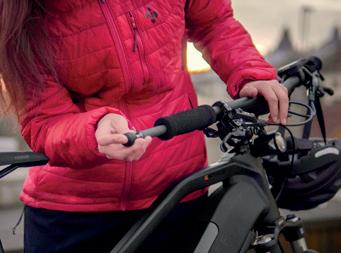
Sunde reports that though the demand for such a product has always existed, it has completely taken off after the pandemic. BikeFinder, once a small, Norwegian tech company, is leading the global market. “But there’s more to come,” says Sunde with a secretive smile. “I can’t say too much, but we will be launching some interesting product news at Eurobike this summer.”
www.bikefinder.com

Instagram: @teambikefinder
Facebook: teambikefinder
A picture tells more than a thousand words, they say.
But what if there are no words?
Just the sound of the sea and the wind. And an island.
Far out in the Finnish Archipelago, off-grid.

Where design follows the landscape.
Where your only job is to light the logs for the sauna. To switch off from time. To disconnect from the world. To reconnect with the nature. With yourself.
A place where feelings and experiences count more than words or pictures.
A place to simply be.
www.project-o.fi
Project Ö
The island to be.
Nestled on the secluded island of Kökar, southeast of the Åland archipelago, Brudhäll Hotell & Restaurang is a quaint pearl and gateway for culinary delights, natural beauty, and the soulful simplicity of Baltic island life.


 By Oliver Hugemark | Photos: Destination Kökar AB
By Oliver Hugemark | Photos: Destination Kökar AB
“Kökar is a special feeling and state of mind,” says Natalie Björk, a Kökar native and the current manager of Brudhäll Hotell & Restaurang. “It’s a hidden gem in our outer archipelago with an exquisite natural light and magically serene summer nights right by the Baltic Sea.”
Since taking the reins seven years ago, Natalie has infused the heart of Brudhäll with her ardour for the archipelago, continuing the traditions of rustic, eco-conscious living that honours the archipelago’s sustainable and intentional way of life.
“The islanders of Kökar have always lived in harmony with nature, the ocean, and the weather,” explains Natalie, who has a degree in Life Sciences. “I believe that’s why our care for nature out here is so strong—we live with and off of nature.” Breathtaking nature experiences await at every turn on Kökar, from excursions
along the St. Olav Waterway to relaxation in the hotel’s waterfront jacuzzi. Gastronomy also forms a central part of the Brudhäll ethos.
“We have a great passion and enthusiasm for food at Brudhäll, and we source produce and natural ingredients like Baltic Sea perch and Åland beef tenderloin locally,” says Natalie. “My business partner, head chef Valters Rozental, is a true artist in the kitchen, and he blends the modern influences of international gastronomy with traditional Åland cuisine.”
Many guests seize the opportunity to explore the small, legendary island of Källskär, situated far out along the Kökar sea band. During the summer season, Brudhäll Hotell organises daily guided private tours to this destination, famously known as the retreat of eccentric Swedish baron Göran Åkerhielm.
“Many people come to Kökar only to experience Källskär,” explains Natalie. “There is a unique ridge cabin by Finnish architect Reima Pietilä, statues of the likes of Hercules and Hermes, a Mediterranean-inspired vineyard and rhododendron garden, and much more.”
While Kökar remains largely undiscovered by people in and outside Scandinavia, each visitor who steps foot on the island instantly feels a bond with it, according to Natalie.
“Kökar soothes your soul and gives you a bigger perspective on what truly matters in life,” she says. “Here, you have the time and natural inspiration to create, cherish and share unforgettable experiences.”
www.brudhall.com
Instagram: @hotellbrudhall
Facebook: hotel.brudhall

Tucked away at the end of a quaint country lane adorned with rustic farmhouses and red barns on the western outskirts of Åland’s main island, you’ll discover Björnhofvda, a farm-charm country lodge that exudes an air of homely luxury.
 By Oliver Hugemark | Photos: Björnhofvda Gård
By Oliver Hugemark | Photos: Björnhofvda Gård

“Björnhofvda, much like the rest of Åland, is a true sanctuary in Scandinavia and the Baltic Sea,” says Hans Lindmark, who operates and resides at Björnhofvda Gård along with his wife, Jackie. “It’s a place where time seems to have partially paused, offering a simpler, slower pace of life.”
A leisurely thirty-minute drive from the capital of Åland, Mariehamn, Björnhofvda was the inherited summerhouse of Hans and Jackie until 2012, when they established a small-scale B&B. A few summers on, they found sharing their affection for the Ålandic country lifestyle so endearing that they resolved to construct the guesthouse of their dreams from scratch.
“We built the main house in a distinctive British-heritage style, which is rather uncommon for the Nordic region,” explains Hans, who managed the entire project, collaborating with local craftsmen. “Both
the architecture and aesthetics of the house drew inspiration from mine and Jackie’s travels around Asia and her native England, and we find that many enthusiasts visit us purely to experience and learn more about the house itself.”
At Björnhofvda, up to 20 guests can be accommodated in three cosy wooden buildings, each of which features thoughtfully furnished rooms and design influences from as far afield as Asia, as well as Åland. In the unpretentious restaurant in the main building, Hans and Jackie, alongside their small team and experienced longtime chef, serve up hearty breakfasts, French-Italian-inspired dinners made with the finest local ingredients, and traditional afternoon teas on weekends.
“Our motto is effortless elegance,” states Hans. “We provide luxury and a sense of refined living, but with the relaxed and comfortable feeling of home,
which certainly extends to the dining experiences we offer.”
When guests aren’t admiring the exquisite architecture, engaging in conversation with the Lindmarks, or lounging in one of the sociable common areas, they are often found enjoying the outdoors, cycling in the forest, canoeing along the rugged coastlines, swimming or using the sauna on the dock.

“People come here to be soothed and delighted by the idyllic ambience and the delicious food,” he says. “They come here to visit the wealthy distant relative they wished would invite them to their country home every once in a while.”
www.bjornhofvda.com
Instagram: @bjornhofvda


Loviisan Wanhat Talot ry (LWT) is the association celebrating wooden houses and the building tradition of Eastern Uusimaa. It cherishes houses built over five centuries ago, with the oldest houses stemming back to the 16th century. You can visit these living heritage sites at the end of the summer when LWT will organise its annual open doors event, inviting visitors to explore the historical houses and interview their owners.
By Ester Laiho | Photos: Loviisan Wanhat Talot ryLoviisa is a quaint municipality and town 56 miles from Helsinki. The area has a vast amount of old wooden houses. It is these houses and the associated lifestyle that made the chair of LWT, Nina Wiklund fall in love with Loviisa and which led to her buying and renovating her own house, which won the title of third most beautiful home in Finland a few years ago.
“I actually won tickets to the event on Facebook in 2011 and I remember telling my friend that this is the way I want to live. In 2013 I had the opportunity to relocate here for work and while renting, I was feverishly looking for a house to call my own. There were many beautiful houses but I had to hold off, until I could find one that was the right size for me and my cat.”
The process of renovating a house, not to mention an older house, is nothing close to easy or linear. Wiklund had to install a bathroom that fits with the old architecture, so consulting with architects and waiting for different permits added extra time and cost to the process.


When she would find herself overwhelmed and second-guessing the process, she had to remind herself why she embarked on this journey in the first place: “I thought of the house and the whole renovation process as if it was a romantic partner. I reminded myself of why I fell in love with the house and how good things take time. And I have no regrets.”
This year there will be 42 houses to visit with a variety of newcomers and old
favourites. The lineup will also include houses that are actively being renovated to showcase the process. The event takes place during the last weekend of August, and visitors will have the opportunity to admire the architecture but also visit the Antique or Crafts Fayre for a souvenir or to try some local food.
www.loviisanwanhattalot.fi
Instagram: @loviisanwanhattalot
Facebook: loviisanwanhattalot



There are many ways to explore the Nordics and its captivating nature, but one of the most unique ways is by sailboat. Aboard Galeasen Albanus – a ship from 1988 that graces the Baltic waters and Åland’s archipelago – you can experience just this.
By Hanna Andersson | Photos: Galeasen Albanus Skeppsförening“Albanus is both the most peaceful and exciting way to get to know the Baltic waters. It is a big boat that takes you on a pretty unique journey. You can enjoy starry nights, wave to sunbathing seals, take a swim, or just sit in silence,” says Emmy Karlsson, Chairman at Skeppsföreningen Albanus.
When travelling with Albanus, you will make memories for life. You will learn how to sail, navigate the waters with the charts, hoist the sails, cook in the ship’s kitchen, and experience sleeping in a boat cabin.
“It is an experience unlike any other. It is perfect for a family, a group of

friends or colleagues who are ready for an adventure. It’s not fancy in any way –there’s no shower on board, for example. But to travel across the waters and appreciate nature in this way is truly extraordinary,” emphasises Karlsson.
None on board, but the small Finnish guest ports along the way will provide you with showers and, of course, saunas. This grand vessel is one of the most authentic ways to journey on the Baltic waters.
www.albanus.ax
Instagram: @albanusaland
Facebook: Albanus Åland
Every time I have the honour to speak to foreign groups about Swedish companies and the Swedish sustainable and innovative ecosystem, I get the same wow reaction. The wow was confirmed the other week by a tweet from Anand Mahindra, chairman of the Indian conglomerate Mahindra Group, which said “Sweden’s population is less than 11 million. Half of the Mumbai Metro region! Yet this tiny country has created iconic global corporations like Ericsson, Volvo, Saab and even Spotify through cutting-edge innovation. What’s their secret?”
The answer? Swedish companies are at the cutting-edge of change in energy, green batteries, transport, healthcare, and manufacturing.
Business Sweden has a unique purpose helping Swedish companies internationalise and find new markets – and supporting international companies in
investing in Sweden. This assignment is constantly inspiring given the unprecedented demand for solutions, technology, and expertise needed to be competitive in the green transition.

Being sustainable is no longer just a matter of doing good for the sake of the planet and coming generations. It is a
matter of doing good for business and shareholders. Consumers, investors and legislators will not accept anything but the best when they make their informed decisions on what to buy or where to put their money. And in small, under 11-million-strong Sweden, there is a surprising number of mould-breaking, disruptive technologies that are leading and changing the world.
With offices and local teams in over 40 markets worldwide, we use our networks and knowledge to connect new tech from Sweden with markets around the world. Partner with us and we will help you with everything from strategic




As trends come and go, Eton remains a steadfast companion to the modern man and his wardrobe. Empowering him with style and personality through every seam, button and collar, Eton has been pushing the boundaries of shirt-making since 1928, transforming both the business itself and the landscape it lives in.
 By Emma Rodin | Photos: Felix-Odell
By Emma Rodin | Photos: Felix-Odell

Indeed, innovation has been driving Eton since the beginning with numerous creations and milestones contributing to the brand’s success. Perhaps one of the most notable one was pioneering the wrinkle-free cotton shirt – a revolution within menswear. Technical products aside, innovation runs through every strain of Eton’s DNA and extends to its service offering, too.
“Recently, we’ve introduced an interactive in-store tool with an ‘Endless Aisle’ feature that showcases our entire range to the customer at ease. And if the item they want isn’t available in store, they
can simply place the order with the sales associate and receive it in a few days, directly at the store or straight to their home,” explains David Thörewik, CEO.
You can’t talk about innovation without mentioning the classic white shirt. Simple, yes. But also, an icon which has evolved in purpose, function and construction over time, becoming an essential part of every man’s clothing arsenal.
A white shirt is a wardrobe staple as much as a statement piece, suitable for casual button-down Sundays, dinner dates, formal business meetings and everything in between. Generally, the versatility of a white shirt is a given. However, when it’s a white shirt made by Eton specifically, the highest level of craftsmanship and quality come as a bonus.
“With 95 years of expertise behind Eton, we can safely say that we have mastered the art of crafting the white shirt down to its optical white colour. For many customers, it has become the gateway to our brand,” says Thörewik.
Speaking of 95 years in business, Eton will celebrate this milestone come autumn with a captivating campaign that aims to embody the essence of Eton by highlighting its most iconic shirt (hint, it’s their White Shirt). Holding a special place as the brand’s origin, this shirt has remained a focal point of Eton for nearly a century.
“The boundaries of a white shirt are limitless, and I find that truly liberating. In my opinion, its enduring relevance is undeniable, and I confidently predict that it will continue to be a timeless wardrobe staple for at least another 95 years. And we want to showcase this sentiment within menswear fashion this autumn,” says Thörewik.
Those looking for custom-made shirts are in luck, too. Whether they need a tailored white shirt or they’re looking for particular fabrics or certain styles of collars and cuffs that fit their prefer-

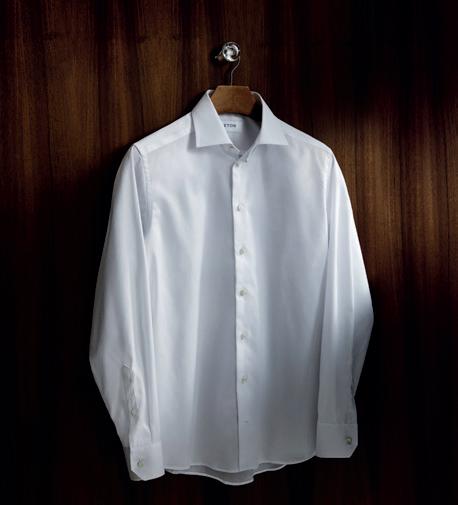
ence, customers can make use of Eton’s personalised service.
They can even add their own monogram to a shirt. Adding a personal stamp will make the garment even more valuable, framing it as a keepsake for years ahead.
“This service allows for the ideal fit and unique style expression while reducing fabric waste and stock volume. With custom-made and on-demand options, we empower our customers to actively participate in the creation process and find the perfect fit for them,” explains Thörewik.
On the topic of waste and fabrics, it should be said that Eton is committed to its sustainability goals which include reducing our climate emissions and opting for materials with a lower climate impact, without ever compromising on quality or style.
A good example is the use of Organic Supima cotton yarn, which is spun from a rare, extra-long staple cotton that is grown in precise conditions. Not only is this cotton remarkably resilient, but its inherent quality also contributes to the durable draping of Eton’s shirts: it will look as good 10 years’ time as it does today.

Next in store
Eton takes pride in offering products that go beyond mere fashion statements, embodying confidence, sophistication and individuality. The brand’s vision extends beyond fleeting trends as it strives to create enduring pieces that stand the test of time.
“However, it’s not just about the longevity of our products, it’s also about understanding our social responsibility as a global brand and infusing it into everything we do. Sustainability, ethical practices, and a commitment to making a positive impact are integral parts of our ethos,” says Thörewik.
Always catering for customers who recognise the value of quality and style, Eton is now embarking on a global brand concept and store expansion plan, reflecting an increased demand and commitment to its digital-savvy customers.
“We’ll continue to set new standards in the menswear industry and deliver exceptional value to our customers,”says Thörewik. “It’s our pleasure to help them feel their best in every aspect of their lives,” he concludes.
www.etonshirts.com
Instagram: @etonshirts
Facebook: etonshirts
Whether stepping into a crammed market stall in Nepal or a supermarket in London, the shelves are likely stacked with Tetra Pak’s cartons. The Swedish food packaging and processing giant supplies 200 billion cartons every year – even to the remotest parts of the world – while investing heavily in developing the most sustainable packaging and food for the future.
By Bitte Wraae | Photos: Tetra Pak“We are committed to making food safe and available everywhere. It’s not only our guiding star and inspiration, it’s our DNA,” says Marie Sandin, managing director for Tetra Pak in Sweden.

Tetra Pak pioneered the aseptic technology back in the 1950s, extending the longevity of food products, enabling wider distribution, and allowing products to be stored ambiently, without refrigeration or preservatives. It was a game-changer in the way food is produced and con-
sumed around the world, and the company continues to innovate, developing new technologies and products to meet the challenges we face today.
By 2050, the global population will reach 10 billion, which means food production needs to increase by 70 per cent, while reducing today’s high level of food waste. Tetra Pak is committed to developing new food alternatives, along with sustainable packaging solutions, says Marie Sandin.
“We already have a critical role in the global food system, but we want to help transform it. That’s why we’re also working with alternative proteins – from plantbased beverages, fermentation, fungal fibres and microalgae to insects and laboratory-grown alternatives to meat, milk and egg whites. Delivering on our vision is more important than ever before.”
In parallel, Tetra Pak’s experts are working hard with partners to create the world´s most sustainable packaging material. Today’s paper-based carton packages are already recyclable, where adequate collection and recycling infrastructures are in place. In places where collection infrastructure is still being built up, Tetra Pak co-invests with recyclers in new facilities to increase capacity.

Marie Sandin says she is proud of representing a company committed to innovation, sustainability and customer focus. “Just think about it: sitting at the breakfast table with your family, you’re surrounded by beverage cartons that, in some shape or form, have been around for over 70 years. However, what’s inside is really changing. Young people, like my daughters, have a strong say in what’s being served at home. Today, plantbased food is growing in popularity,” says Marie Sandin.
Not many know that the world’s largest industrial product development centre is
Tetra Pak’s, in the city of Lund in south Sweden. Customers from all over the world are travelling to the site to meet and work with Tetra Pak’s specialists.
“Last year, we developed 600 new products here together with our customers and other partners. We invest heavily in development, especially in sustainable packaging and food for the future. And we’re ramping up: we are investing €100 million per year globally over the next five to ten years to develop more sustainable solutions”, says Marie Sandin.

The chance to
Marie Sandin’s career with Tetra Pak spans three decades. So, what made her stay with the same company for so long? “The key has been the opportunity to grow, both professionally and as a human being: Tetra Pak has offered me every opportunity to learn and develop, and every day I get to work with incredible people! I believe in inclusion and diversity, getting different perspectives, building on each other´s strengths and daring to challenge each other. It’s all about staying connected, within and outside of Tetra Pak, to stay relevant for the future.” says Marie Sandin.
Leadership independent of nationality
Tetra Pak is a global company, with local offices, plants and co-workers all over the world. Marie Sandin may be Swedish, but her leadership is independent of nationality and more about her personal beliefs, she says.

“I believe in fostering the right amount of challenge for everyone to grow. A leader’s role is to inspire to strive for success, also in difficult times. When we inspire creativity and productivity, our co-workers will inspire others. I also believe in acting early on challenges and opportunities, taking bold decisions when needed. Have an open mindset, stay curious, and treat others as you wish to be treated.”
www.tetrapak.com
Instagram: @tetrapak
LinkedIn: Tetra Pak
World-leading in ice cream!
Did you know that Tetra Pak facilitates 50 per cent of the world’s ice cream production? From product development to factory design, the company supports all aspects of commercial ice cream production. In fact, Tetra Pak builds entire turnkey ice cream plants for their customers.
Tetra Pak was founded in Lund in 1951 when Dr. Ruben Rausing and engineer Erik Wallenberg invented a revolutionary packaging system based on cardboard.
Tetra Pak operates in over 160 countries with approximately 25,000 employees worldwide.
In 2014, Tetra Pak launched the industry’s first beverage carton made entirely from plant-based, renewable packaging materials.
After seeing an immense amount of plastic pollution on their holidays, a dentist couple from Sweden decided to do something about it. They launched Della Dental – toothpaste tablets made from natural ingredients, packed in biodegradable packaging. The small business has big ambitions: for the world to switch to waterless toothpaste and quit single-use plastic.
By Alejandra Cerda Ojensa
“My husband and I are both dentists and we have worked hard to develop tablets with fluoride that give a very similar experience compared to traditional toothpaste,” Margaretha Barholm, CMO and co-founder, says. “We know how important toothbrushing is and our products contain the recommended daily dose of fluoride, because that’s the single best way to keep your teeth in good health. But the tablets are also very nice to use and our customers love the taste of them.”
Every year, huge amounts of plastic end up in our seas. Nicroplastics have been found in drinking water and a lot of the plastic comes from our hygiene prod-

ucts. With her background in dentistry, Barholm understood how outdated the dental industry was in terms of its reliance on single-use plastic. Traditional toothpaste is comprised largely of water, despite its scarcity around the globe. This also makes the toothpaste larger and heavier to transport. Della Dental saw the potential for innovation.
“We created our toothpaste tablet because we couldn’t find any good environmentally friendly options on the market. All our products are vegan and biodegradable, including the brush head on our toothbrushes,” Barholm explains.
Della Dental also sells plant-based dental floss for those who want to remove all plastic use in their dental care. The tablet packages can be bought in different sizes, as well as travel packs.

www.delladental.com
Instagram: @dellaplanet
Discover Eleiko Prestera, a complete strength system that evolves with your needs. We put everything we have learned in more than six decades of perfecting equipment for Olympic Games and training facilities into one customisable and scalable system optimised for long-lasting performance and safety.

GARO is the Swedish company where innovation is built into the DNA. Founded in the Swedish town of Gnosjö in 1939, it is today one of the most reliable players in the electricity and e-mobility industry. Despite a challenging year, GARO has turned the tide, scaling up business with the inauguration of new production and logistics facilities in Sweden and Poland, while also launching the next level of charging solutions for the automotive industry: the GARO Entity Pro and GARO Entity Compact.
By Nina Bressler | Photos: GAROGARO is driven by curiosity and an urge to find new and smarter solutions that will benefit the whole of society - from individuals to big businesses. While the last year has presented challenges on all levels for everyone, it hasn’t stopped the company from charging forward and continuing to develop innovative electrical components that will have a true impact on the future of charging.
The company consists of two main areas of business: Electrification and E-Mobility.
While Electrification – comprising work on electric components, security, installation and product development – is the foundation on which the company was built, E-Mobility – a more recent addition – is meeting the growing demand for electric charging in the mobility industry.
The latest in their fleet of chargers for the automotive business is the GARO Entity Pro, specifically designed for apartment blocks and public spaces, and the GARO Entity Compact, the smaller version made for private homes. Both represent
the next generation of smart chargers, made to withstand heat, cold and harsh climates while looking sleek on a house wall or on a bustling city street.

“This launch is huge to us and to the market - it’s created with the future of mobility in mind. It’s prepared to match new technology and functionality that meet standards and rules within the European market. It’s designed to last for a long time and is adaptable to change with regular updates to its software,” says Patrik Andersson, CEO of GARO.
Thanks to the fact that at GARO every stage of production is completed inhouse, from design, product development and software development to security and hardware, GARO can control and oversee every aspect of the process, ensuring the high quality and standards that define the brand.
With the promise of consistent innovation and new ideas comes demand for more space to facilitate development and production. The company recently opened a new factory in Poland, where the main production of charging boxes will take place. Concurrently, the company also moved into new premises close to their headquarters in Sweden. The small town of Hillerstorp will be home to the production of customised solutions for power supply and temporary power, and is part of their preparation for continued growth in the future.
“Our physical expansion into new premises is a major step in the growth of the GARO group. We’re not slowing down; quite the opposite, we’ll always look for new ways to develop and expand, to see in what areas we can improve and provide better solutions to the public. We can’t escape it – innovation has been part of our DNA from the very beginning,” says Andersson.
An active part of the green shift
GARO has a strong focus on sustainable development and focuses on ways to reduce the environmental impact their products might have while providing smart solutions that can help the world to achieve a greener future. Apart from
their big portfolio of electrical chargers made to support the shift from fossil fuels to electrical vehicles, not just in the automotive industry but also for marinas and camping sites, their corporate responsibility stretches further.



Actively participating in the climate debate and influencing decision makers on climate policies and actions, they have the power to create real change. “We maintain a positive outlook on the future. There’s no doubt that the chal-
lenges we are facing require urgent action, but we have the tools to aid that. It’s about enabling the implementation of smarter solutions for all. We see how more businesses and private homes are switching to electric solutions every day and GARO is here to facilitate the shift,” says Andersson. An electrifying future awaits.

www.garo.se
Instagram: @garo_emobility_sverige
LinkedIn: GARO

Since 1898, the iconic Swedish glassware maker Orrefors has been crafting epic, innovative crystal glassware and art glass for everyday use and the most special occasions. Now, Orrefors is building on their long tradition of timeless innovation to usher in a new era of magnificent objects that fill homes and hearts with joy and the delight of crystalline glass.
By Oliver Hugemark Reed by Monica Förster. Photo: Andrea PapiniStarted in the middle of the forest in the southern Swedish province of Småland, Orrefors has been one of the world’s leading glassware manufacturers since its first global breakthrough at the International Exhibition of Modern Decorative and Industrial Arts in Paris in 1925.

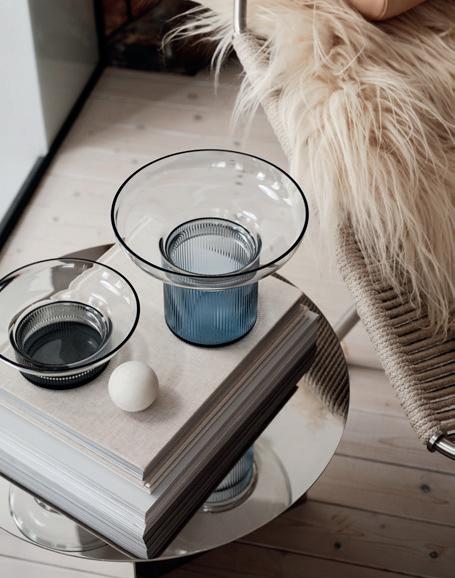
“The whole world was in awe of Orrefors’ exquisite, crystalline glass art and masterful craftsmanship at the world exhibit in Paris,” says David Carlson, creative director at Orrefors. “It was at that time that Orrefors artists Simon Gate and Edward Hald laid the very foundation for the Swedish Grace era of Swedish design as well as Scandinavian Design in general.”
Over the next years and decades, up to today, Orrefors has been hugely influential in shaping the Scandinavian design landscape and setting the quality and craftsmanship standard for glassware all over the world. After 125 successful years as a global leader in glass, Orrefors is now preparing for an even more ambitious future.
“We are celebrating our 125th anniversary by writing the first pages of an entirely new chapter in our ongoing history and evolution,” says David Carlson. “The next 125 years of Orrefors will bring out the best of the best of our legacy in new exciting brand collaborations and premium design partnerships where our quintessential brand can reach people in more meaningful ways.”
“A
In keeping with the Scandinavian design tradition, Orrefors crafts sustainable quality products that combine the best of functionality, minimalism, and exceptional elegance. It is the ability to craft timeless products that balance the classic and contemporary that truly sets the brand apart.
“Timelessness is definitely synonymous with Orrefors,” says Filip Trulsson, Chief Commercial Officer at Orrefors. “At the same time, I believe that one of the keys to our long-term success has been our fondness of and penchant for developing
products that constantly pay homage to, and build upon, our rich heritage in very authentic and innovative ways.”
From Ingeborg Lundin’s renowned apple-shaped vase ‘Äpplet’ to the Nobel collection for the Nobel Prize ceremony to a multi-award-winning martini pitcher that has been in the assortment for almost 100 years, Orrefors is world-leading in creating iconic signature products that stand the test of time.
“We have always been industriously driven by a vision as clear as our crystal glass,” says David Carlson. “Our entrepreneurial spirit continues to earn us praise and recognition around the world. For example, last week we were at 3 Days of Design in Copenhagen. Recently, we also won the Red Dot design award, the Oscars of the design world, with our new exclusive vase collection by Monica Förster.”
Distinctly contemporary and iconic Many of Orrefors’ products are included in permanent collections at some of the world’s leading museums and are often featured at international auctions. Throughout their 125th anniversary, the brand has celebrated four distinctly
contemporary and iconic product collections that reflect the past and the future of Orrefors.
“So far this year, we have paid tribute to Ingegerd Råman’s poetic cut glass collection ‘Cut In Number’ and Erika Lagerbielk’s sleek ‘Intermezzo’ tableware series,” says Filip Trulsson. “We will also be celebrating Gunnar Cyrén’s timeless Nobel series and the historic ‘Mingus’ pitcher by Vicke Lindstrand.”
More than anything, Filip and David hope and believe that Orrefors will continue to adorn homes, restaurants, and hotels around the world and bring people joy day after day, year after year.
“We want to keep making beautiful, functional, and elegant products that never fail to delight, perform their purpose, and make people smile in wonder,” says David Carlson. “Orrefors is a larger story of Scandinavian Design and a quintessential cornerstone of Swedish cultural and design heritage that we are now propelling elegantly into the future.”
www.orrefors.com
Instagram: @orrefors
Facebook: orrefors

Hestra Gloves is one of the world’s most respected manufacturers of alpine, outdoor and functional gloves with over two million pairs produced per year. The brand’s gloves are favoured by skiers, mountain bikers and hikers, as well as professional workers and fashionistas, for their premium quality, functionality and longevity.
By Malin Norman | Photos: Hestra GlovesSwedish brand Hestra Gloves dates back to 1936, when farmer Martin Magnusson started manufacturing strong leather gloves for lumberjacks in the small town of Hestra in Småland, a region known for its entrepreneurial spirit. Shortly after, a slalom slope opened in the village and Hestra quickly grew in popularity among skiers. The clever entrepreneur realized that there was a big market for ski gloves, and this was the beginning of the company’s success story.
More than 80 years on, with five factories and worldwide distribution in over 40 countries, Hestra is still a family-owned
business. “Our heritage is important to us and we are still characterized by our entrepreneurial history and setting,” says
Anton Magnusson, the company’s CEO and the fourth generation of glove makers. “Having a passion for what you do is important in order to develop and constantly improve, and our focus remains solely on gloves – designing and crafting high-quality gloves that last for many years.”
From lumberjacks to Ingemar Stenmark
In the beginning, Hestra’s main focus was on providing gloves for the Swedish market and Scandinavia. In the 1980s, the international expansion began with the export of the range of premium gloves within Europe and across the world.
The big breakthrough came with the high-profile collaboration with legend Ingemar Stenmark, the most successful Alpine skier of all time, in the 1970s. He wore the famous Stenmark glove (Stenmarkshandsken) when he won the World Cup in Madonna di Campiglio in

1974. This was also the start of a close partnership with the Swedish National Alpine Ski Team, which has lasted for almost 50 years.
“Over the years, we have had many great collaborations, including the Swedish National Cross-Country Ski Team, and we are extremely proud of them all,” says Magnusson. “We believe in creating long-term partnerships with teams and individual athletes that share our values – ambassadors who are genuinely interested in and use our products for a long time.”

Glove making and the key to longevity Hestra’s range has come to encompass everything from tough alpine gloves and hard-wearing work gloves to elegant fashion gloves. Despite the wide range of styles, many gloves actually share characteristics, and designs from previous styles often inspire new styles. No matter the type of glove, the design process involves compromises where function, durability, materials, sustainability and cost are considered, with properties balanced against one another.
Together with his cousin Niklas, who is also part of the Hestra team, Magnusson is the fourth generation of qualified glove cutters, currently the only ones in

Sweden. “We want to continue the heritage of this great craftmanship and our approach is to make small, continuous changes to improve product quality, but also to cater to the changing needs of the intended user,” he says. “We regularly integrate more sustainable materials into our products, but never at the expense of quality and durability of the gloves.”
The brand’s long-term success is indeed proof of its longevity, and the focus on sustainability extends well beyond being environmentally friendly. Hestra’s approach to sustainability is also about controlling the value chain with its own production facilities and careful selection of materials. “In the 1980s, we introduced gloves with a removable liner, so that you can replace the liner instead of the entire glove, and people thought we were crazy. It turns out, we were just a bit ahead of time.”

Hestra’s products combine durability, dexterity, and functionality. Whilst the brand shot to fame with its alpine gloves, it caters for other winter sports such as cross-country skiing, as well as summer sports including cycling, hiking, running and horse riding – and many of the gloves are actually intended for multi-sport use. For instance, you
can go from cross-country skiing one day to downhill mountain biking the next –with the same pair of gloves.
In addition to the wide range of sports gloves, Hestra’s line-up includes fashionable gloves for everyday life and special occasions, as well as professional gloves for the military and the police force, and gloves suitable for construction workers, keen gardeners and home renovators. “As experts in our field, we provide everything from robust gloves for extreme weather in winter to sleek bike gloves in summer,” ensures Magnusson. “Regardless of the season, we want to keep your fingers warm and comfy when out and about.”
www.hestragloves.se
Instagram: @hestragloves
Facebook: HestraGloves
Hestra Gloves is based in Småland with five factories worldwide, subsidiaries in the USA and Germany, as well as selected agents, distributors and dealers in over 40 countries around the world, plus e-commerce in Europe and the USA. Hestra also has its own brand stores with the world’s best assortment of gloves in Stockholm, Gothenburg, Oslo and Copenhagen.


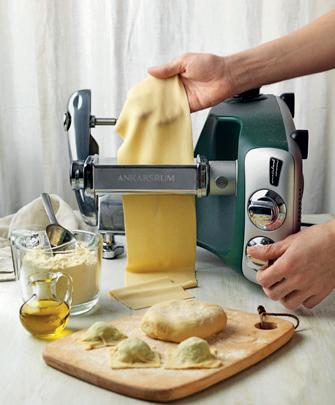

This kitchen assistant is pushing 90 years old, and is still looking good for its age. Since 1937, the basic design of Ankarsrum’s Stand Mixer has been more or less untouched. Today, it’s a foundational appliance in cooking and baking.
 By John Sempill | Photos: Ankarsrum
By John Sempill | Photos: Ankarsrum
Quality endures. The CEO of Ankarsrum Marcus Grimerö, explains why the stand mixer has stood the test of time: “it runs in the same way today as it did in the beginning in the way it kneads the dough, and how clever it is. The bowl rotates, and pulls the gluten strings instead of beating the dough. The pulling of the dough gives a better result, no matter what you are making.”
Their concept is quite unique, with the basic principle remaining unchanged since the 1930s. Although the look of the machine has had minor tweaks over the years, the growing assortment of accessories is universally interchangeable. “If you have accessories or a machine from the 1940s, you can still buy new accessories that fit today,” he explains. “You might have a lot of accessories from a machine that perhaps gave up after 40 or 50 years
of use – buy a new machine today, and you can still use the old accessories.”
Not bad at all. And from a sustainability point of view, it makes even more sense. “I’m not sure this was the main idea in the 1930s,” Grimerö continues, “but it’s clever, and maintaining this concept is key to our development today.”
Apart from a wide range of new accessories, from ice-cream makers, pasta cutters and blenders, they continuously revise their colour range. The latest addition is Coral Crush, released earlier this year. “We work with colours because we want our customers to have their machines on display,” he says. “Either to blend in or stick out, depending on what you are looking for. When it’s on display at home, we believe it will be used a lot more.”
You can sense Ankarsrum’s passion for cooking and baking, and their drive to inspire. “We don’t limit ourselves to the kitchen assistant,” he adds. “As well as the product itself, we also focus on education, learning and recipes, to help you develop in the kitchen.”
www.ankarsrum.com
Instagram: @ankarsrum
YouTube: @AnkarsrumAssistent
Ankarsrum continue to inspire with

With a 40-year history making classic slippers, Shepherd of Sweden is continuing its journey with a focus on offering genuine, handcrafted products for all seasons, made with nature’s most versatile materials: sheepskin and wool.
 By Malin Norman | Photos: Shepherd of Sweden
By Malin Norman | Photos: Shepherd of Sweden
Shepherd of Sweden is best known for its classic, comfy slippers made of 100 per cent sheepskin – perfect for everyday use and snuggling up on the sofa. In the past, its products have been more associated with autumn and winter, however there has been a boom in its summer collection of stylish sandals and shoes, the outdoor range, and accessories including a shopper and a trendy clutch. The brand is also sought-after for its extended home collection with rugs, cushions, pillows
and blankets. If you need a present for a graduation, a birthday, or perhaps a treat for yourself, a gift from SHEPHERD’s range is guaranteed to bring joy.
Founded in 1982, the brand continues to expand in existing and new markets in Europe and beyond. Its online store ships worldwide and Germany, the UK, the US and Scandinavia have dedicated local brand sites. “We believe that an omni-channel mix is important for the
growth and for consumers to get to know the brand,” says CEO Stefan Mårdh. “Therefore, our brand store carries a complete assortment all year round, and products can be found in department stores and independent retail stores, as well as selected online retailers.”
The brand is something of a cult name on the market, with customers asking specifically for SHEPHERD products. The key to its success, says Mårdh, is continuity. The products are made of carefully selected materials to get the right quality and finish. “As we are creating products mostly for people in their home environment, it’s important to produce high-quality, sustainable products that will last. That’s why we use only natural materials.”
The company works with real sheepskin and wool due to their exceptional quality and comfort – superior to all other materials on the market, and a perfect match for bare feet. Wool fibres are naturally breathable and can absorb moisture, without feeling wet. Instead, the moisture passes through, carrying away bad odours.

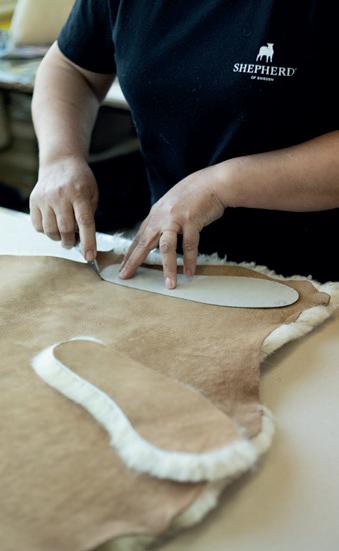

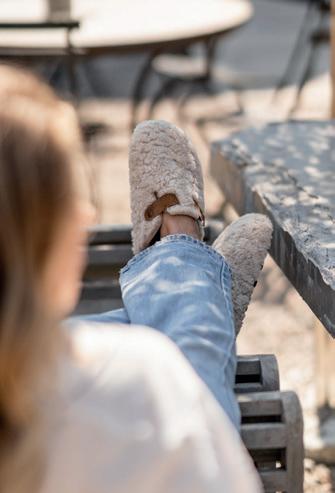
But there is more to these natural materials; wool is hypoallergenic and sheepskin is naturally antibacterial. Also,
wool adjusts to the temperature of your feet. “It keeps you warm when it’s cold, and it cools you down when it’s hot,” assures Mårdh. “And as wool fibres are naturally breathable, and have antibacterial properties, many of our products are perfect all year round, indoors or outdoors, whilst keeping you comfortable and stylish.” No wonder, therefore, that they are known as nature’s most versatile materials.
Shepherd of Sweden’s head office and warehouse are in Svenljunga, while it has its own manufacturer and partners in Europe. The company controls the production, including continuous testing by independent institutions, and follows a code of animal treatment at all stages of the process. “It’s important to know that we own the value chain,” says the CEO. “We buy raw materials directly from our suppliers, our skilled craftsmen refine and prepare the materials, and then they create the products, mostly by hand. This ensures our continuous sustainable, profitable growth.”
The design is inspired by Scandinavian nature and history – and simplicity and function are key. “Our vision is to be the world’s most attractive brand for high-quality Scandinavian-design products in natural sheepskin and wool,” concludes Mårdh. The combination of craftsmanship and pure Scandinavian design makes for beautiful, timeless, and genuine products, which more and more people seem to appreciate these days.
www.shepherdofsweden.com Instagram: @shepherdofsweden Facebook: shepherdofsweden
Renowned chef Mathias Dahlgren is constantly seeking inspiration, learning and developing new concepts. Dahlgren’s latest collaboration with Culimat ensures high quality tools to elevate the culinary experience further, in restaurants and at home.
Before shows like Master Chef on TV and Chef’s Table on Netflix were even a thing, Mathias Dahlgren became a celebrity in the world of food. With some 35 years in the industry, he has managed a number of successful restaurants and been awarded several stars in Guide Michelin. Dahlgren is the only Swede to win the Bocuse d’Or, the equivalent of the World Championship for chefs, and has been named Chef of Chefs (Kockarnas kock) in Sweden no less than eight times.
Of course, a top chef needs high quality tools and since a few years Dahlgren is collaborating with Culimat on a series of frying pans and cookware. The high-quality products can handle the tough use and everyday challenges in busy restaurant kitchens, but are just as suitable for the conscious and curious home cook. “The Culimat range is user friendly and affordable, and makes cooking more fun – I use it in all my restaurants as well as at home,” says Dahlgren.
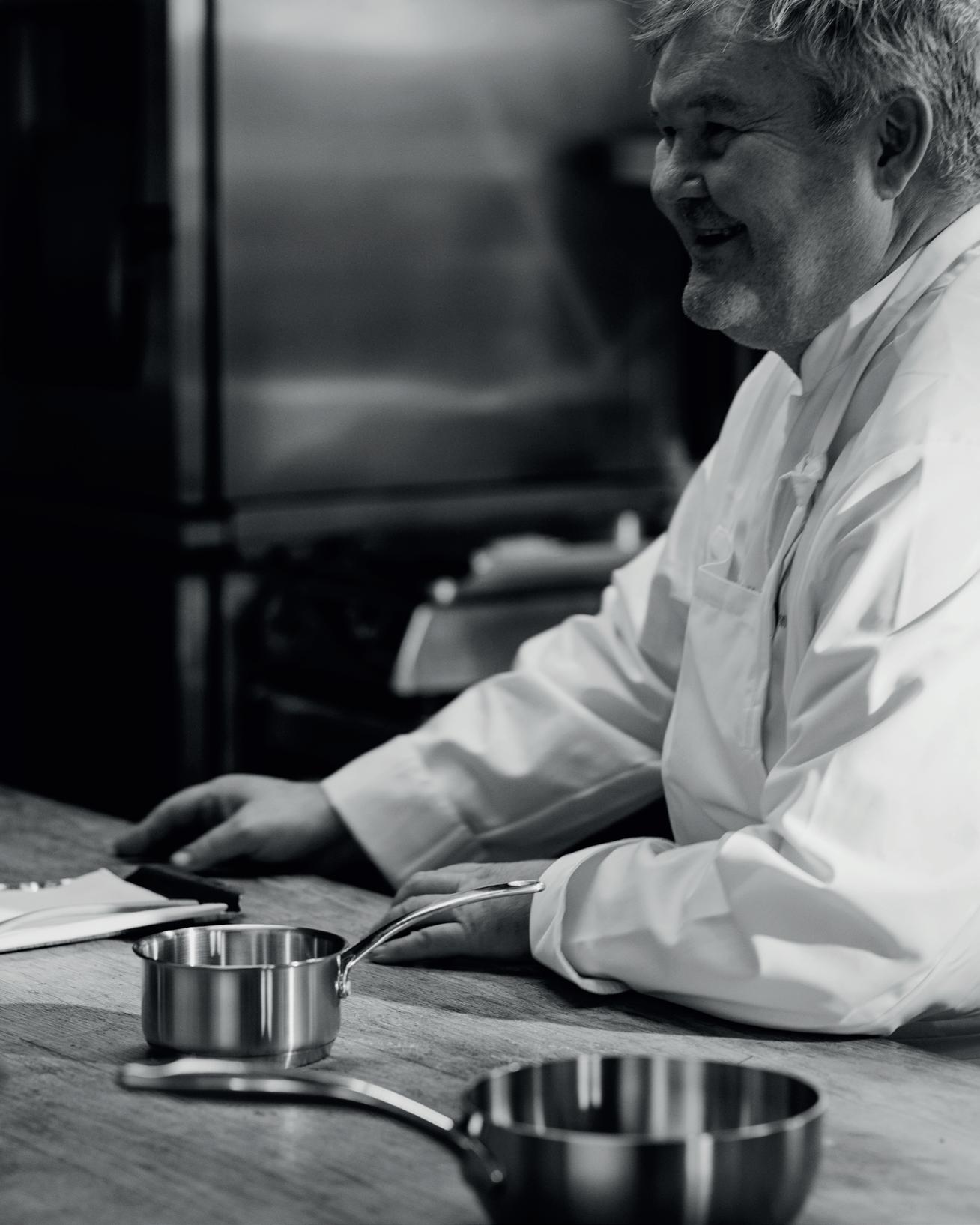
Waste collection is a big part of society and something we don’t usually consider as we go through life. However, more thought and knowledge into how this system works might eliminate the problems we see with waste collection altogether. At least, this is what Envac is working towards.
By Hanna Andersson | Photos: Envac“We want people to be more aware of how waste collection works and how smarter systems can do more than just remove bags of waste from the streets,” says Mikael Pernheim, sales director at Envac.


Envac is a waste collection solution company founded in Sweden. Their mission is to implement smart and sustainable solutions that will help cities become more efficient and beautiful. Their waste collection system is built underground, which means no more smelly bins or large and noisy trucks blocking our streets. Their system is designed to improve recycling levels, give room for greener streets, and generate less emissions than our current system.
Pernheim explains further: “imagine what an underground solution could do to our streets. We could use the space for trees,
flowers, benches, or bike racks.” With Envac’s system, residents dispose of their waste at designated collection stations. These stations are clearly marked for the effortless separation of recyclables, household and food waste. Then, bags can be dropped accordingly and will travel safely through the underground. “We want it to be as easy as possible for the users. An easy way to encourage a behaviour change which will ultimately lead to a more sustainable future,” says Pernheim.
With Envac, it’s easy to track good habits. Envac has designed a digital tool featuring an app and videos, which gives advice on your waste, recycling, and other measures to help the environment. “This tool will both encourage good habits and make it easy for people to get involved. You can see where your nearest inlet station is located, how you can dispose of all your
waste, and what you and your neighbours are doing together to improve your area. Or you can, if you’d rather, compete with them to see who’s doing a better job,” laughs Pernheim.
Cities are home to 50 per cent of the world’s population, whilst only covering 2 per cent of land. To secure a greener planet for future generations, it’s clear that waste systems need to be improved.
www.envac.se
www.envacgroup.com
Instagram: @envac_official LinkedIn: Envac Group
Using traditional methods and modern design, the Växbo Lin factory in the Swedish countryside weaves, sews, and sells beautiful linen products. Its story is one of success against the odds and today, everything is just right.
 By Marie Westerman Roberts | Photos: Växbo Lin
By Marie Westerman Roberts | Photos: Växbo Lin
The company Växbo Lin was founded in 1990 in the Swedish province of Hälsingland, an area renowned for its centuries-long history of linen production before the cotton industry took over.

Växbo Lin’s factory was built here during a time when much of Swedish industry had begun to move their production to countries with cheaper labour. Attempting produce linen in Hälsingland again was a decision against the odds, but today it’s a thriving business.
Växbo Lin is owned by married couple Jacob and Hanna Bruce. They bought
the factory from previous owner Rolf Åkerlund in 2006. It wasn’t something they had set out to do but circumstances and enthusiasm gave them the opportunity; they took it, and Växbo Lin has
become an important and successful business in the area.
“It’s the best impulse purchase we’ve ever made”, Hanna Bruce laughs. “We love what we do here, and we feel privileged and very proud to work with such skilled people and great products. Växbo Lin is one of few factories in the world that can present such a coherent chain of linen production. It’s 100 per cent pure linen made in Sweden. We are proud to be part of keeping the countryside alive, creating job opportunities in a rural area.”
Maintaining and developing the cultural heritage and craftmanship while keeping the production in Sweden has been important to the company. The products, all in pure linen, have become very popular and to keep up with demand they

are now investing 13 million SEK in six new weaving machines to increase production capacity.
Hanna has just returned from Milano, where she was placing orders for the machines. “We celebrated with champagne in the factory this morning,” she says smilingly. “All of us working here are so happy about this since it will make a huge difference for the production and for the future.”
One of their bestsellers is a bath towel that only gets better and more beautiful with use and, of course, the humble and very popular dishcloth. The weaving technique results in a fabric with a high degree of absorbency, while remaining supple. Linen offers a superior degree of moisture absorption, cleaning surfaces on the first wipe, and drying quickly afterwards. The linen dishcloth can be machine-washed at 60 °C and used again. Another big part of the production is textiles for hotels, restaurants, and public spaces, such as napkins, tablecloths, and curtains.
Traditional production
Visitors to the shop are also invited to take a tour of the factory to see how linen yarn is turned into shining linen fabric. This factory is one of few still running
linen weaving mills in Sweden and it’s a great opportunity to see the work behind the products.


The process begins with preparing the warp – the basis of any weave. Up to 4000 separate threads are put together into a warp, with threads ranging from 300 metres to 2 kilometres in length. The next step involves knotting the warp threads to the loom and threading them through heddles and reeds.
When the loom is threaded, it is time to weave. Most of the machines are shaft looms which use the same shuttle technique as manual looms. One of the oldest looms is from 1923 with pattern cards using wooden plugs. Växbo Lin make their own pattern cards with a punch machine. During the month of July there are guided tours daily for visitors. For larger groups, guided tours can be arranged at any time during the year.
In a time where we need to consume fewer and better-quality things, products made from linen – a natural material that will last for generations – are the perfect solution. Linen is a truly beautiful material and, weaving together hertitage, love and stunning design, Växbo Lin brings out its very best qualities.

www.vaxbolin.se
Instagram: @vaxbolin
Facebook: Växbo Lin
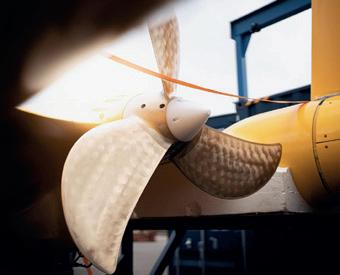


Minesto is the Swedish marine energy technology developer that started life as a spinoff from the aerospace company Saab. In 2006, engineer Magnus Landberg invented the concept behind an underwater kite that generates electricity from tidal streams and ocean currents. Today, this has developed into a unique form of ocean energy technology and a successful company, which has recently launched a product line under the name Dragon Class.
By Marie Westerman Roberts | Photos: MinestoBriefly explained, the technology generates electricity from tidal streams and ocean currents by a unique and patented principle, similar to a kite flying in the wind. A wing uses the hydrodynamic lift force created by the underwater current to move the kite. With an onboard control system, the kite is autonomously steered in a predetermined figure-of-eight trajec-
tory, pulling the turbine through the water at a water flow several times higher than the actual stream speed. The turbine shaft turns the generator which outputs electricity to the grid via a power cable in the tether and a seabed umbilical to the shore. The functionality and power production of the underwater kites have been verified by ocean testing at various scales and locations.

Minesto’s headquarters are in Gothenburg, Sweden but there are also established sites in Europe and in Asia, helping both demonstrate the technology and support the commercial roll-out of the company’s unique products. Dr Martin Edlund, CEO at Minesto, explains “one of our missions here at Minesto is to enable large-scale electricity production globally from areas where no
other known renewable technology can operate. It is something that will significantly increase sustainability and security of supply.” Edlund continues, “In many connected areas of expertise, we have teamed up with world-leading companies and research institutes, who all contribute to the technology and the product development on a daily basis”.
Minesto was representing Sweden at the global climate conference COP27 in 2022, as one of 18 companies all who are considered leaders in the green transition. And CEO Edlund is optimistic: “it is a privilege to be working with such cutting-edge technology. We are all very proud to be part of something that we know will contribute to a better climate and a better environment.”
The need for clean energy technology in the global energy transition has never been clearer, and this Swedish invention is one of the vanguards in the fight against climate change.
www.minesto.com
Instagram: @minestoab
LinkedIn: Minesto

Marilyn Monroe once said that a smile is the best make-up a girl could wear. Nothing transforms a face more than a smile, and a genuine one spreads happiness and is contagious. But not everyone has a smile they are comfortable with; they might be ashamed of the colour of their teeth, that they are a little misaligned or not healthy. Luckily, that can be fixed.
By Hanna Margrethe Enger | Photos: Kjeller TannhelseKjeller lies 20 kilometres north of Oslo and this is where you find Kjeller Tannhelse. The dental clinic is today run by Trine Bjelke-Holtermann, but it was originally established by her father in 1970. She has worked hard to make what started out as a one-man practice into a clinic with 14 employees.
“Being an owner, dentist and colleague means that you have to wear many hats at all times,” Bjelke-Holtermann says. “It also means that you must have

knowledge of how to build and run a successful business and be an employer. Most importantly however, I try at all times to be the best dentist and colleague I can be.”
At Kjeller Tannhelse, their work is close and interdisciplinary. They have a general practitioner section with dentists and dental hygienists. Having their own hygienist is crucial, Bjelke-Holtermann

says, as she does an invaluable job in teaching patients how to take care of their own teeth or dental works they have received. This may sound basic, but according to Bjelke-Holtermann, this is absolutely essential for the longevity and success of good oral health.
Kjeller Tannhelse has many patients who want to improve their smile by replacing
discoloured fillings, correcting “ugly teeth” or replacing part of a broken or worn tooth. Bjelke-Holtermann sees these patients often. “I am a specialist in oral prosthetics and work to replace lost and damaged tissue,” she says. “I make everything from various prostheses, crowns and bridges on the patient’s own teeth, fixed and removable prosthesis on implants, to rehabilitation of a collapsed bite. I also work at the other end of the scale with veneers and smile enhancement.”
The specialists at the clinic work with patients and perform complex treatments that general dentists don´t. They receive several referrals daily from other dentists, and many patients make contact on their own initiative. And Kjeller Tannhelse still sees patients who have been with them since 1970.
Many of us might have memoires of getting braces for our teeth when we were teenagers. They are not very aesthetic or comfortable. But teeth straightening has come a long way. At Kjeller Tannhelse they offer clear aligners.
“Teeth alignment can today be carried by translucent aligners that are 3D-printed,” Bjelke-Holtermann explains. “They work by gradually moving the teeth into the desired position using a series of aligners that are replaced weekly. At Kjeller Tannhelse, we only correction minor crowdings in the
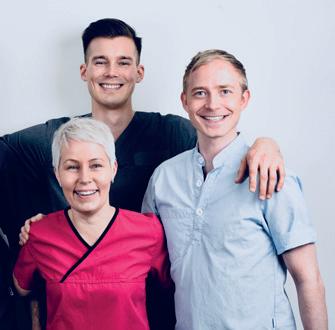
front. If major movement of the teeth is necessary, we refer the patient to an orthodontist with whom we work closely.”
Helping patients achieving their dream smile is something they do at Kjeller Tannhelse every day, but they recognise that there is a fine line between what is medically necessary and what may be felt necessary by the patient themself. “As a specialist, I receive many inquiries from patients who want cosmetic changes of their smile,” Bjelke-Holtermann explains. “At the same time, it is my job to say no to carrying out a treatment if I feel that it violates my ethical compass. It is precisely this that puts the ethics into aesthetics.”
This applies to other treatments as well. Over-treating is not something they do at Kjeller Tannhelse. “My aim when planning the treatment for a patient is that I will do as little as possible but as much as nec-


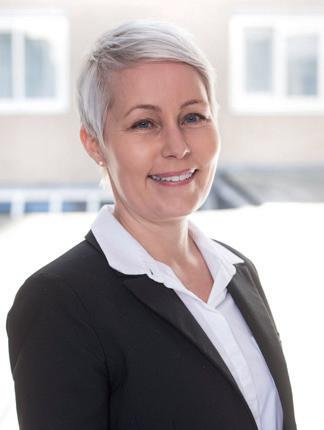
essary. I always think: what would I have done if this was my parent, husband or daughter?” Bjelke-Holtermann says.
Although technology and materials today give dentists the opportunity to treat illness and injuries in teeth and the oral cavity, the most important thing is prevention. It does not have to be complicated. “It is said that what is simple is often the best, and this also applies to the daily cleaning of your teeth,” Bjelke-Holtermann says. “A good toothbrush, preferably electric, that you use morning and night together with fluoride toothpaste without abrasives. In addition, you should use dental floss or interdental brushes. For the vast majority of people, this is sufficient to maintain good oral health.”
www.kjellertannhelse.no
Instagram: @kjellertannhelse
Facebook: kjellertannhelse
Many of us may have a dream of a different life with a different job, turning our passion and interests into a livelihood. But following through on a dream can be scary.
By Hanna Margrethe Enger | Photos: Oslo Skjønnhet og VelværeKarina Hansen opened Oslo Skjønnhet og Velvære AS in December 2019. She had worked as a pharmacy technician at Akershus Hospital in Lørenskog, but it was the same routine every day, which became boring. She needed a new challenge. Beauty and wellness had always been her passion and she dreamed of being her own boss. So, in 2017, Hansen took the leap and decided to train as a cosmetic therapist.
After going back to school and finding the perfect premises for her clinic, the dream had come true. But in March 2020,

Norway went into lockdown. While beauty clinics provide medical treatments, they are primarily places for those seeking to enhance their natural beauty and for self-care. They were not considered necessary enough to keep open.

“The dream felt shattered and at home I had a husband who supported me and my two children aged seven and ten,” says Hansen. “I had risked everything and the support from my husband has been there 110 per cent from day one.”
The timing of the clinic opening was unlucky, but amidst it all Lady Luck was smiling at her. “I remember dreading picking up the phone to call the landlord to ask if I could postpone the rent for maybe two months when the clinic was closed,” Hansen says. “When I called
him, he abruptly said postponement was out of the question... because he would pay the rent as long as there was a lockdown, and that I shouldn’t have worried about it. A heart of gold is how I would describe him.”
Going from strength to strength
Oslo Skjønnhet og Velvære survived lockdown and flourished. The clinic has grown to a staff of six, including two skilled and responsible doctors, Dr. Trønnes and Dr. Austdal, who are amongst Norway’s leading course holders in injections, and one of whom is a bioengineer.
Three years later they are very successful, but Hansen does not rest on her laurels. She often travels around the world to keep up to date professionally and takes courses at Aesthetic studio Oslo. The beauty and wellness industry is an innovative one, always improving and developing new treatments and products. “We always aim to offer the best of the best when it comes to quality,” says Hansen. “Our aim is not to change you, but to highlight your natural beauty.”

The most popular treatments are medical injections like Botox and fillers, and laser hair removal. If booking laser treatment during the summer, it is important to keep treated area covered up as it makes the skin very sensitive.
Another rejuvenating procedure on offer is PRP injections. This is where the bioengineer comes in. This is a method where the patient’s own blood is used to stimulate repair and tissue regeneration in the body. With injections, any good clinic will advise the patient on what is best for them and what will give the best result. At Oslo Skjønnhet og Velvære, they will not do more than is necessary.
Injections are not for everyone, though. A fear of needles is very real, but the clinic offers needle-free treatments like Profhilo. It is a facial treatment based on hyaluronic acid which adds moisture and has a firming effect on the skin.
PRX-T33 is a biological skin rejuvenating treatment consisting of 33 per cent TCA acid, 3 per cent hydrogen peroxide and kojic acid which work together at the cellular level. They contribute to cell renewal and stimulate the skin’s own repair mechanisms, which improves the skin both directly and in the long term.

Mesotherapy is a treatment that is carried out in a number of areas to achieve a younger look. It uses an instrument called a Mesogun and involves the use of compressed air. This stimulates the skin and helps it restore its natural strength and glow. The method also reduces wrinkles and provides a good moisture balance in the skin. The clinic also offers beauty services like lash extensions, teeth whitening and skin and body care.
“I believe that one must always follow one’s heart and dreams in order to achieve what one wants in life, but of course one must also be realistic,” Hansen says. “It will never be easy at the start, but it is important to have great friends and family who are always behind you.”
www.osloskjonnhet.com
Instagram: @osloskjonnhet
Facebook: osloskjonnhet
Based in Norway, SNØ is one of Europe’s largest indoor ski arenas. Along with the brand-new Thon Hotel Snø, SNØ offers a unique active experience.
By Celina Tran | Photos: SNØThroughout the colder seasons, many find themselves yearning for longer, brighter days. Now that we are finally sprawled out and sweating under the hot summer sun, our minds can’t help but wander back to the cooler days. Now, a short distance from Oslo, is the best of both worlds.
“The collaboration between Thon Hotel Snø and SNØ has been ongoing for a very long time, so we’re very excited to finally present this complete package and unique experience to visitors,” says Tamas Csorba, general manager at the brand spanking new Thon Hotel Snø.
The hotel is wall-to-wall with the 500m long SNØ arena, with a ski-in/ski-out feature which means that guests don’t even need to leave the hotel premises to strap on their winter gear. SNØ are open year-round and guarantee snow.
“The indoor snow arena offers a range of different activities,” says Ole Christian Mork, SNØ’s commercial director. “Whether you’re looking for a calmer


cross-country experience, the thrills of slalom, or the challenge of ice climbing, there’s something for you.”
For those who simply want a relaxed hotel experience with good food, Thon Hotel Snø offers that too. “An excellent culinary experience and service is a key focus,” says Csorba. “Staying with the theme of snow and skiing, we’re channeling the Alps and thus serve northern-Italian-inspired food, though the produce is sourced locally.”
The Norwegian hotel chain has won the Twinings Best Breakfast awards in six other districts, and Thon Hotel Snø also plans on going the extra mile to give their guests the best breakfast experience.
Though both SNØ and the hotel look forward to welcoming many tourists, they value taking care of the local community, socially and sustainably. “As a business, we have social responsibility and want to make sure that we remain a
sustainable, accessible activity for children in the area,” says Mork.
As a part of their sustainability goals, SNØ recycles their energy. The heat that is often lost in cooling down such a large arena is instead used to heat offices and other rooms. Similarly, Thon Hotel Snø have installed solar panels, are strict on recycling, and focus heavily sourcing food locally.
A visit to Thon Hotel Snø and SNØ is thus a completely unique culinary and active experience that can be enjoyed in good conscience.
www.snooslo.no
Instagram: @snooslo
Facebook: SNØ
www.thonhotels.no
Facebook: Thon Hotel Snø

Norway is known for its fjords and mountains. Walking in the mountains is practically a national sport and Norwegians of all ages have reached the top of the country’s highest mountain. For tourists, Norway is maybe more of a winter destination –but the mountains are not just for skiing.
By Hanna Margrethe Enger | Photos: RampenIn 2022 via ferrata, a new type of climbing experience, arrived in Bodø, Northern Norway. Via ferrata is Italian for iron path and is a protected climbing route usually found in the Alps and certain other alpine locations. The protection includes steel fasteners such as cables and railings,

hence the name iron path. The climber can use these to either hold onto or clamp onto.
Close to nature and the city
Bodø is a small and cosy city by the sea. It is a great place to start if travelling
to the Lofoten islands. What is so great about the via ferrata at Rampen is how close it is to Bodø. It is less than ten minutes from the city centre by car, or a 45 to 55 minute walk – a perfect activity when you only have a day or two in the city.
“The Bodø area offers a lot of good traditional climbing,” says Svein Inge Sjøbu, CEO of Rampen. “But via ferrata is something else in that it makes it possible for anyone who wants to experience the thrill of climbing steep mountains to do so, even if you don’t have equipment
or experience with rock climbing. There are no other via ferratas in the immediate vicinity. The steep via ferrata is also open in winter; very few other via ferratas are. It offers an even more unique experience and is something that visitors have given very good feedback on.”
Alongside the via ferrata, they offer abseiling and can put together experience packages together with others. This includes e-bikes, RIBs (rigid inflatable boats), and dog sledging in the winter, with more exciting activities to come.

What makes this via ferrata so special is its northern location. Norwegian weather is diverse - especially along its long coastline. The winters this far north are long and dark, but the summers are mild and light. The midnight sun allows you to climb late at night. If you are lucky, in the winter the northern lights will keep you company. With the lack of light pollution, as long as the sky is clear, you are guaranteed a beautiful sight.
In Norway there is a saying: “there is no bad weather, only bad clothing”. Rampen has never cancelled a book-
ing. Climbing in the rain with the waves crashing beneath will make anyone feel like the hero in an action movie. Just remember to dress for the weather.
Safety is of utmost importance, no matter the weather. Rampen provides robust equipment and a knowledgeable guide who leads the climb and provides assistance when needed. There are never more than six people per guide. “Our guides have a varied background but all have experience with traditional climbing,” Sjøbu says. “Furthermore, we have thorough internal training on how trips should be carried out and how any situations should be handled.”
Two different routes
Rampen offers two different routes. Both are relatively demanding, but no climbing experience is necessary. The guides are on hand to help, should you need it. The routes can be climbed by the vast majority of people who want to try. Though, if you are afraid of heights this might not be for you.
The time needed to complete each route depends on the size of the group and how many breaks you take, but a good
estimate is two hours. This includes reviewing the equipment and returning.
The first route climbs straight up from the sea. It has a lot of vertical climbing, but is well secured. This route is less physically demanding and offers a great view both out towards Landegode and Vestfjorden and along the north side of the Bodø Peninsula.

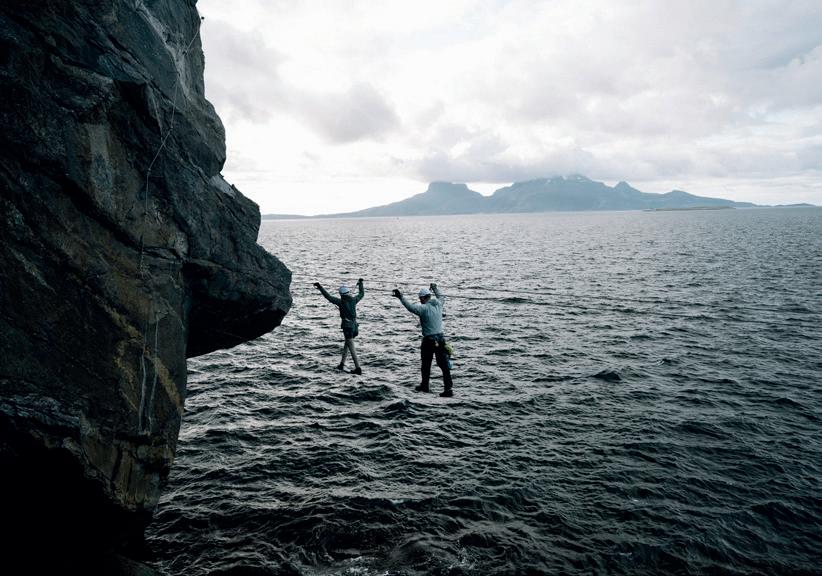
The second route follows the cliff further, vertically above the sea. Both routes begin with a Nepal bridge, and this one has an additional one halfway along the route. This route also has overhanging parts which require a bit more arm strength and may challenge the psyche.
There is no need to bring much to the climb. All equipment is provided, but it can be a good idea to bring a water bottle and an energy bar to refuel. You will probably also want to take pictures once you reach the top, so make sure your mobile phone is fully charged.
www.rampen.com
Instagram: @Rampen
Facebook: Rampen
Glancing out on the blue ripples of the famous Geirangerfjord, Hotel Union Geiranger is like a castle straight out of a fairytale. Seeped in history, the hotel looks to provide its guests with a unique experience filled with culture, luxury, and comfort.
By Celina Tran | Photos: Hotel Union Geiranger
During summer and the holidays, the big, bustling cities can feel loud and crowded. Escape the blazingly-hot concrete jungle and travel to the heart of Geiranger, a small town in Norway where Hotel Union Geiranger lies. The Swiss-chalet-inspired, family-owned hotel was established in 1891 and has since gone through several renovations and expansions to become the perfect staycation spot it is today.
Sindre Mjelva is the fourth-generation owner of the hotel, which he manages with his wife, Monja Muren Mjelva. The couple took over the family business from his parents in 2001 and have been
running it ever since, putting their own mark on the family history.
“When it first was established in 1891, the hotel was only open to guests in the summer. Nowadays, the hotel is open
year-round and features, among other things, three restaurants and spa facilities with luxurious rooms and spa suites,” says Sindre.

Along with generations of excellent service, spa treatments, and a UNESCO World Heritage Site on the doorstep, the hotel offers various culinary experiences and boasts a diverse wine cellar. Should you choose to take your meal at the hotel’s buffet Restaurant Fjorden, à la carte Restaurant Julie or Kafé Løsta, chances are that you’re enjoying seasonal ingredients from the local area.
An adventure to last generations
Sindre explains that his great-grandmother, Julie Soug Mjelva, worked as a manager at a large hotel in Åndalsnes in the late 1800s, a rarity for women at the time. His great-grandfather, Karl
Mjelva, drove guests to the hotel where she worked, and soon, there was love in the air.
“After they got together, they moved to Geiranger where Julie had seen Hotel Union up for sale. They were able to purchase it with her inheritance, and the rest is history,” says Sindre. “Later on, Julie Mjelva actually helped establish Norsk Hotellfagskole – the Norwegian Hotel Vocational School.”

Since his great-grandparents bought the hotel in 1899, Sindre says that it’s been through several renovations and extensions to both modernize and safeguard the building. “My parents, the third generation of Mjelvas, gave the hotel a new modern look and purpose by introducing pools and conference facilities,” he says. “This also meant that they could keep the hotel open to guests for most of the year, which was essential for a sleepy town on the brink of abandonment.”
Along with the spa-and-wellness extension, restaurants, and other sights and experiences the local village has to offer nowadays, Hotel Union has established a stable workspace for locals.
Today, Geiranger is an exciting destination for Norwegian and international travellers alike - even the most well-travelled visitors are unable to suppress their awe at the river rapids and majestic mountains. For those looking to visit, Hotel Union Geiranger promises a luxurious
and warm welcome with top-class service and staff that will go the extra mile to ensure a great stay.

The Geirangerfjord area is listed as a UNESCO World Heritage Site and is considered to be one of the most beautiful fjord landscapes in the world. Visitors at the hotel may also venture into the local areas, seeking thrilling adventures such as ziplining, mountain climbing or kayaking. In the winter, there are further opportunities for skiing, snowshoeing and hiking. More relaxed activities are also available, with the town offering excellent local cuisine, visits to the chocolate factory, breweries, galleries, and even festivals.
With the World Heritage Centre in town, Geiranger and Hotel Union prioritise
taking care of their local surroundings and nature so they can pass it on to later generations. With the fate of the town and the hotel being intertwined, Hotel Union Geiranger has always invested in the local community and its establishments. In 2022, the hotel’s new venture was 24 new modern apartments.
“We want more single people, couples, and families to be able to access affordable, modern housing in town,” says Sindre. “We can’t wait to see lights in the new apartments, more kids in local nurseries and schools, and more youth and adults joining the local workforce so our town can share the best of the world’s nature.”
www.hotelunion.no
Instagram: @hoteluniongeiranger
Facebook: Hotel Union Geiranger


At L’estragon in Aarhus, the ambition is to provide guests with a casual dining experience by focusing on local, organic ingredients and innovative flavour combinations.
By Nicolai Lisberg | Photos: L’estragonIt is said that the best things in life are meant to be shared, so why should a meal be any different? That is one of the key philosophies at the neighbourhood restaurant L’estragon. That is why they have been offering their guests a casual dining experience for years.
“Bottom line is that all restaurants want to give their customers something special, but the way we do it here is a bit different. I sometimes try to educate our guests a little bit, but we would really like for them to share their meal and drinks with each other. We are inspired by the Latin and southern European way of enjoying a meal, where you share all courses, whether you are two or ten around the table. We hope to create an atmosphere
that encourages people to leave the outside world and be absorbed in their culinary experience, where all they have to focus on is what’s on and around the table,” says Sisse Budtz-Jørgensen, part owner of L’estragon.
The restaurant is located in a very cosy part of Aarhus with room for 25 guests inside, and more outside when the weather is good. It’s open every day of the week, except Mondays, and on Sundays it offers a special five-course menu, adapted according to local produce in season.
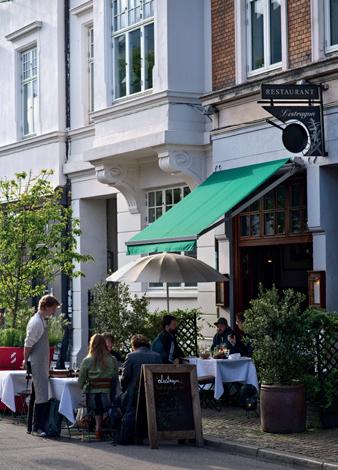
“One might think that serving something our guests haven’t tried before could scare them away, but it has actually turned out to have the opposite effect. Our guests really enjoy the element of surprise and innovation that they are met with, because they get to try something they wouldn’t normally eat,” says Budtz-Jørgensen.
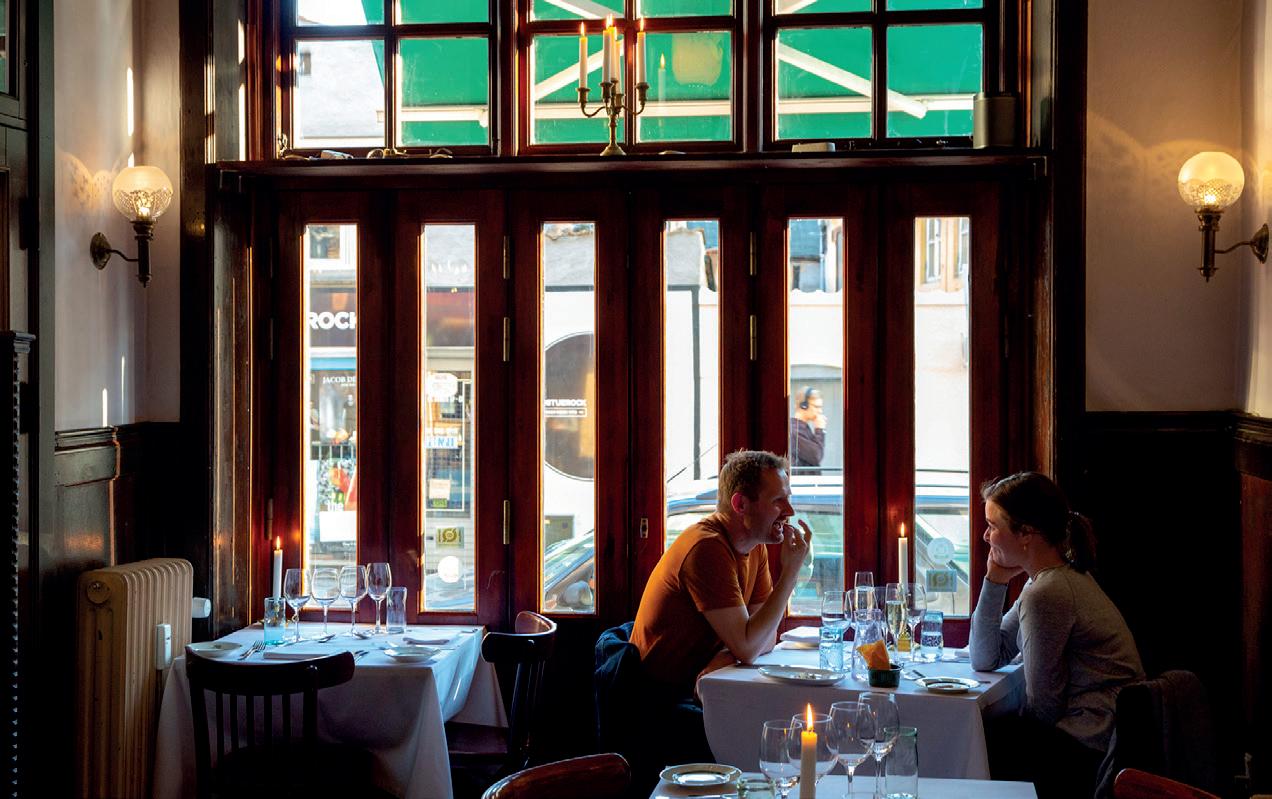
In general, sustainable cooking is a virtue at L’estragon. They use organic food, get their produce from local farmers and fishermen, and the menu varies depending on the season. The dogmas they have set for themselves require the chefs to be skilled, brave, and innovative when it comes to putting together the perfect menu.

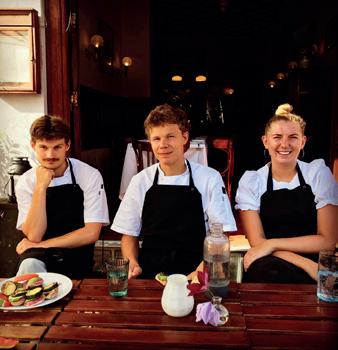
At the moment they are experimenting with a new dessert made from violets in rum and dried blood oranges mixed with pistachio ice cream. “The combinations are really something else, and I think it distinguishes us from other restaurants. We want to pique our guests’ curiosity, and we can only do that because our chefs are extremely skilled and experienced and they enjoy experimenting with ingredients. Being a chef here is rather challenging, because you never know what exactly is in season and for how long, but it also makes everything a bit more interesting for them and for our guests, who might be familiar with the vegetables served, but not the way there are prepared,” says Budtz-Jørgensen.
Although L’estragon uses the ingredients of the seasons, they preserve some of the flavours throughout the entire year. For example, asparagus are in season now and are on the menu, but the chefs also make oil from the peel. This way, they can bring back the taste of asparagus and summer during the winter


months. Another example is preserving rose petals for their homemade juices and in syrups and soups, so they can add the scent to dishes with lamb later in the summer.
“I’d like to think that we are a restaurant working with memories. That we use memories in our courses, and that is one of the reasons we have a lot of regulars. Some live close by, and some come from far away but spend their holidays around here,” says Budtz-Jørgensen. “We have even had guests who celebrated their confirmations here, and years later their wedding. This is what it’s all about. Creating memories around a dining experience.”
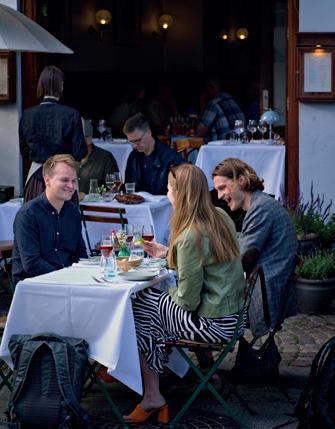
www.lestragon.dk
Instagram: @lestragonaarhus
Facebook: lestragonaarhus

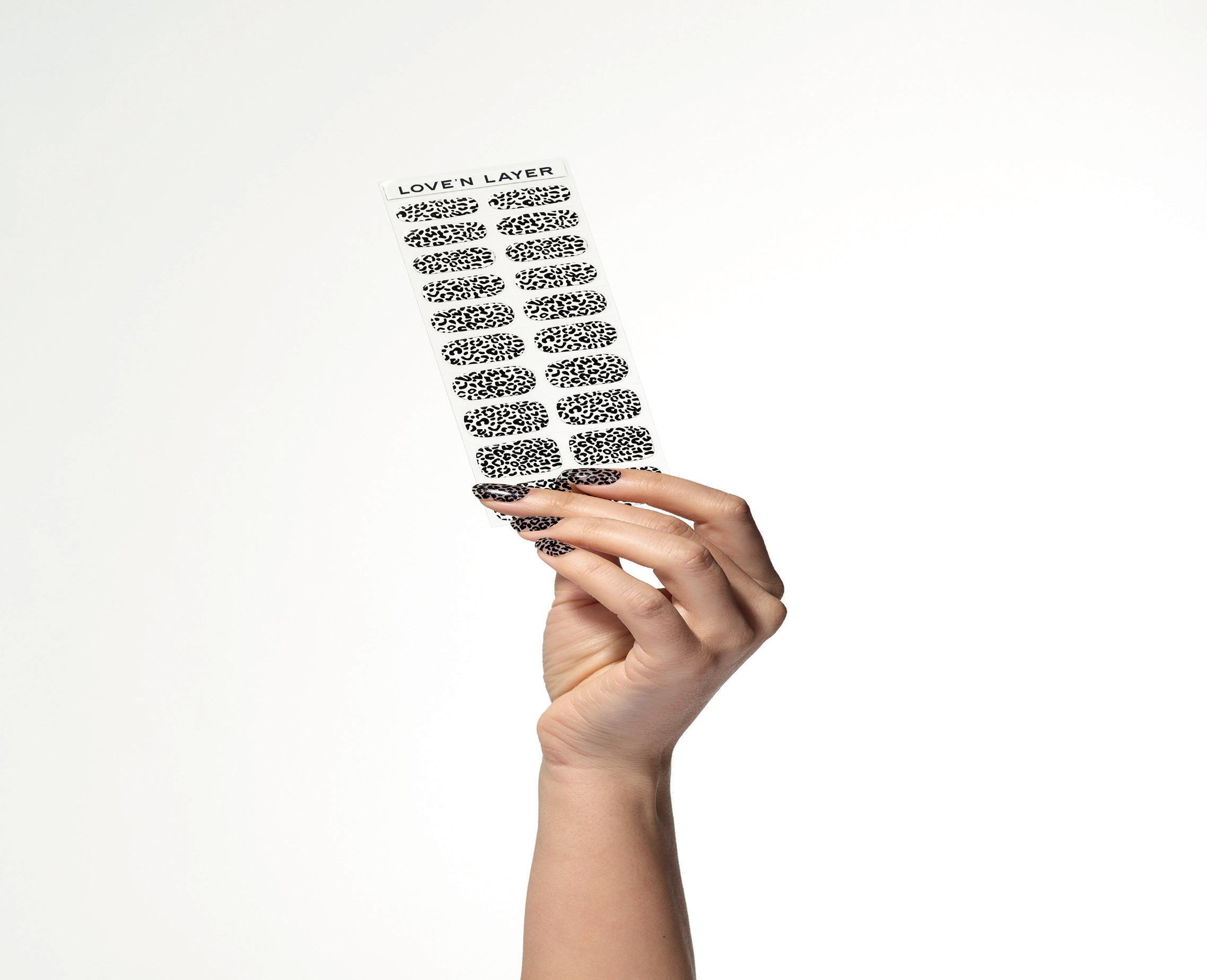


Only four houses down from the Royal Palace is Skeppsbron 10. A restaurant right by the quay, where merchant ships of yesteryear would land and trade precious international goods in the 1600s.
By John Sempill | Photos: Skeppsbron 10
These associations are part of what makes Skeppsbron 10 so unique. Taking into account that Stockholm is often referred to as Venice of the North, the surroundings couldn’t be more stunning. “We want to connect to the worldwide merchant trading of old,” says co-owner Lowe Karlsson. “To work with spices from the whole world, and yet work with ecological and local produce.”
The maritime theme can be seen inside, with galleon figures, diving bells and diving helmets complementing the dining area, with a mix of 1600s Stockholm. “We’ve renovated the interior of the building and brought it up to modern standards,” Karlsson continues. “It’s an exciting contrast, to blend the modern with the rich history of the building, and still offer top-class cuisine. The slightly rustic vibe makes it a little cosier.”

There are more exciting contrasts on Skeppsbron 10’s menu. During the summer it’s more of an à la carte. “Have a main dish, a drink, small bites,” he says. “Or a three or four course meal, if you would like. There won’t be set menus, as we otherwise offer the rest of the year. And this is the first full summer we’ll be open since our grand opening in April last year; we want to make it more accessible.”
This means offering lunch and more generous opening hours – perfect for

tourists exploring the wonders of the old part of town, Gamla Stan. Come mid-August, Skeppsbron 10 will be back to tasting menus, with snacks, starters, main dishes and desserts. ‘Classics with a twist’, as they describe it. “An example is that we flavour a Scallop Mousseline with a vadouvan, a French-Indian inspired spice mix we roast and grind ourselves, and a stuffed and deep-fried zucchini flower, served with our slowbaked and grilled cod loin with zucchini and a confit lemon and blue mussel sauce. The contrasts, the crispiness and the flavours make the difference.”
A lot of the vegetables, herbs and other ingredients are sourced from a nearby farm, with vegetables harvested on Sunday and arriving on Tuesday. The push to develop the service, sustainability, staff and working environment never stops. “There’s a steady search for sustainable ingredients,” Karlsson concludes, “to always be aware of where we can get better, both in the dining area and in the kitchen.”
www.restaurangskeppsbron10.se
Instagram: @restaurangskeppsbron10
Facebook: @restaurangskeppsbron10.se

Based in Henningsvær in the breathtaking Lofoten archipelago, I Fri Natur (“in open nature”) is a guide company dedicated to providing outstanding experiences for visitors. Professional, certified guides with years of experience lead guests safely through steep mountain terrain and share their in-depth knowledge of the region.
By Maria VoleLofoten is one of Norway’s most popular year-round travel destinations, with extraordinary opportunities for climbing and mountain hikes in the warmer months and perfect conditions for skiing in the winter. “Lofoten is one of the most exotic and unique places in the world,” says Vegard With Stennes, owner and guide of I Fri Natur. “I’ve climbed in some of the most spectacular locations
the world has to offer, and nothing can compare to Lofoten.”
The dramatic scenery of steep mountains towering above the open sea is an incredible backdrop for the many exciting outdoor experiences you can enjoy here, and Lofoten is a dream destination for those looking for an active holiday.


The iconic Svolværgeita (“The Goat”) pinnacle is the most popular mountain hike, offering magnificent views and a spectacular climbing experience. “We believe climbing is for everyone, so we create experiences that are suitable for people of all ages and abilities,” says Vegard. “Climbing is a fantastic activity because it allows you to be present in the moment, in the here and now.”
Experiencing Lofoten with knowledgeable, experienced local guides makes
it possible to take full advantage of everything the area has to offer. “We know all the secret spots and hidden gems, and we love to help visitors make the most of their time here,” says Vegard. “We give our all to ensure that our guests’ experience of Lofoten is as good as possible, and that they come away with memories they’ll never forget!”
Vegard and his team of guides work to create a good flow in their guests’ experience. “At every stage of their interaction with us, we want them to feel engaged, excited and taken care of,” he says. “We want to elevate the incredible experiences Lofoten has to offer, give our guests insight into the culture here and welcome them into the fold. In Henningsvær, we have a fantastic community of inspiring people who are passionate about nature and outdoor experiences as well as artists and musicians, and we see that visitors return again and again because they fall in love with the area and the vibe.”
www.ifrinatur.no
Instagram: @ifrinatur.no
Facebook: Ifrinatur.no

Experience a different part of Iceland at the Herring Era Museum in Siglufjörður, a maritime museum that invites visitors to interact with the past and witness life at an important point in the island’s rich history.

“Each exhibition is set up like taking a step back in time,” says museum director Anita Elefsen, explaining how everything is kept in its original context. It is an interactive museum with minimal digital input, where visitors can walk around the old docks, onto the boats as well as into the living quarters that housed the herring girls.
They tell the story of the herring adventure, a 70-year period from the early 20th century to the late 1960s, when herring fishing became a hugely successful industry, bringing trade, work, and people to the town. “Siglufjörður became the largest herring port and was often referred to as the Klondike of the Atlantic,” Elefsen explains. There was a distinct gold-rush atmosphere around the indus-
try, and it was a prosperous moment in time. However, overfishing put a stop to the booming business and thriving town. The Herring Era Museum preserves the story of Siglufjörður and its success, and what happened when this golden era came to a devastating end.

Currently, The Salthouse, an 18th century building, is under restoration. It is a huge undertaking which they hope to complete by 2025, and will include the addition of a museum café, and shop, as well as further exhibition space, enabling the Herring Era Museum to welcome even more visitors to take a step back in time.
www.herringmuseum.com

Facebook: The Herring Era MuseumSíldarminjasafn Íslands

For some people, playing with fire is just a part of the job. The ceramicists and artists Edmund de Waal and Axel Salto share a deep fascination of the transformation that occurs in the kiln. This preoccupation with the concept of metamorphosis is the focal point of the upcoming travelling exhibition Playing with Fire: Edmund de Waal and Axel Salto which will start out at the CLAY Museum of Ceramic Art Denmark.
By Signe Hansen | Photos: © Axel Salto/VISDAHere, artist and author Edmund de Waal will curate an exhibition of the work of the acclaimed Danish ceramicist Axel Salto (1889 – 1961), considered one of the masters of 20th century ceramic art. The exhibition is the result of a collaboration between Edmund de Waal, CLAY Museum of Ceramic Art Denmark and art museum Kunstsilo, Norway, and will open in Denmark 8 October 2023.

Born in Copenhagen in 1889, Axel Salto was a radical polymathic figure who crossed boundaries from one discipline to another, producing an extraordinary body of ceramic work alongside paintings, woodcuts, drawings, book illustrations, and textiles. After studying at the Royal Danish Academy of Fine Arts where he became intrigued by modernism and a progressive aesthetic, Salto travelled to
Paris, where he met Picasso and Matisse. An accomplished poet and author, he founded the influential Danish art journal Klingen (The Blade), an important forum for critical thinking in Denmark.
Salto is internationally renowned for his highly individual and expressive stoneware inspired by organic forms, characterised by budding, sprouting, and fluted surface textures that appear to ripple and burst with life.
This exhibition will bring together a significant number of Salto’s ceramic works from the collection of CLAY Museum of Ceramic Art, Denmark, and The Tangen Collection at Kunstsilo,
the world’s largest collection of Nordic modernist art. Salto’s ceramics will be shown alongside lesser-known and unseen works on paper, illustrations, writings and textiles, while a major new installation by de Waal will reflect on Salto’s enduring influence.
Edmund de Waal says: “Axel Salto is one of the greatest artists of the twentieth century. He created a unique body of ceramic work that continues to fascinate me. His sculptures seem to be on the point of change: glazes are caught in flux; vases swell as if to burst. He cared about the ways that patterns change course, shift energies, how an animal becomes a person, a man metamorphoses into a stag. Ovid ran powerfully through his life. That moment of change, transformation, is the moment when poetry occurs.”
The exhibition will be accompanied by a richly illustrated book, published by Forlaget PRESS exploring the dialogue between the two artists. The book will contain a wide range of excerpts from Salto’s extensive writings, an interview with de Waal, as well as a new essay in which de Waal investigates the concept of metamorphosis and the fusing of clay and words.
The project is made possible by a generous donation from The AKO Foundation,
a London-based philanthropic foundation. The exhibition is scheduled to travel from Denmark to Kunstsilo in Norway in 2024 and to a UK venue in 2025.
Axel Salto
b. 1889, Copenhagen. d. 1961, Copenhagen
www.claymuseum.dk www.kunstsilo.no
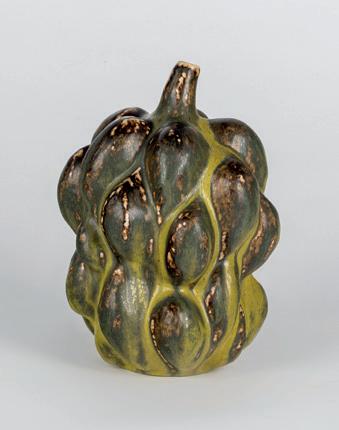

Instagram: @claykeramikmuseumdanmark
Axel Salto graduated in 1914 from the Royal Danish Academy of Fine Arts as a painter. Multitalented as he was, he also worked as designer, editor and writer. From 1917-20 he founded the avant-garde journal Klingen (The Blade) His career as a ceramicist began in the 1920s when he designed porcelain vases and bowls for the Danish manufacturer B&G (Bing & Grøndahl). From 1929 he was linked to the stoneware studio at The Royal Copenhagen Porcelain Manufactory.

Salto had numerous solo-exhibitions in Denmark, Norway, Sweden, and France. He was awarded the Grand Prix at the World Expo in Paris in 1937 and at the Milan Triennale in 1951. In 1961 he received a gold medal at the international ceramics exhibition at Musée des Beaux-Arts in Ostend, Belgium. In the 1950s, his ceramics and textiles played an important role in promoting Danish design and crafts, known as Danish Modern, in North America.
Edmund de Waal
b.1964 Nottingham. Lives and works in London.
Edmund de Waal is an internationally acclaimed artist and writer, best known for his large-scale installations of porcelain vessels, often created in response to collections and archives or the history of a particular place. His interventions have been made for diverse spaces and museums worldwide, including the Musée Nissim de Camondo, Paris; The British Museum, London; The Frick Collection, New York; Canton Scuola Synagogue, Venice; Schindler House, Los Angeles; Kunsthistorisches Museum, Vienna and V&A Museum, London.
De Waal is also renowned for his bestselling family memoir, The Hare with Amber Eyes (2010), and The White Road (2015). His most recent book, Letters to Camondo, a series of haunting letters written during lockdown was published in April 2021. He was awarded the Windham-Campbell Prize for non-fiction by Yale University in 2015. In 2021 he was awarded a CBE for his services to art.
Hanna Þóra Thordarson is the owner and creative force of Gallery Hólshraun, and the woman behind icelandic food blog hanna.is. She started the gallery with two close friends, who have since gone in different directions, leaving Hanna free reign over a unique space, where she can showcase her paintings and ceramics, and share a love for locally sourced, homecooked food.
By Trine Ejlskov Jensen-Martin | Photos: Heba Sólveig Heimisdóttir / Gallerí Hólshraun“Many things are changing at the gallery at the moment,” she says, explaining how busy she is with her creative work, setting up the kitchen, and translating her website to English to make it more accessible to visitors from abroad.
Hanna‘s passion for cooking will be incorporated into the gallery and she is excited to combine her joy of cooking, creating, and painting. “I want to unite two great loves of mine: art and food,” she explains, and she will continue to
create her ceramic pieces and paintings, as well as cooking up a storm in the gallery kitchen.
Her distinctive Hönnupottar cooking pots are a wonderful example of Hanna’s interests brought together. Each extraordinary pot is a piece of art in its own right, but made to be used in the kitchen. The pots are versatile and can be used in cooking and baking as well as for serving food. They are beautiful and unique, and became a surprising turning point in Hanna‘s life as an artist.
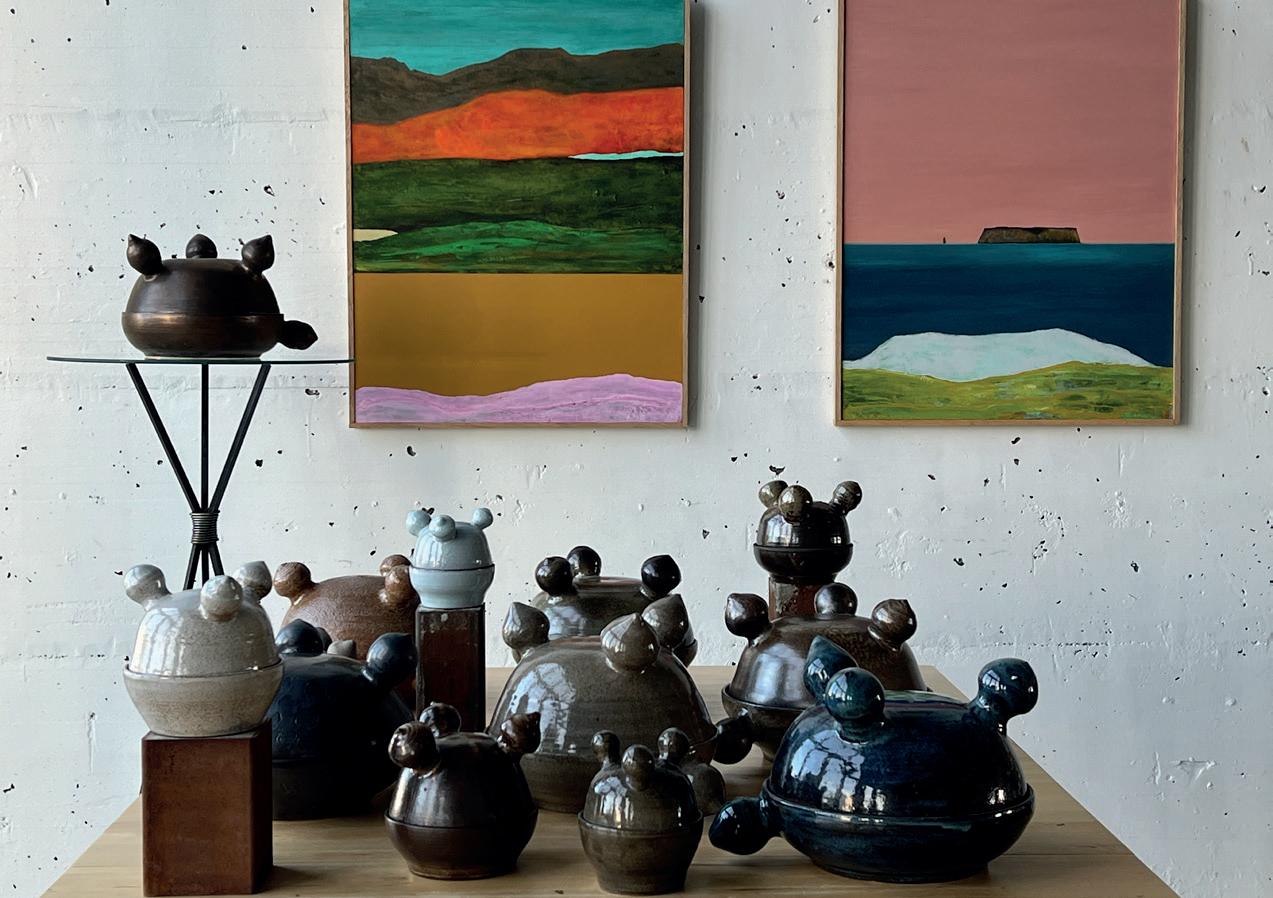




“The idea for the pots came about when I was studying ceramics. One of my teachers knew I was passionate about sourdough and suggested I make a pot for baking,” she explains. The form and shape of the pots have developed over the years, adding first two then three legs to the base, and Hanna has experiemented in her studio to make the pot what it is today.
“I love them. They are like my little babies and I always find something new to use them for,” she says. Initially Hanna used the pots at home, not thinking they would be attractive to others, until one day when she was on a coldwax painting course and a fellow student showed an interest. “I took my ugly pot with me on the course to bake some sourdough,” Hanna says smilingly, “and one of the other students, from the US, liked it so much that she ordered three!”
This marked the beginning of a larger production of the Hönnupottar, and it has since been sold to several countries all over the world. Hanna makes every pot by hand, and it is a true labour of love and patience. She has no intention of mass-producing the pots, as the process is both challenging and time consuming, and this in turn ensures that each pot is genuinely unique.
“When I was younger, I was naturally aware of what others might think of my work, and what expectations they might have,” she reflects. It is clear that she relishes the lack of outside influences and boundaries in any aspect of her work. “I never think that a painting should be in a certain way,” she says. “I do what I want to do in the moment of creation and I am not afraid of the outcome.” Hanna‘s art is as intuitive as her cooking and she enjoys each process as part of the experience. “I really enjoy a bit of painting, pottery, and cooking. I wouldn‘t want to just paint!”
Hanna‘s goal with her art and her food blog has never been commercial, and she does it all for the pure love of it. “I really appreciate my freedom to create what I want, and when other people like it too it‘s a bonus,” she says. For Hanna, this freedom to create extends beyond her workshop and her kitchen. Her passion for painting and cooking is evident, and whether working on a new coldwax painting inspired by the light and texture of her Icelandic landscape, or creating a new recipe using local ingredients, she puts her heart and soul into the process. She truly is a part of every step of creation, even making her own coldwax and, with the help of her husband, creating the wooden frames for her paintings.
For Hanna, food is synonymous with family, friends, and time spent together, which is another reason why she enjoys cooking. “Food for me is much more than just fuel, it‘s all about shared experiences and shared joy,” she says. This is why Hanna has decided to open the kitchen doors at Gallery Hólshraun and she is looking forward to sharing her art and her love of homemade food with her visitors.
Gallery: www.galleriholshraun.is
Food blog: www.hanna.is
Instagram: @galleriholshraun
@hanna.is
Facebook: hanna.is
Over the course of an almost 20-year career, the Norwegian painter, sculptor, and graphic artist Mia Gjerdrum Helgesen has explored artistic expression in a myriad of ways. In recent years, the versatile artist has developed her own technique: the relief painting.


 By Maria Vole | Photos: Vegard Kleven
By Maria Vole | Photos: Vegard Kleven
Mia Gjerdrum Helgesen is a multi-faceted and prolific visual artist. From her studio in Høvik located just outside Oslo, the artist produces a variety of semi-abstract artworks, with a focus on painting on canvas and wood, sculpting in wood, bronze and marble as well as working with textiles and graphics.
The personal connection between artist and artwork
Mia is deeply committed to her craft, often spending two years producing artwork within a certain theme before it is ready to be presented to the public. “The process of creating is of the utmost importance to me. It’s constantly developing, it’s where
I find my drive,” Mia says. “I experience it in different ways at different times. It can range from intense, emotional, powerful and brutal to a kind of yogic state where hours pass by unnoticed – a meditative process with a lot of intuitive work.”
In 2022, Mia held a large exhibition at the well-loved art gallery KHÅK Kunsthall in Ålesund, displaying over 60 new works that she had developed over the course of 2 years. Before that, she exhibited her work at the popular gallery Soli Brug in Sarpsborg in 2020.
As a well-known figure in the Norwegian art world, there is plenty of public interest in Mia’s work and its underlying ideology. In 2020, the art critic Lars Elton wrote a book on Mia’s life and artistic output over the course of her career. Presenting a wide range of artwork in retrospective alongside some of her new pieces in the new hybrid technique of relief painting,
the book offers a comprehensive insight into the artist and the notion of ‘indefinable existence’ that underpins her work.


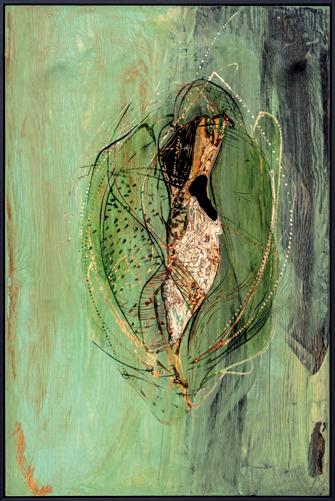
Her artwork is simultaneously personal and taps into universal experiences of the human condition - an attempt to capture a fleeting moment in time before it slips away forever. “I work with organic natural materials that mirror our existence, growth and life,” Mia says. “These are the traces we leave behind, relationships and interactions that I incorporate into the works, in the borderland between figuration and abstraction.”
The interaction between an artist and the material they’re working with is important to Mia. “My physical effort in scratching into the wood creates a direct connection between the material and myself. It feels like my nerve fibres become part of the woodwork when I carve with this intuitive approach,” she says.
Over the last few years, Mia has engrossed herself in the practice of relief painting –a distinctive, self-developed technique whereby working on and in the plate provides a three-dimensional expression.
Working with organic materials is key to her unique process of creating art.
“Wood is a lovely living material with its own structure and varied surface. The organic materials leave their mark on the artwork, and working with this makes it easy to make the important connection between myself as an artist and the material,” she says.
A creative and explorative artist, Mia employs a varied use of colour ranging from muted earth tones to vivid, rich and ex pressive shades. “I draw inspiration from my senses – everything I see, perceive, hear, experience, my soul...everything is processed internally and gives me the power to create,” Mia says. She often works with a piece over a long period of time, embedding layer upon layer of meaning onto the artwork.
Mia is an engaged and passionate artist with a keen interest in taking part in the international arts scene. Having studied art in San Francisco, Mia has also made a name for herself abroad. In fact, in 2018 the artist was awarded a summer residency at the Mana Contemporary art centre in New York. In 2021, she took part in ARTDOM, a creative collaboration between female artists in Norway and Pakistan. The innovative large-scale international art project was centred on the theme of feminism and women’s rights, with a focus on cross-culture partnerships.
Mia is currently exhibiting her work at the historical Fretheim Hotel in Flåm on the west coast of Norway. Her next exhibition will be a large separate exhibition at the contemporary art gallery Gulden Kunstverk, located south of Oslo.
www.artmia.no
Instagram: @artmiaofficial
Mia Gjerdrum Helgesen holds a Master’s degree from Oslo National Academy of the Arts, and has also studied at Westerdals Oslo School of Arts, Communication and Technology and the Academy of Art University in San Francisco. Her work is represented in multiple galleries in Norway, and she has held exhibitions in Copenhagen, London, New York, Miami and LA.

Since 1996, Lotta Jansdotter has captivated a global audience with her iconic Scandinavian print patterns. Today, her name is synonymous with timeless design and organic motifs, and the designer, author, and teacher shares her unique approach and experience through exclusive retreats in the Åland Islands, her beloved birthplace.


 By Signe Hansen | Photos: Anna Herbst, Maria Rosenlöf
By Signe Hansen | Photos: Anna Herbst, Maria Rosenlöf
With AI encroaching on the artistic fields, working with your hands, feeling the texture of the material, and letting the tactility guide you may be one of the few uniquely human modes of creation left. It is this process of manual creation, exploration, and interplay between matter and creator which inspires and characterises the work of Jansdotter. This, alongside a strong Scandinavian design identity and inspiration from the nature of the Åland Islands, is what has
made the self-taught designer and artist a force within her field.
Jansdotter started her company, Lotta Jansdotter, 27 years ago. “I have done a lot of different things, worked with magazines and written about my work and style of life throughout my career,” she says. “What keeps coming up is my process – I refuse to use technology and always have; I create all my designs by hand by cutting shapes out of paper, drawing with pens
and using my hand carved blocks. I never use photoshop or Illustrator. I could do it, I know how to do it, but I choose not to do it. I want to feel the crinkly paper, touch the glue, get ink on my fingers and cut with my hands – this process is very tactile and
very important to me – my creative process is my meditation.”
Born in the Åland Islands in Finland, Jansdotter today lives and works predominantly in Montclair NJ, US, but spends her summers in Åland where she runs her coveted summer retreats. Recently, she has set up a summer studio or, as she calls it, ‘her playhouse’ in Åland – soon to open to the public.
A global career
Jansdotter’s remarkable design adventure began when the then 19-year-old moved to California where she, after a stint at community college and a screen-printing course, began selling her simple, organic, hand-screened home accessories to local design stores. In the decades to follow, collaborations with major design stores, furniture designers, museums, and makers followed, and Jansdotter’s motifs were found on a wide range of products, from fabric, rugs, and bedding to elegant dishes, stylish luggage, and exquisite paper goods.
Furthermore, her creations have graced the pages of renowned publications such as Elle Decor, The New York Times, and O Magazine, and her artwork and sketchbooks has been exhibited in various art institutions and galleries. However, Jansdotter’s influence extends far beyond her designs. With 16 books on lifestyle, travel, and sewing under her
belt and a decade of collaborations on the Japanese market, the designer has a following all over the world.
During the later years, however, the designer has placed a greater emphasis on individual one-of-a-kind works. “I am in a phase where I stopped licensing because I don’t like the mass production, so I pulled out and cleaned up,” she explains.
As part of this process, Jansdotter has initiated a bespoke collection of limited hand screenprinted fabric by the yard. The collection will launch this fall and, like her hand-printed cushions, table linens and original artworks, will be available to purchase from her website.

Though Jansdotter today lives in the city, the beauty of her home region and the special connection she felt with nature growing up “running barefoot on the cliffs” is something she continues to return to and explore, in both work and life. “Åland is where I am from, it’s in my backbone – that special connection with nature is in my DNA,” she stresses.
In 2014, Jansdotter arranged her first Print Workshop and Nature Retreat on Åland. This annual event has become a coveted experience, with tickets for this summer’s retreat selling out in ten minutes. Surrounded by the archipelago’s unique natural beauty, Jansdot-

ter guides participants through various simple printing techniques to create cherished items to take home.
But it is just as much about creating memories, so on top of courses and incredible meals prepared from local produce, the retreat offers ample time for exploration, swimming, and spontaneous adventures. “I try not to have too much scheduled, so there’s an element of surprise – it’s also about enabling people to get out of their everyday routines, to play, feel free and connect with their creative side,” says Jansdotter.
Following her own advice, she has recently begun working with galleries, putting her work on canvas rather than utility and design items – a challenge she admits is scary but exciting. “So far, I have been painting on paper, but I am getting really excited about working on canvas. It’s a new place for me to be, but I also need to be pushed a bit to keep growing.”
www.jansdotter.com
Instagram: @lottajansdotter
Facebook: Lotta Jansdotter Official Page
Photographers: www.annaherbstphoto.com www.mariarosenlof.com
Poetic, playful and dreamy: these are just some of the words that describe Helle Skaarup Studio. Its beautiful collections, created by interiors and clothing designer Helle Skaarup, will add charm and character to both your home and wardrobe – and every single piece is handmade in her atelier in Aarhus.
By Heidi Kokborg | Photos: Helle SkaarupFrom romantic veils and elegant kimonos to charming bedspreads and poetic artwork, Helle Skaarup Studio takes a dreamy and playful approach to classic embroidery. The atelier came about somewhat unexpectedly: “I randomly made some embroidered wall décor for our old store, and people loved it, and I wondered if it was something worth pursuing,” says Helle Skaarup, founder and owner of Helle Skaarup Studio.
With a degree in textile design from Design School Kolding, creating Helle Skaarup Studio seemed only natural once she discovered her love for embroidery. “My embroideries are big, which makes them more insisting in their expression, and the stitches are big and imperfect. This creates a contrast to the natural feminine expression embroidery has, and it gives my designs a more playful and abstract edge,” says Skaarup with a smile.
The hidden veil
Skaarup’s design process is led by intuition. She is inspired by textiles, colours, and contrasts. “I just follow an idea. If it works it works, and if it doesn’t it doesn’t. It is in the creative process that the magic happens,” she explains.
A wonderful example of this process is one of her latest designs: a gorgeous bridal veil. Skaarup saw some wall dé-


cor that was all wrinkled, and thought to herself that there was a veil hidden within the wall décor. And voilá! A few weeks later, Instagram followers and customers alike had fallen in love with Skaarup’s bridal veil.

Every single piece is handmade by Skaarup herself in her atelier, and the embroideries are the result of a time-consuming process. To avoid waste, Helle Skaarup Studio has embraced slow production, and therefore only produces on demand.
“Haven’t we had enough waste in the fashion industry? To me it just makes sense to put an end to the excess and the mass consumption,” says Skaarup. Because Helle Skaarup Studio is a brand rooted in slow fashion and the embroideries are handmade, delivery times are slightly longer than you may be used to. But, trust us, the artwork is worth the wait.
www.helleskaarupstudio.com
Instagram: @helle.skaarup.studio
For orders, please message Helle Skaarup Studio on Instagram or send an email to hs@hellskaarupstudio.com


At OS Arkitekter sustainability is at the heart of everything they do. They are building for an evolving future by introducing flexible and changeable building systems and transforming urban spaces into vibrant, green oases.
 By Heidi Kokborg
By Heidi Kokborg
“We view architecture and landscape as co-dependent. Sustainability is key. Both in the strategic approach and in the beauty of the detail. We seek a sustainable approach to architecture that also creates a better quality of life and new architectural aesthetics,” say Stine Christiansen and Olmo Ahlmann, founders and owners of Copenhagen-based architecture studio OS Arkitekter.
“We need to change our immense environmental impact. As architects, this means rethinking the materials we use when building, but equally as important is a new structural approach to the lifespan of buildings and landscapes,” says Ahlmann. “We need to ensure that what we built is not demolished in the future by making it adaptable to future changes in
how we live and work, together with the challenges of climate change. There’s both great value and new-found beauty in this change of mindset,” he adds.
In recent years, we have all felt the consequences of climate change. Across Europe, countries are experiencing warmer and drier summers, and torrential rain often causes severe flooding. But, instead of fighting powers beyond our control, OS Arkitekter is finding ways to utilise and work with these changes.
“We need to create a city fabric, where the greenery is as important as the buildings – designing cities that can sustain the massive downpours and droughts we are experiencing by integrating landscape into cities,” says Ahlmann.
Christiansen agrees: “We are constantly looking at the natural cycles and systems and thinking them into our projects. As architects we have a responsibility to do so, and we need to start rethinking how we connect the grown and the built,” says Christiansen.
Whether OS Arkitekter is working on large or smaller-scale architecture projects, the heart of every project is sustainability. Among other things, this means using more timber and other biobased materials, rather than relying on concrete and bricks.
“Architecture has the potential to serve a greater purpose with every project. To work with, and give something back to the site. We have to dare to look at both architecture and the world with new eyes, and make a lasting difference,” say Christiansen and Ahlmann.
www.osark.dk
Instagram: @os_arkitekter

Whimsical kitchen equipment, modern self-adhesive tiles, characterful knickknacks to decorate a home or summer cottage – these are just some of the charming, useful, and quirky home décor items that are stocked at Lindas Dekor, an online design and DIY store located in Inderøy, Norway that customers can explore from all over the world.
By Molly McPharlin | Photos: Lindas DekorLindas Dekor began in 2008 when its founder, Linda Melby, met her true love and moved to Værøy in Lofoten. While the island was incredibly beautiful, jobs and money-making ventures were hard to come by. In 2010 she decided to open her own business.
Since there were only 750 people living on the island, Melby discovered she needed a broader customer base and started selling her products through Facebook. Her daughter Charlotte was living in New York at the time and helped her mother set up a web shop for the start-up business.
While there, Charlotte discovered there were very few rental-friendly ways to renovate an apartment. “I asked my mom to send material to create wall stickers so I could cover my tiles,” Charlotte remembers. “My mom realised there was a market for such products and found suppliers of self-adhesive décor film that could be used to upgrade tiles, walls, furniture, and more. We launched Lindas Dekor off the back of this and quickly became the largest distributor of self-adhesive film and tiles for easy home renovation in Norway.”
Neither Linda nor Charlotte had any formal training. Linda had experience within the retail industry as a manager, but everything they know about interior design and e-commerce has been self-taught. They started with a small warehouse, but always viewed themselves primarily as an online shop and
have now moved into a much larger facility in Inderøy. “Internet sales are how we reach our customers. We are currently working on setting up a small showroom, but besides this there are no plans to open an in-person store,” Charlotte says.
The main products they sell are still self-adhesive décor films and tiles, but they have also expanded to include a variety of storage solutions and home products. “What is unique and special about our products is that they are so user-friendly. Anyone new to the DIY world can easily use these products to create their dream home, regardless of budget or if they rent or own their property,” Charlotte states.

“Considering we have the largest collection of designs in Norway and Sweden, our customers can choose from a wide range – realistic wood, classic marble, concrete – that give them endless possibilities for renovating their home.”
Though they don’t consider their products distinctly Norwegian, most are what would be termed Scandinavian interior design. “Though the look we promote is mainly Scandinavian, we do like to offer whimsical, fun interiors as well.
We have a wide range of designs so anyone will be able to find something they like,” Charlotte says.
The DIY and design trend in Norway

Customers of Lindas favour a wide range of products. The marble collection of self-adhesive film in beige and white are popular. “We receive daily photos and reels on Instagram of customers creating their own custom table with this design and it always turns out so amazing,” Charlotte says. Oak minimal design products are also popular for people renovating their stairs. “It’s always fun to see how happy customers are after being able to create something on their own.”
Charlotte thinks the typical Norwegian household consists of modern design using Ikea furniture and some individual pieces from family or unique shops. A natural colour scheme is favoured with large windows that focus on the dramatic sceneries Norway offers. “We see a lot of people interested in home décor,” she says. “In contrast to other countries, Norwegians tend to renovate often, using trending designs and colours. We are currently witnessing a switch in Norwegian homes from neutral dark colours to lighter ones.”
Charlotte feels it’s difficult to choose one favourite product Lindas offer. “I’m especially fond of our self-adhesive tiles,” she says. “I love the realistic designs on these and the fact that in an hour I can have new tiles in my kitchen or bathroom without any other prep work or huge expense. They are perfect for someone like me who enjoys changing the interiors of my home often.”
An environmentally conscious business Sustainability is important to Lindas Dekor. “The products we offer are created
to reuse and redesign existing furniture and interiors,” says Charlotte. “Instead of throwing away an old table and buying a new one, you can update it easily with our self-adhesive films and make it last for several more years. The same goes for kitchen and bathroom walls, your floors, your stairs.”


The suppliers that Lindas Dekor collaborated with also are environmentally conscious in terms of their materials and factory management. “One supplier uses their excess heat from produc-


tion at the factory to heat their village,” Charlotte says. Lindas Dekor has several systems in place in their own warehouse to ensure that reusing and recycling materials is possible.
For the future, Lindas Dekor plans to continue expanding beyond Scandinavia. “Currently, we ship in Norway and to Sweden. We’re launching shipments to Denmark in July 2023,” says Charlotte. “Our vision is to keep expanding beyond Scandinavia. We wish to provide DIY-inspiration and décor to all of Europe and become the go-to online shop for all DIY needs. Especially for those who are new to that world.”
www.lindasdekor.no
Instagram: @lindasdekor
Facebook: Lindas Dekor
Pinterest: Lindas Dekor


Throughout the month of June, Scan readers shared their favourite travel moments in the first edition of Scan’s Nordic Travel Photography Competition.
From city-slicking in Copenhagen and touring Helsinki’s jaw-dropping architecture, to hiking in the fjords of Bergen and traversing Icelandic lava-fields, our intrepid community has adventured far and wide. In the following pages, we’re proud to present the 11 winning photographers – new names to watch whose atmospheric, well-timed and characterful shots capture the spirit of the north.
– Lena Hunter, Editor in ChiefBreiðamerkurjökull, Iceland
I took this picture inside the Aurora Ice cave on Breiðamerkurjökull glacier in February 2023 in Iceland.

Paulina Pierzak
Instagram: @paulina_pierz
2023 | Issue 156 |
Skagen, Denmark
Two seals swimming in a wave in Skagen, Denmark. The playful dynamic between the seals really represents the friendliness and respect that we Nordic countries share with each other. We are competitive and tease each other about our personalities and languages, but in the end, we are all part of the same family.
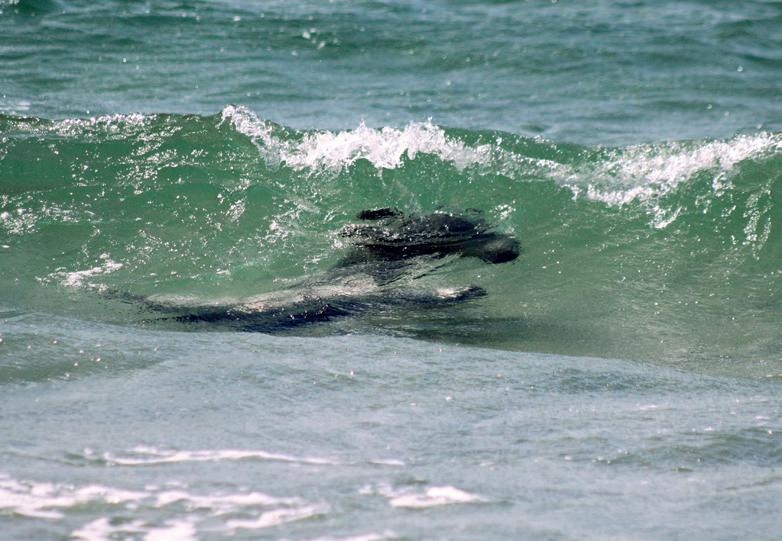
Thea Lindell

Instagram: @thealindell_
Arnarfjörður, Iceland
I’m from Spain but I have lived in Iceland for the last 3 years. This one of my favourites portraits of myself I took in a road trip of the ring road in Iceland. Dynjandi is an amazing waterfall that makes you feel stuck in the nature and never want to leave.

Oscar Croissier
Instagram: @oscarcrois @canaiceland
Ringkøbing Fjord, Denmark
My name is Anatolii Semko and I’m from Denmark. This photo was taken in the Ringkøbing Fjord. Its a view from lighthouse Lyngvig Fyr.
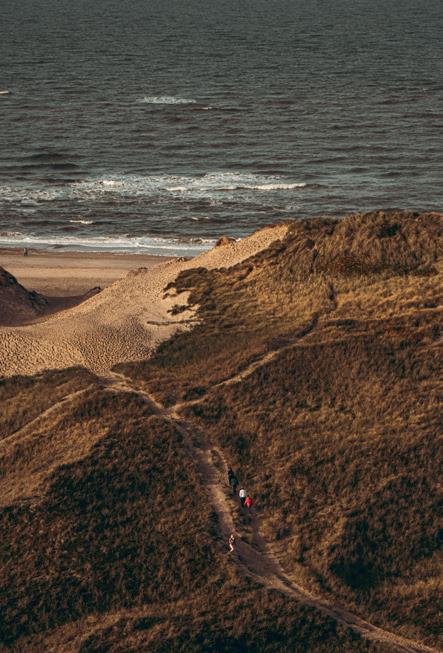
Anatolii Semko
Instagram: @anatolii__semko
I was born and brought up in Bangladesh, a warm and happening place! I realized that life is too short not to see and explore. So, I flipped my life totally and moved to the Nordics! So now I’m just living it fully and embracing the beauty of nature.
Antor Habib
Instagram: @antorhabib
This image, captured in the cold summer of 2022 on Svalbard, shows a polar bear nursing and comforting her anxious cub as the glacier calves around them.

Vicky Scott
Instagram: @roadsweknow

Title: Antlers of Aurora
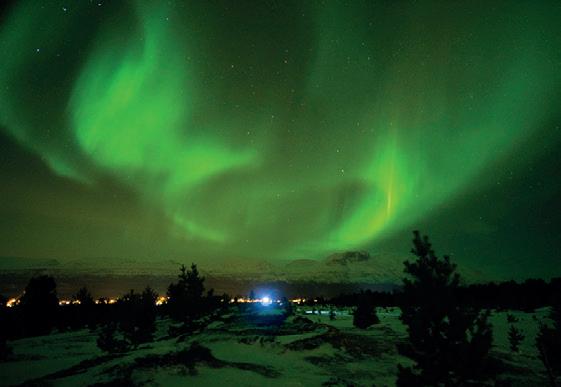
It was Christmas day and I was on an aurora-hunting trip with one of the agencies based in Tromsø. The guide decided we would stop just outside of Skibotn where the sky was clear and the lights were starting to glow. Soon after, I was standing under the sky completely green. Only one phrase came to my mind while seeing this: the aurora was shaped just like the horns or antlers of reindeer that I saw the same morning.
Arindam Ghosh
This is a photo from Iceland that I took in April without any black and white editing, since it’s a black sand beach in Vík.

Taken using Nikon Coolpix.
Sofi Christiansen
www.sofichristiansen.com
Instagram: @sofichristiansen
Exploring the livelihoods and culture of the Westfjords of Iceland - Summer 2022

Lynnee Jacks
www.currentlysomewhere.com
Instagram: @currentlysomewhere

This is Svalbard - the northernmost town in the world. The photo was taken in September 2016 during my trip there. To me, Svalbard has a beauty that can not easily be described in words. Below is a quote of Marit Hauan in Svalbard Museum that I found meaningful. It explains well the reasons why people in Svalbard choose such an isolated life:
“One question that arises is why some people left the mainland for an uncertain, isolated and risky existence in Svalbard. There were several reasons, but the desire to live freely, the dream of adventure and the hope of the big haul were probably the greatest driving forces. Helge Ingstad writes that the reason ‘had to do with the primitive instincts in man and the need for freedom’.”
Taken using Canon EOS 550D (f/5.6, 1/125 sec, ISO 100).
Hanh Doan
Here is a pic from my trip to Copenhagen, Denmark. Copenhagen is a lovely city, I’m in love with architecture. There is almost too much eye-candy.
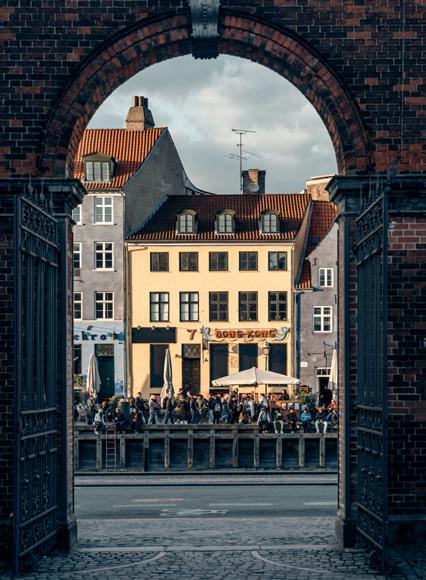
Mika Salmi
Instagram: @mkslmi
This summer sees the FIFA Women’s World Cup take place in Australia and New Zealand. And the Swedish team has got its official anthem for the occasion – courtesy of pop superstar Miss Li. Her new single Våran Sång is a suitably rousing number –all drums beating and trumpets blaring. And it’s got that trademark of any sporting anthem – the easy to chant-along-to chorus. In this case, half of the chorus is made up of “la la la, la la, la la la“s, meaning that even non Swedish-speaking folk can play along too.
Norwegian pop talent Dagny is back with a brand-new tune. And following on from the sublime Heartbreak In The Making, this new one is all about picking yourself up after that aforementioned heartbreak. On Same Again (For Love), she serves up a break-up anthem with a difference – a thoroughly positive one. Here, it’s all about

After nearly three decades in this country, it’s fair to say that I’m pretty English. But there are some areas in which I’m still firmly European. Breakfast is one of those areas. This was demonstrated on a recent trip abroad with my husband, who is British born and bred.
We rented a flat in the centre of Rome and were recommended a local bakery for our breakfast needs. The place was tiny, its single window elaborately stuffed with an artistic arrangement of Italian cakes of all shapes and sizes. A queue of Romans snaked from its door, all the way down to the local square.
On seeing this we decided to divide and conquer. Husband would stay in the queue, while I went off to find a supermarket for any extra ‘bits’ that we might need. We didn’t discuss this further. After all, we’ve been together sixteen years – we should be able to coordinate a breakfast. Not so.
celebrating the mistakes you’ve learned from along the way.
Yes, I too was hesitant to get on board with a song that interpolates the popular nursery rhyme Row, Row, Row Your Boat. But with Norwegian artist Peder Elias making what’s essentially a diss track out of the well-known tune, his new single Row Your Boat is just too enticing to ignore. The acerbic undertone of some of the lyrics, paired with that melody we all know from childhood – a little bit of pop genius right there.
Now, we don’t have Swedish megastar Veronica Maggio jumping on any old dance track. So you know that when she finally says yes, it’s gonna be a good one. Occhi D’Amore is the new single from Swedish duo NOTD, which Veronica had a hand in co-writing too, as well as singing. The song
 By Karl Batterbee
By Karl Batterbee
On returning to the flat, I was dismayed to realise that, instead of the bagful of beautiful continental breakfast-cakes that I was expecting, my husband had bought a slab of dry white bread. Husband in turn was crushed to notice that, instead of bacon and butter to adorn the slab of dry bread and turn it into a bacon buttie, I had purchased
is a string-laden, feel-good tune with the catchiest of chorus riffs to see you through the summer months. And it’s already shaping up to be one of the big hits of the season at home in Sweden too.
www.scandipop.co.uk
By Maria Smedstada low-quality tea and no milk (as none was sold in an Italian corner shop).
He couldn’t drink the tea. Neither of us could eat the bread. So we skipped breakfast and went out for a threecourse lunch instead. Sometimes when you’re from different places, it makes sense to admit defeat in the pursuit of finding common ground.
Maria Smedstad moved to the UK from Sweden in 1994. She received a degree in Illustration in 2001, before settling in the capital as a freelance cartoonist, creating the autobiographical cartoon Em. Maria writes a column on the trials and tribulations of life as a Swede in the UK.

 By Hanna Heiskanen
By Hanna Heiskanen
Like all Nordic countries, Finland is well known for its high-quality architecture. Architecture walking tours are a handy way to learn about the aesthetics of a place and get to grips with a new (or old) city. The Museum of Finnish Architecture organises a number of tours in Helsinki with different themes, including one on the modern city, covering sites from the 1930s to the late 2010s. All tours are led by an expert. Locations around Helsinki
www.mfa.fi
Junibacken is one of those places that will make you feel like a child again, regardless of your age. Founded to celebrate the
legacy of Swedish children’s author Astrid Lindgren, Junibacken opened its doors in 1996 and features theatre performances, play and exploration and the Story Train exhibition. Until the end of August, you can also check out the Aja Baja exhibition, which is based on the popular Alfie Atkins books by Gunilla Bergström.
Galärvarvsvägen 8, Stockholm
www.junibacken.se
If you think opera is only for the big stage, think again. The Copenhagen Opera Festival lets you experience this impressive art form in unusual locations around this Scandinavian capital. While the full programme is yet to be released at the time of printing, some of the high-
lights include the Festival Stage at Den Røde Plads for an opening concert of lieder music, Alehouse sessions (sea shanties) and a fairytale concert for children with the Copenhagen International Children’s Choir and others.
Venues around Copenhagen
www.operafestival.dk
If you’re a hip hop fan, do not miss Blockfest. This Tampere-based event has become a key date in the summer festival calendar since it was first organised in 2008, and saw 80,000 people attend in 2022. This year’s lineup includes international superstar Akon and a number of Finnish acts, including Yeboyah.

Ratinanniemi,
Tamperewww.blockfest.fi
Drawn to Life: Works from the time of Bruegel and Rubens (until 10 September)
The old masters never fail to impress. Now you can witness this yourself by visiting the Norwegian National Museum’s Brueghel and Rubens exhibition celebrating late 16th and 17th century drawing, with works on loan from a collection in Belgium. The amount of detail in the sketches is astonishing, so don’t miss this opportunity to get up close and personal with them.
Pb. 7014 St. Olavs plass, Oslo www.nasjonalmuseet.no

Founded in 2000, Artipelag combines art, activities and the archipelago. Located in the stunning Swedish archipelago, Artipelag is one of Stockholm’s most spacious art exhibition spaces and a cool example of contemporary archi-

tecture that exists in harmony with its surroundings. At Arm’s Length showcases works from the Norwegian Tangen collection, with Nordic visual artists
represented. Check out the permanent outdoor sculpture exhibition, too. Artipelagstigen 1, Gustavsberg www.artipelag.se
 Gösta Adrian-Nilsson: Den vita och den blå
matrosen Photo: Stockholms Auktionsverk
Gösta Adrian-Nilsson: Den vita och den blå
matrosen Photo: Stockholms Auktionsverk
Scan Magazine Issue 156
July 2023
Published 07.2023
ISSN 1757-9589 Published by Scan Client Publishing Print H2 Print Executive Editor Thomas Winther
Creative Director Mads E. Petersen
Editor
Lena Hunter
Copy-editor Vera Winther
Graphic Designer
Mercedes Moulia
Cover Photo
Mika Salmi
Contributors
Alejandra Cerda Ojensa Åsa Hedvig Aaberge
Celina Tran
Emma Rödin
Ester Laiho
Eva-Kristin Urestad Pedersen
Hanna Andersson
Hanna Heiskanen
Hanna Margrethe Enger
Heidi Kokborg
John Sempill
Karin Blak
Karl Batterbee
Malin Norman
Maria Smedstad
Maria Vole
Marie Westerman Roberts
Molly McPharlin
Nicolai Lisberg
Nina Bressler
Oliver Hugemark
Paula Hammond
Signe Hansen
Tina Nielsen
Trine Jensen-Martin
Sales & Key Account Managers
Emma Fabritius Nørregaard
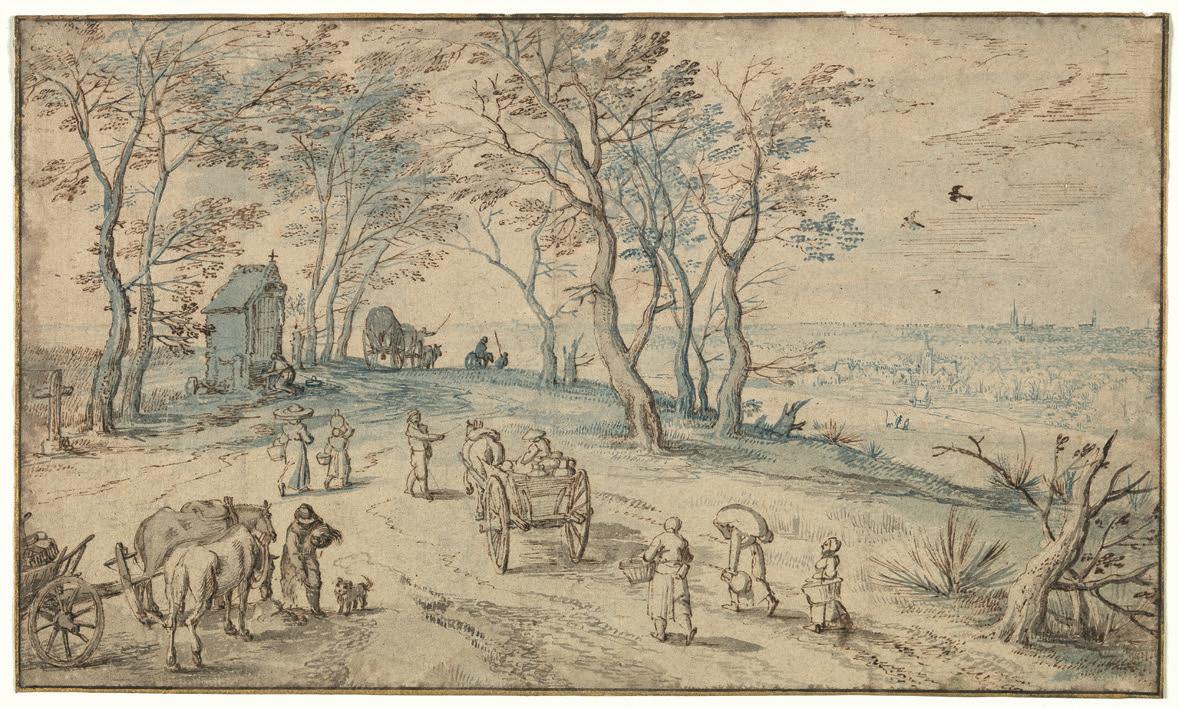
Johan Enelycke
Veronica Rafteseth
Advertising marketing@scanmagazine.co.uk
To Subscribe scanmagazine.co.uk/subscribe
Scan Magazine Ltd
3rd floor, News Building, 3 London Bridge Street, London SE1 9SG, United Kingdom
www.scanclientpublishing.com
info@scanmagazine.co.uk
www.scanmagazine.co.uk
© All rights reserved. Material contained in this publication may not be reproduced, in whole or in part, without prior permission of Scan Magazine Ltd.
Scan Magazine® is a registered trademark of Scan Magazine Ltd.
This magazine contains advertorials/ promotional articles

